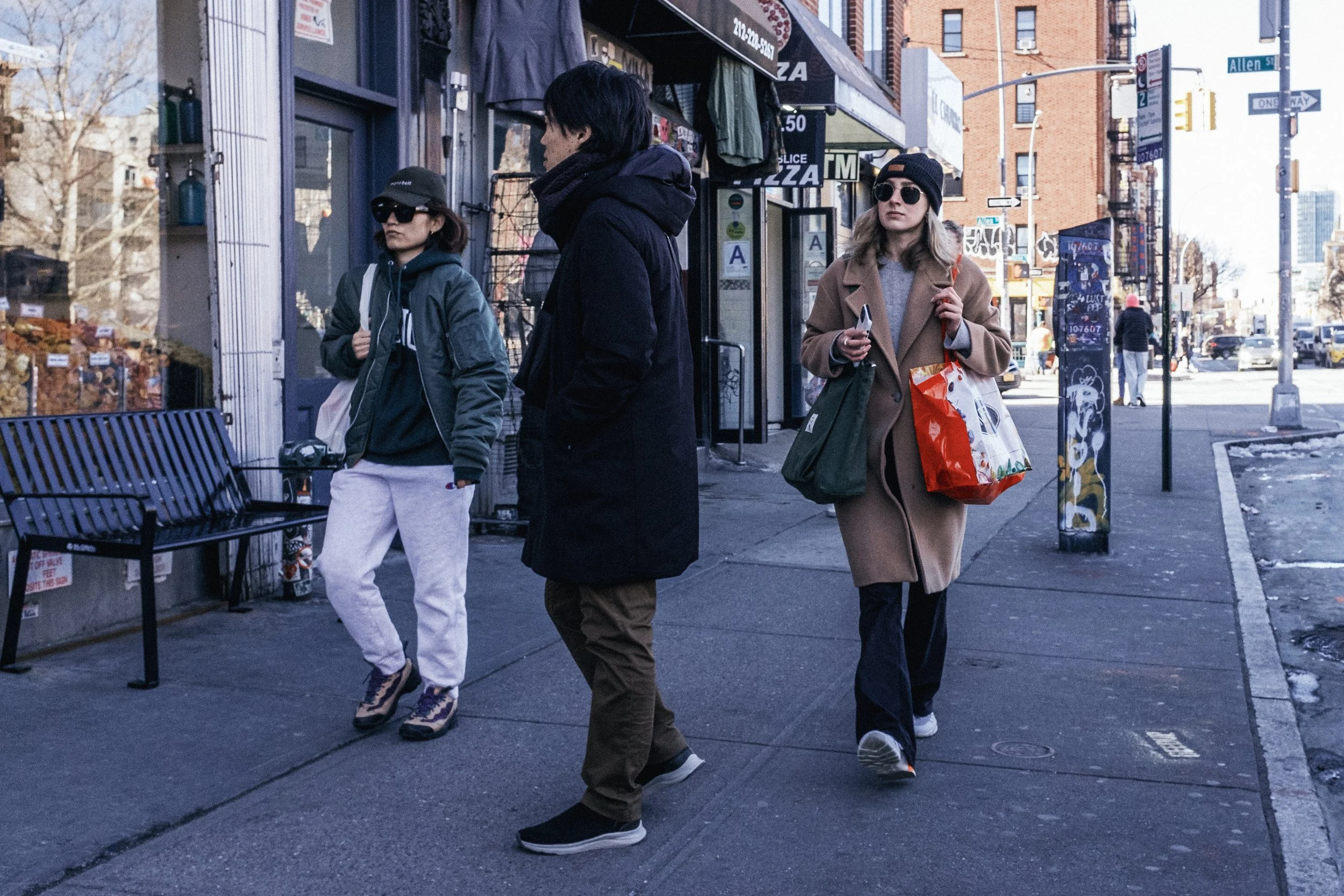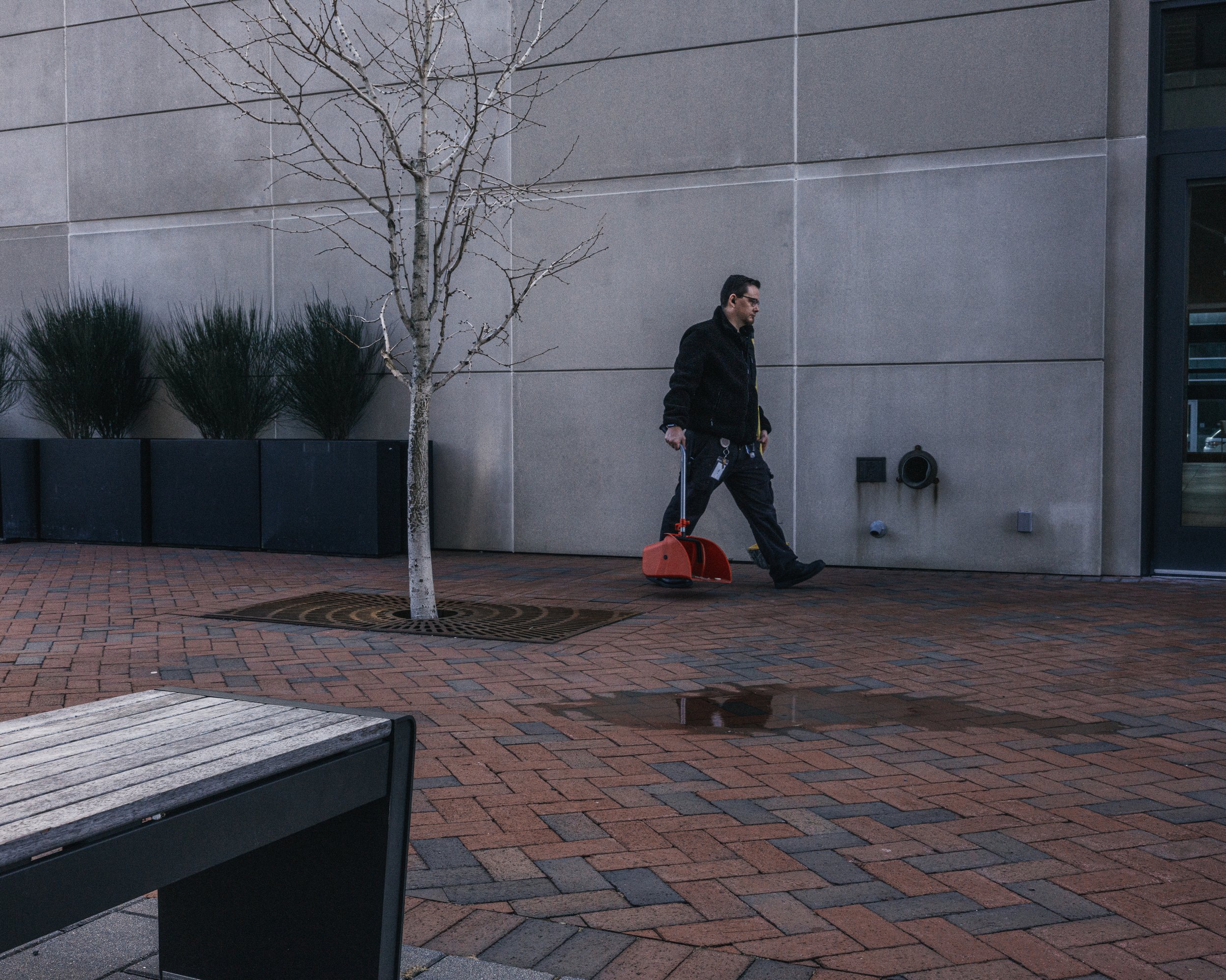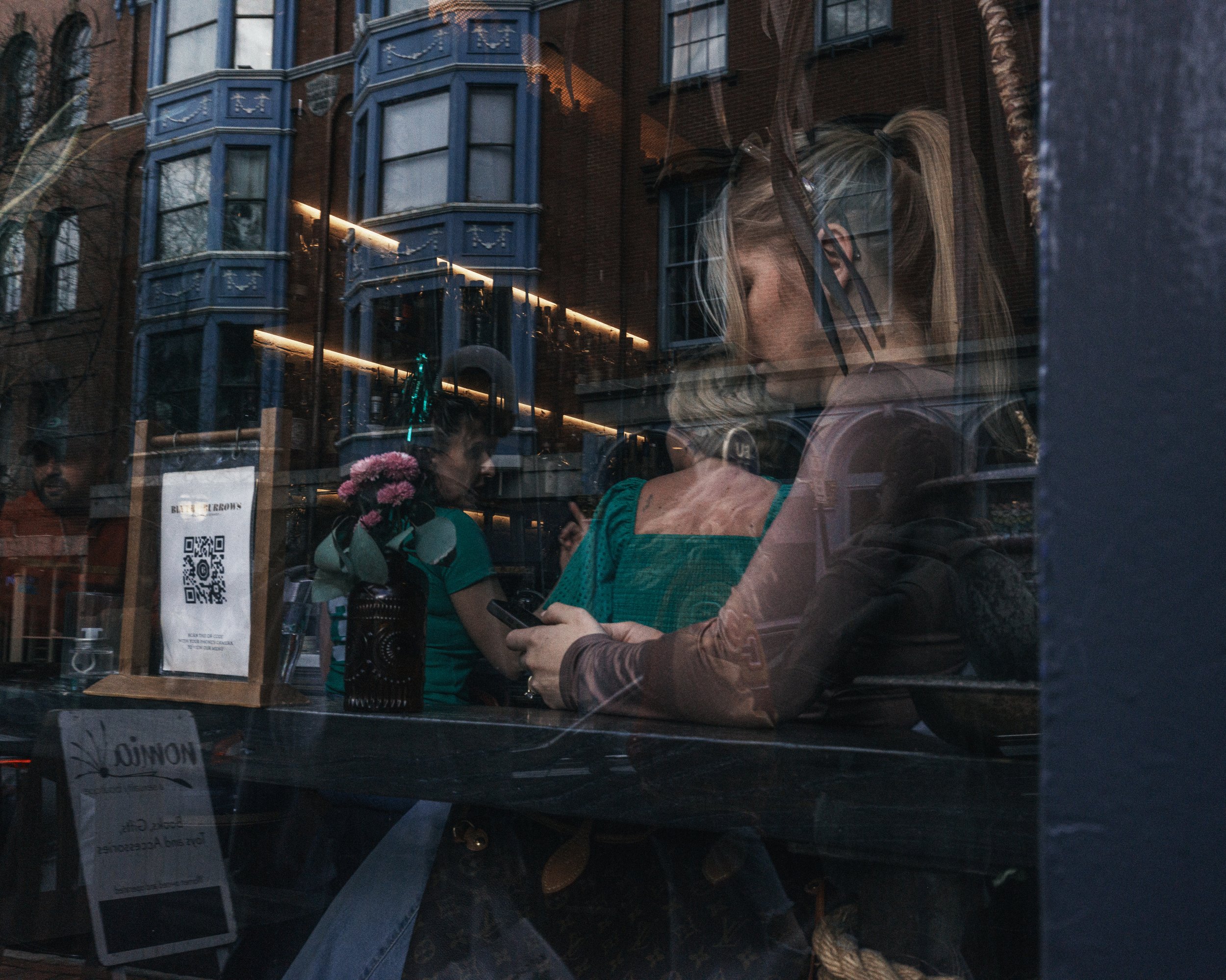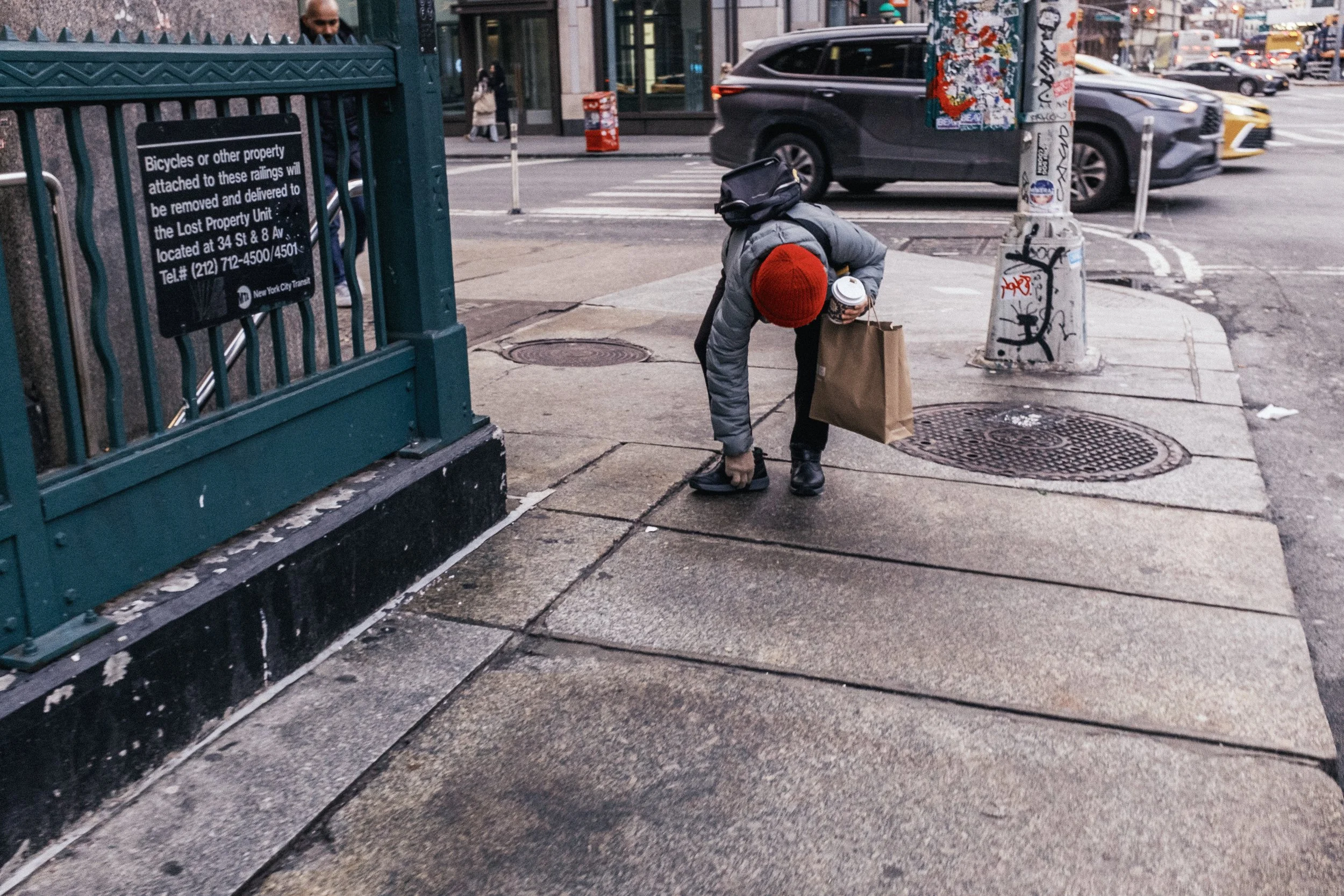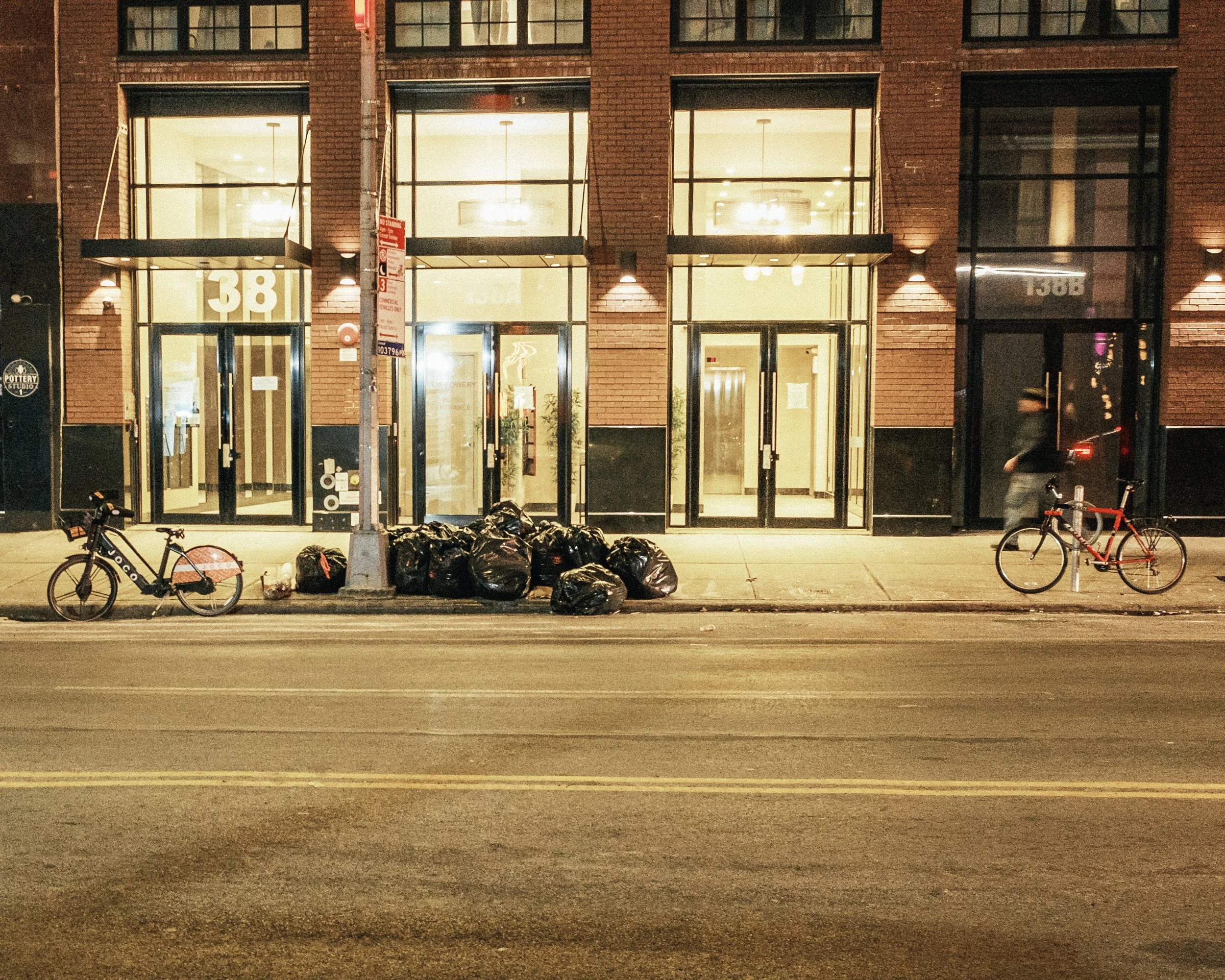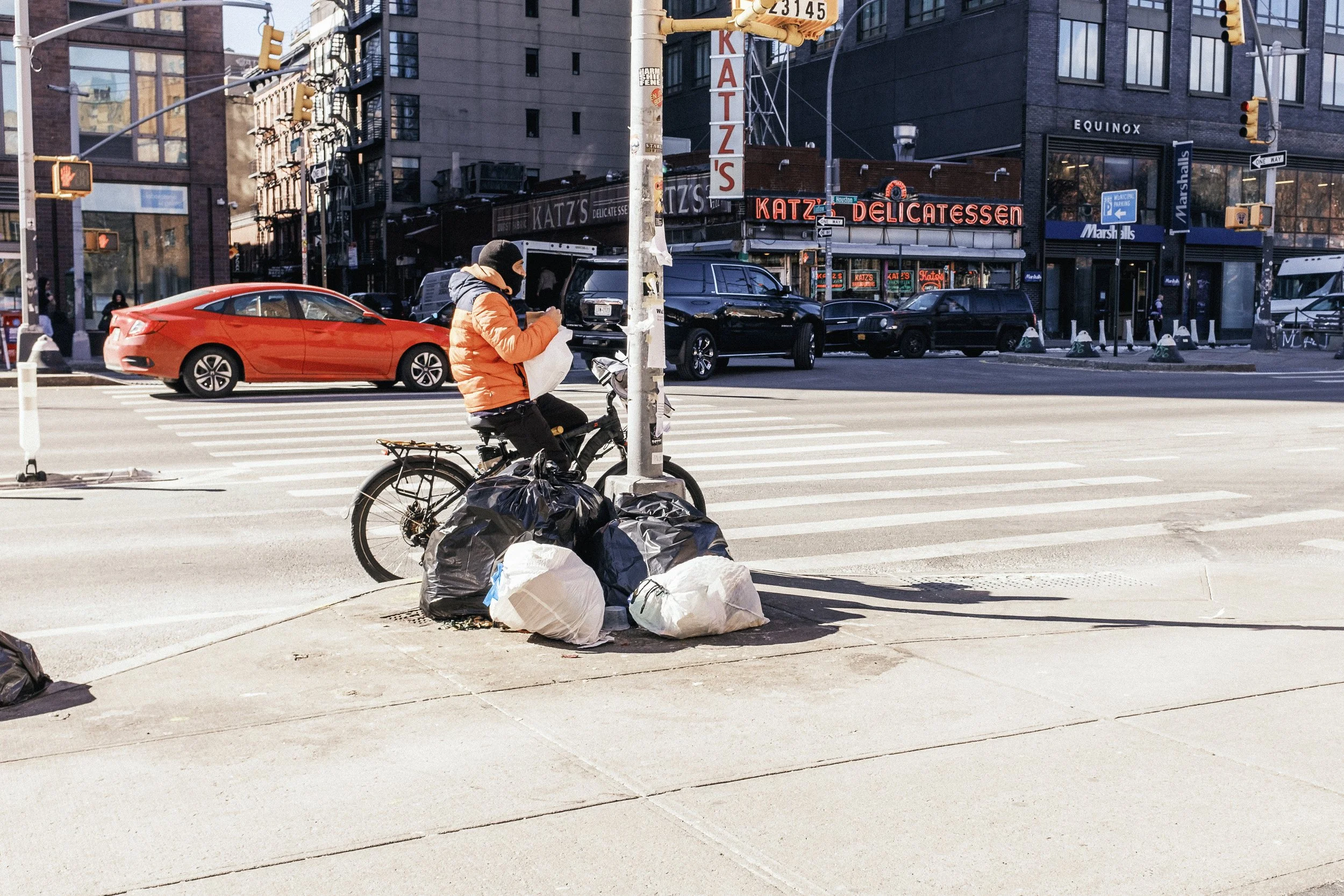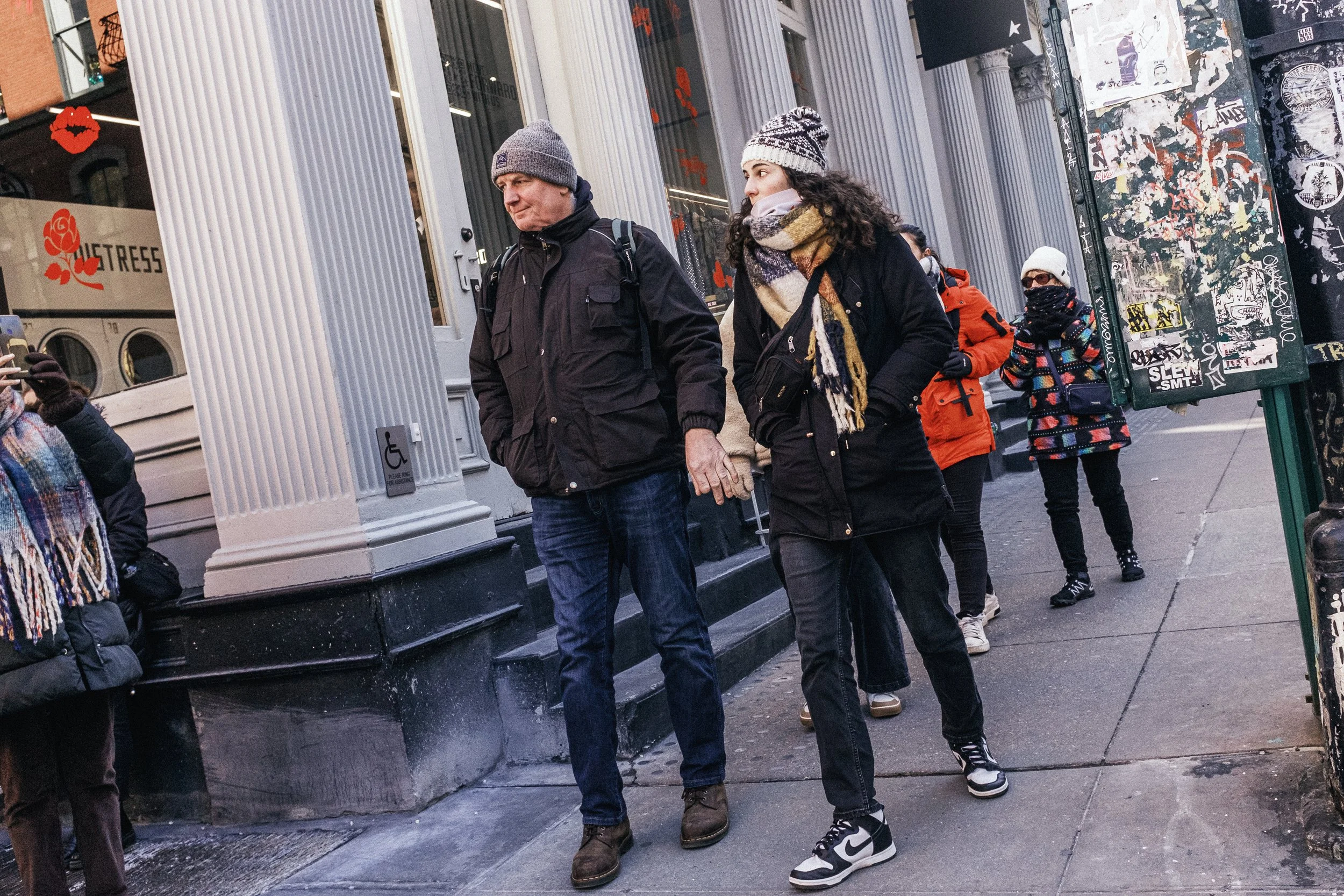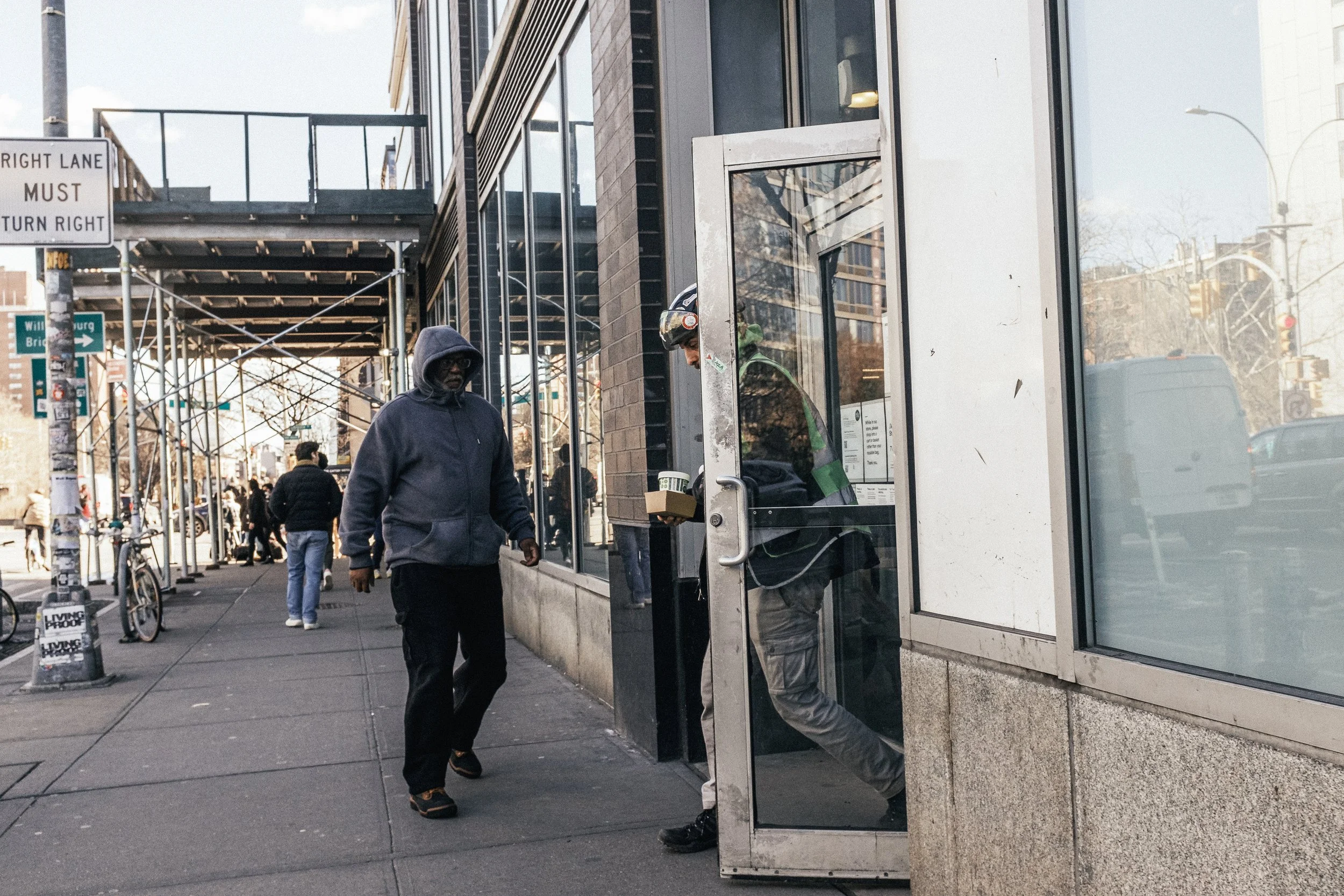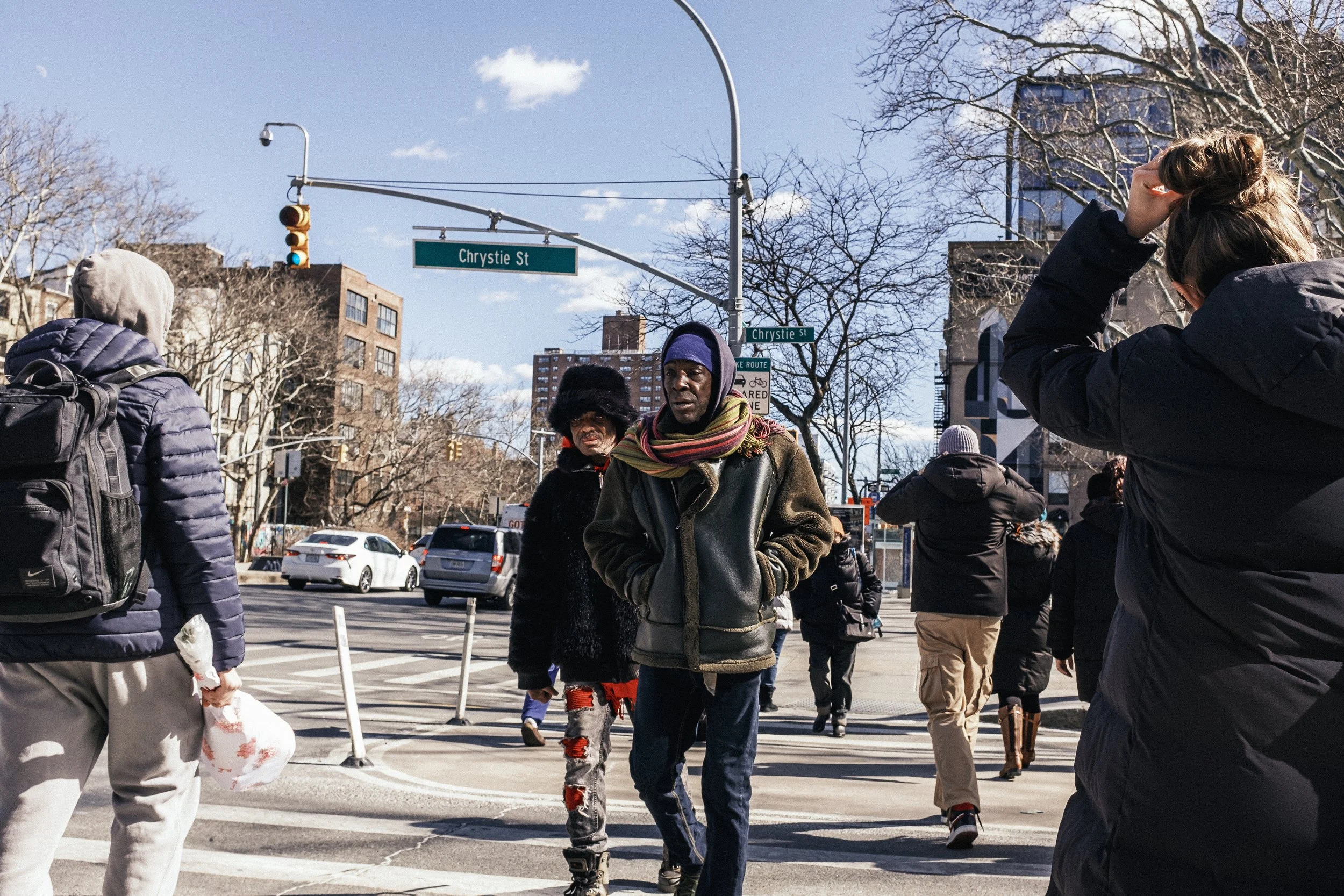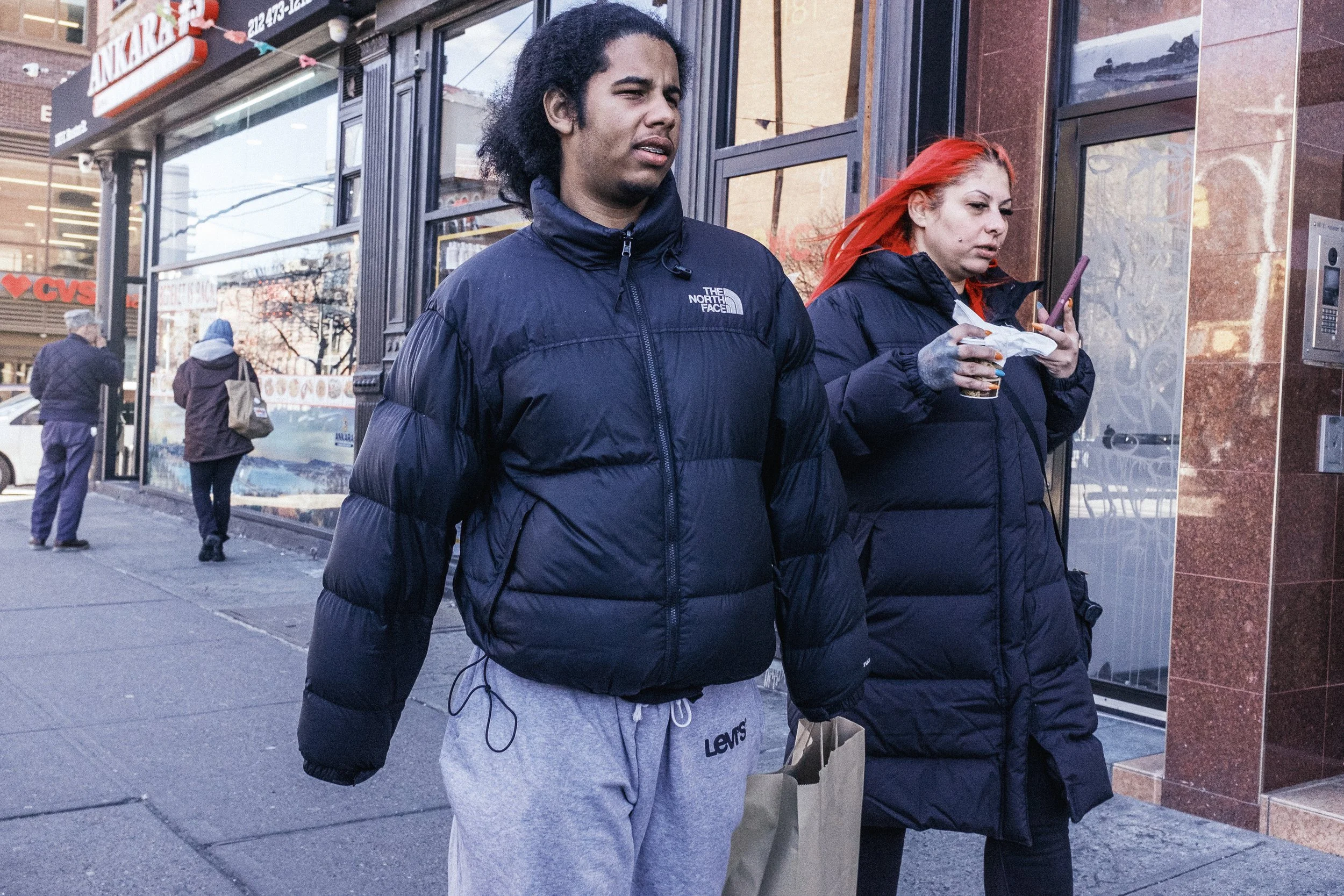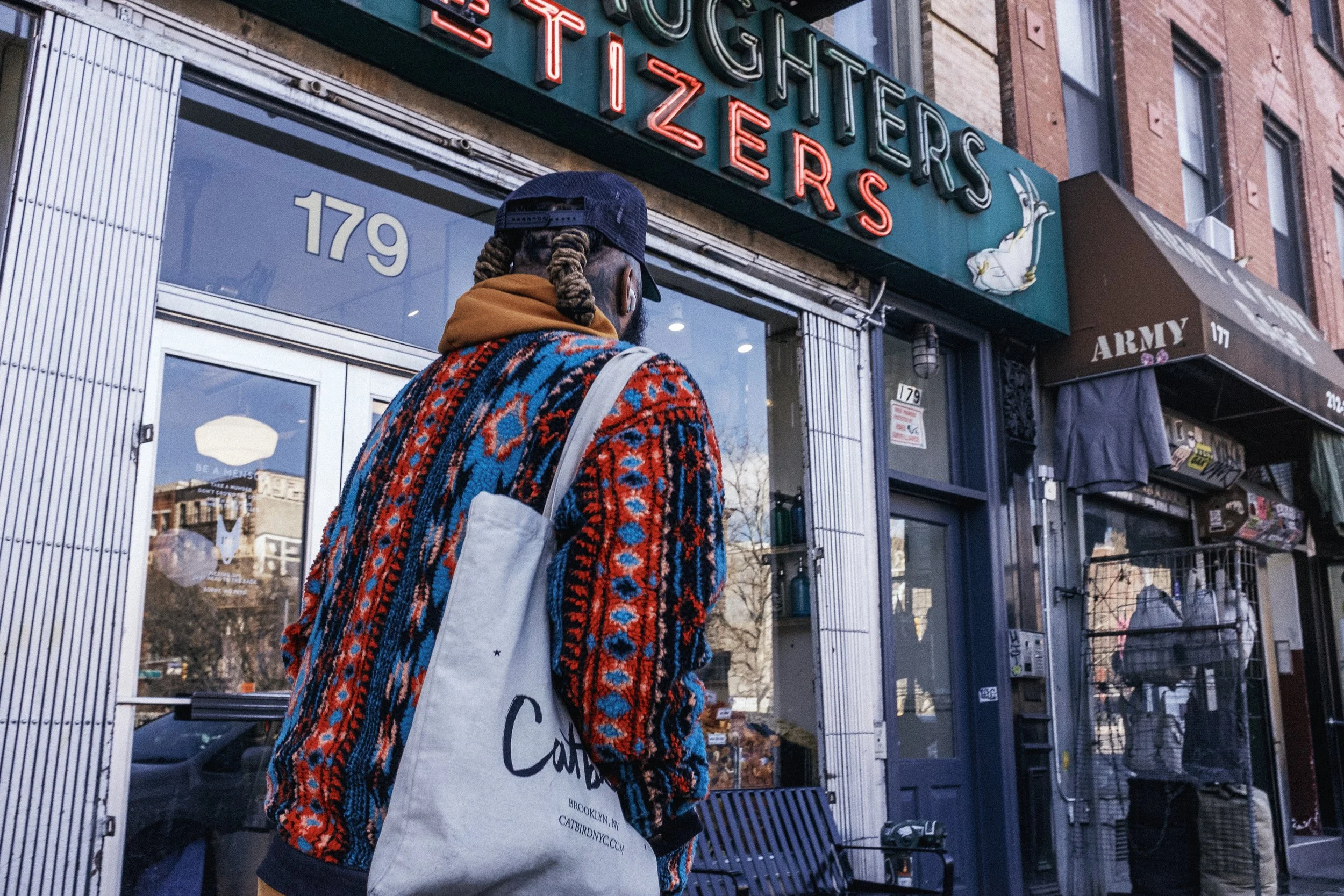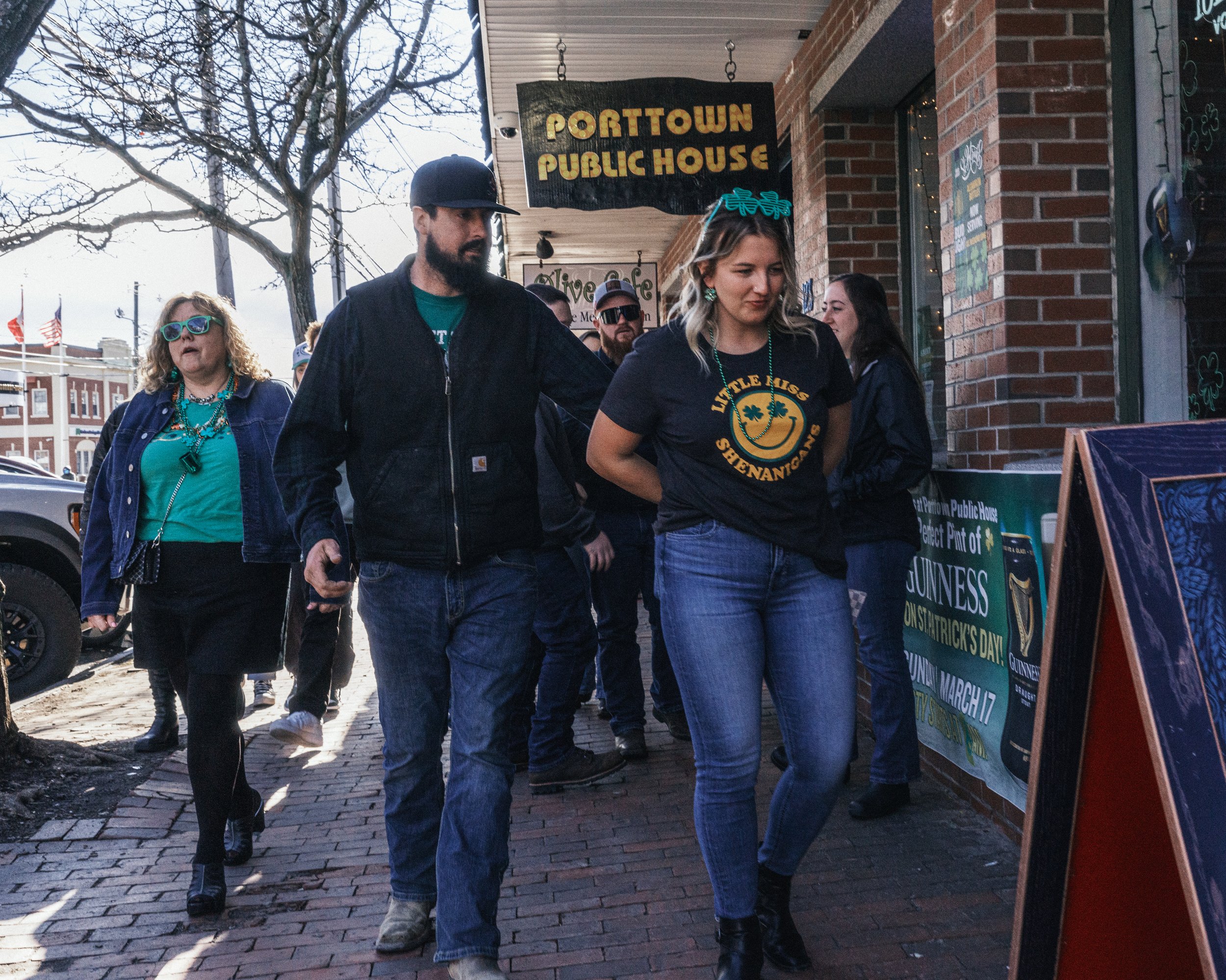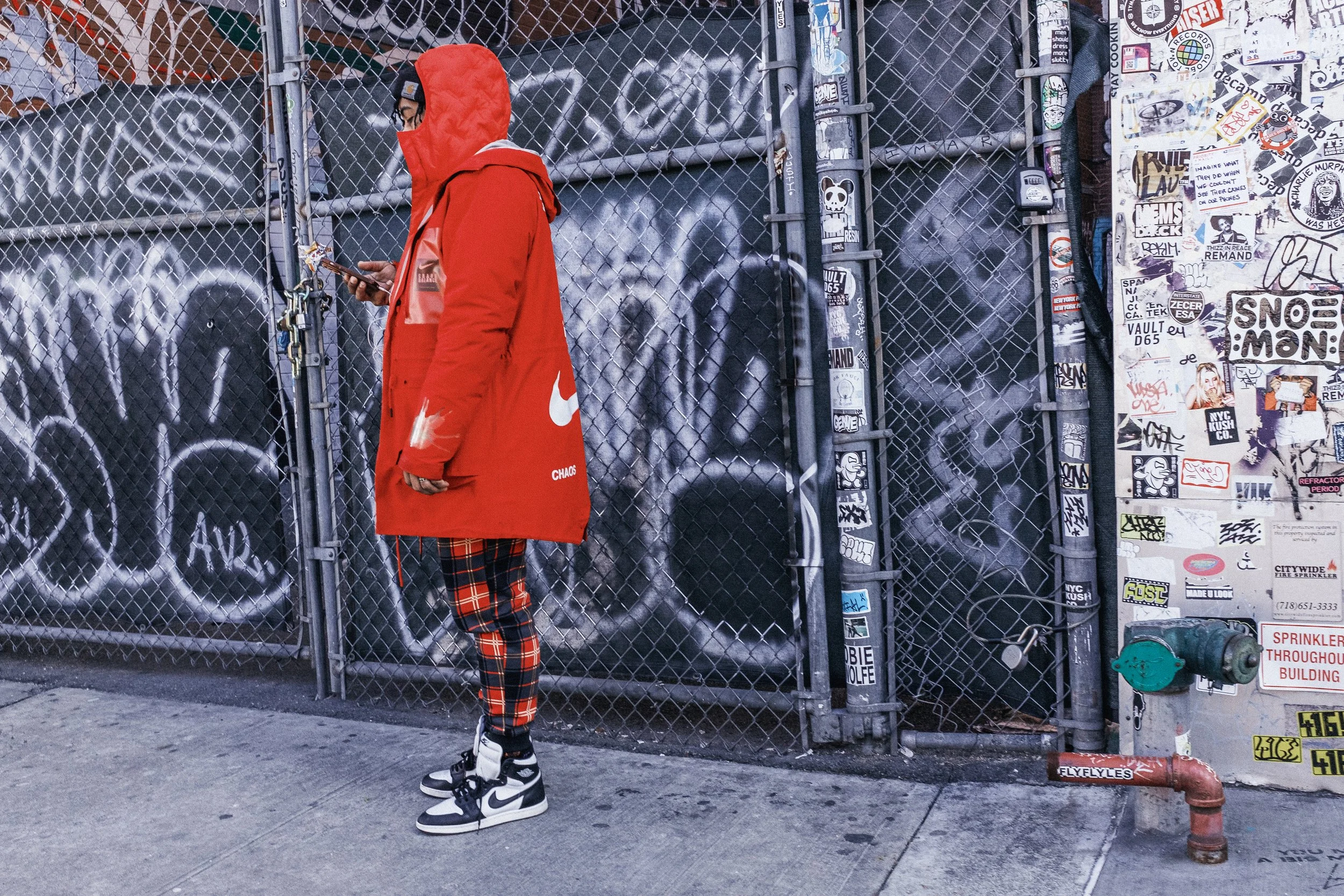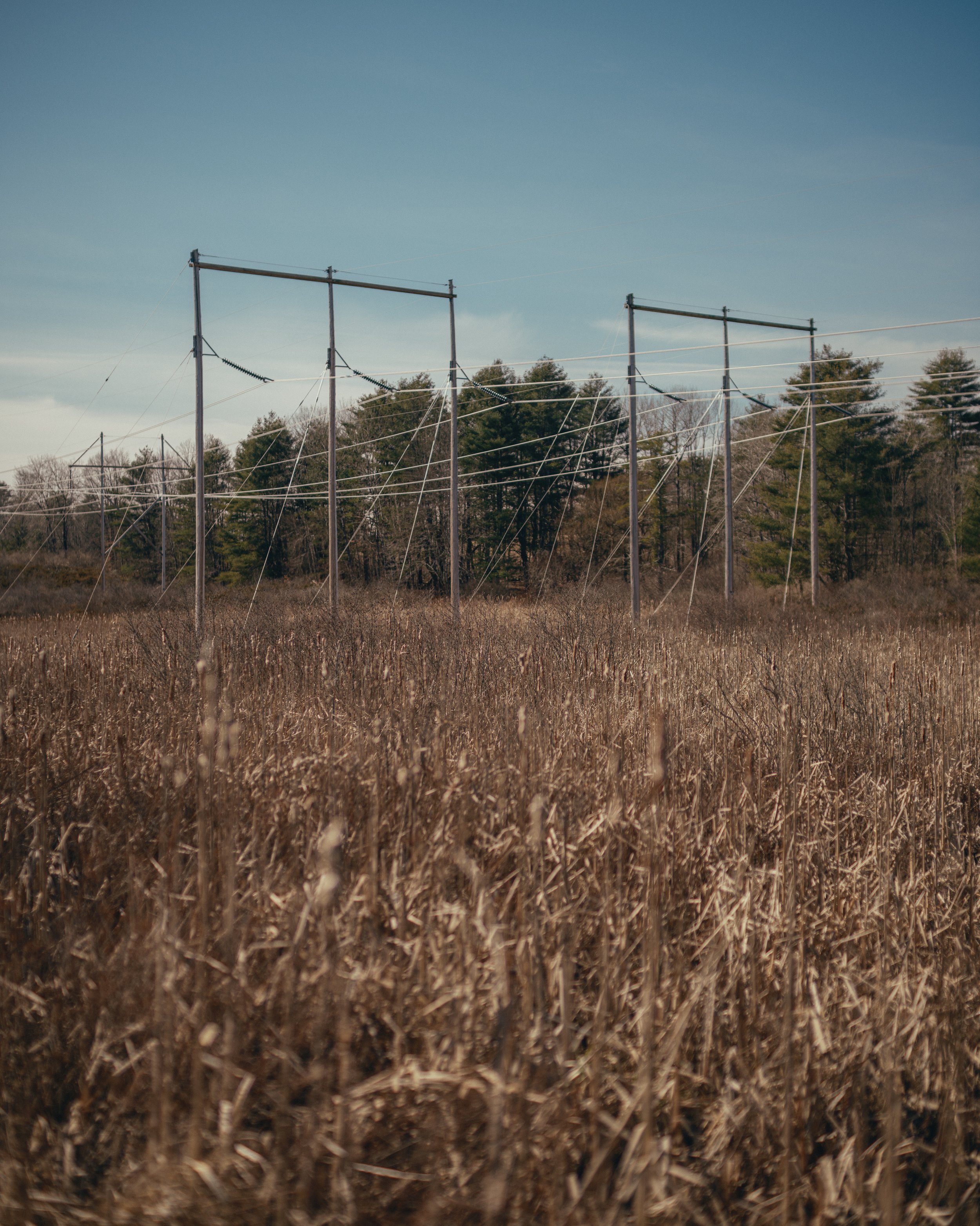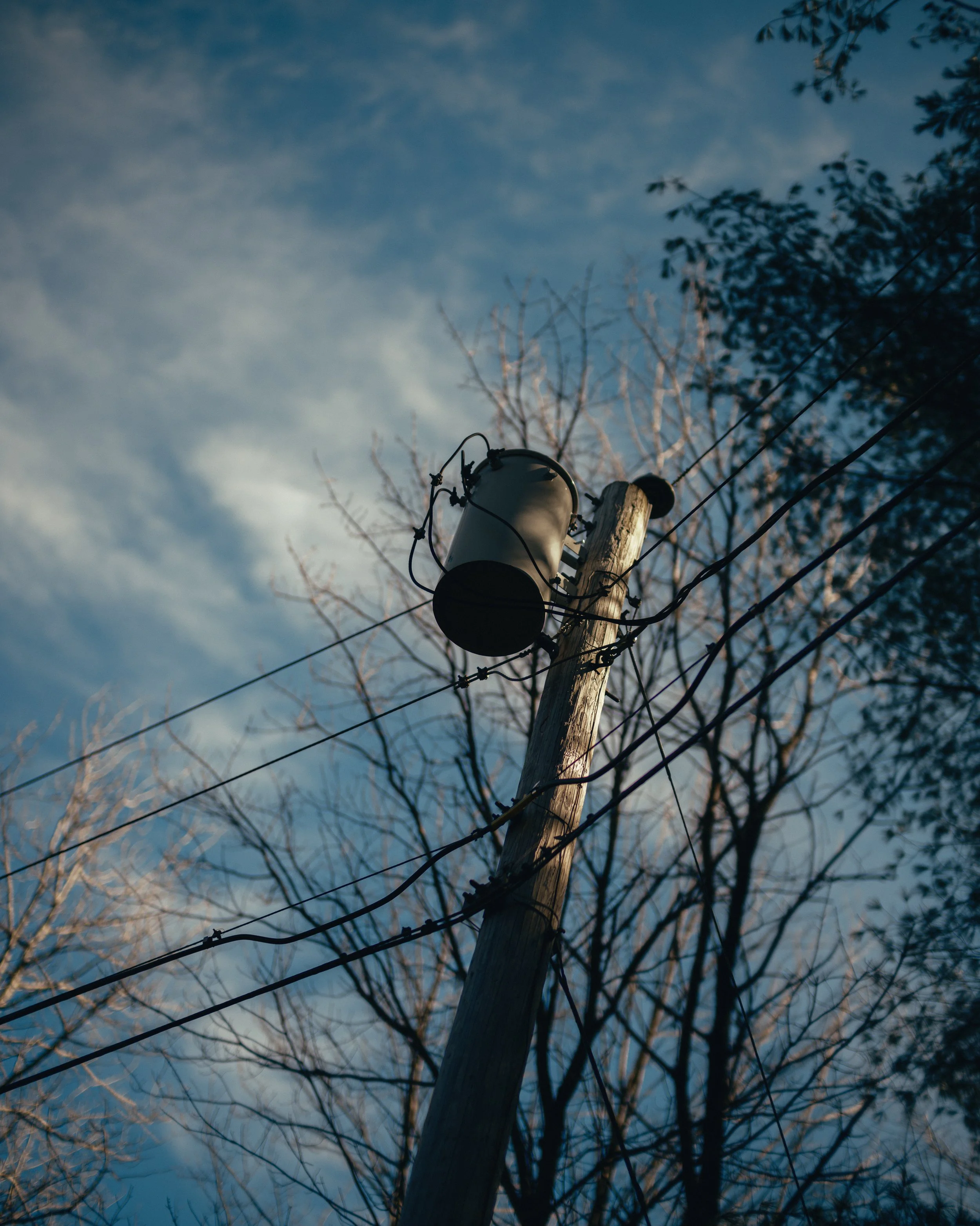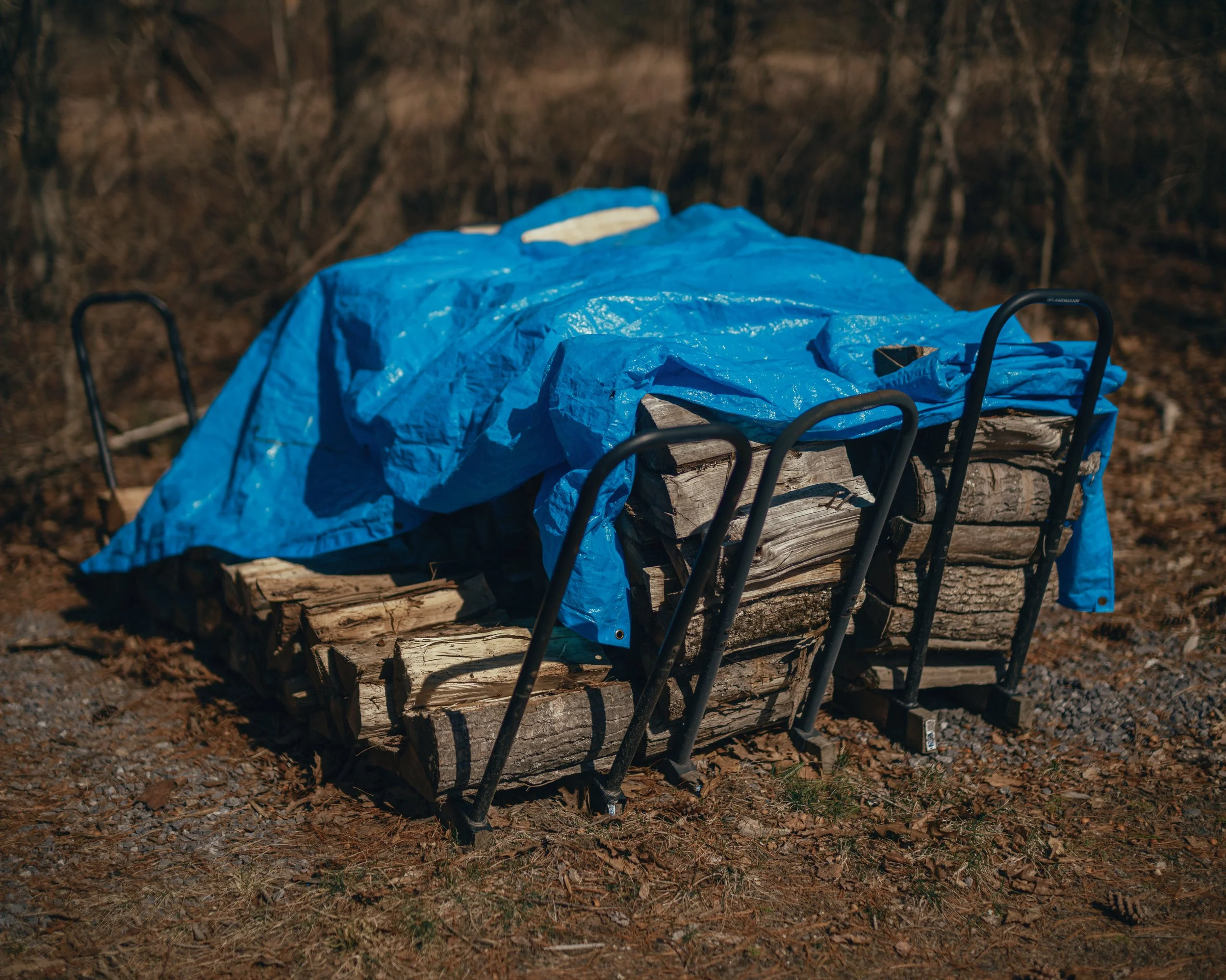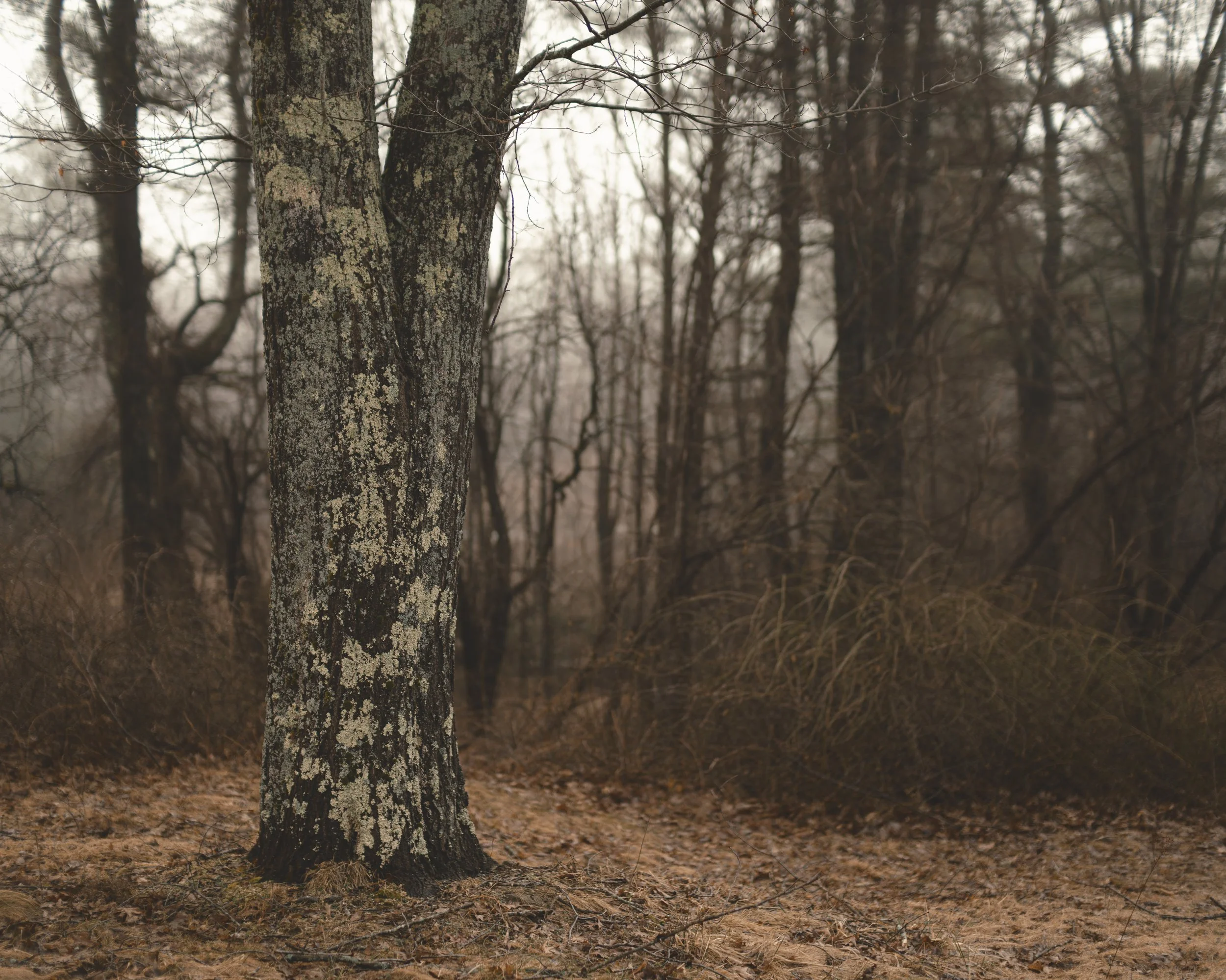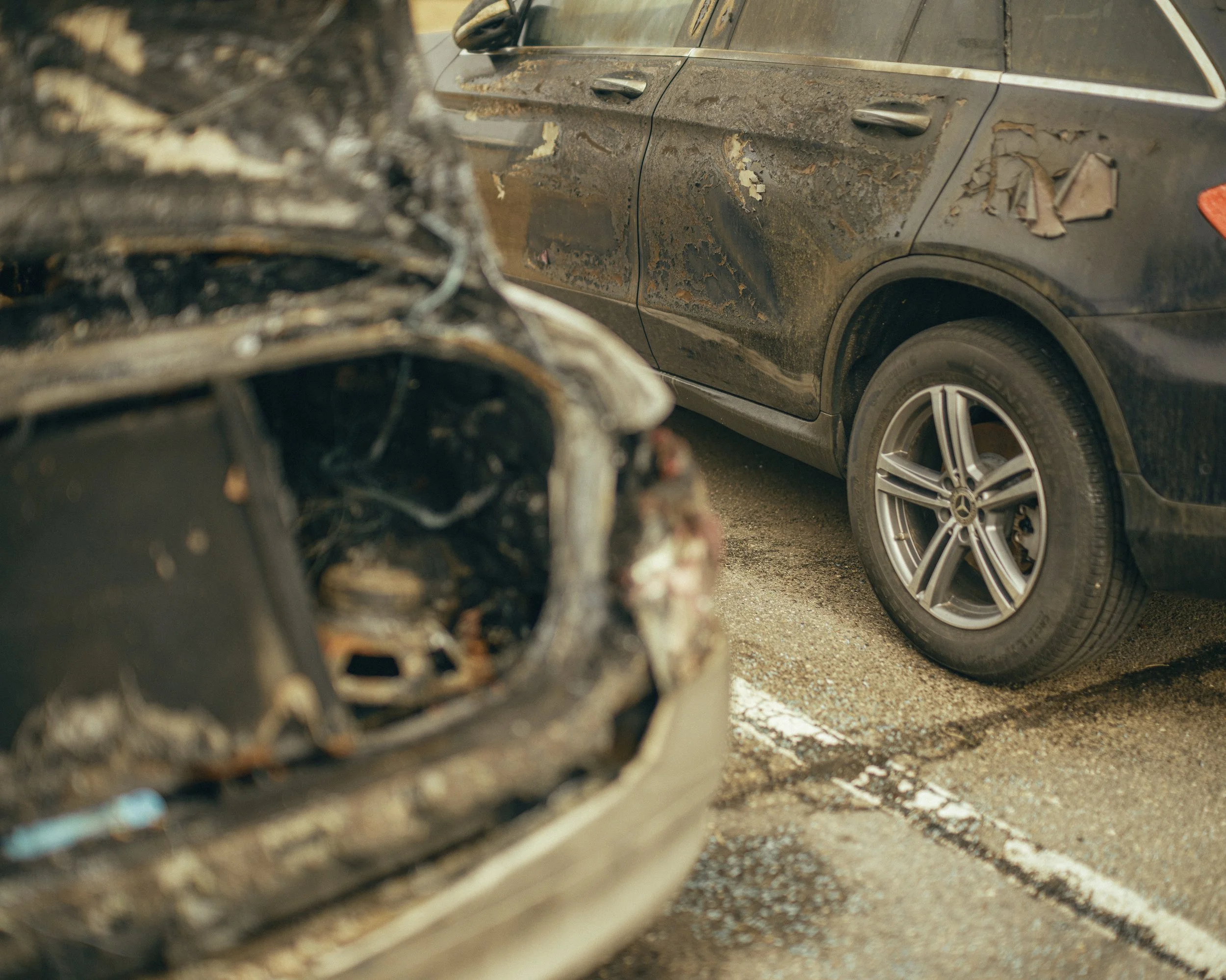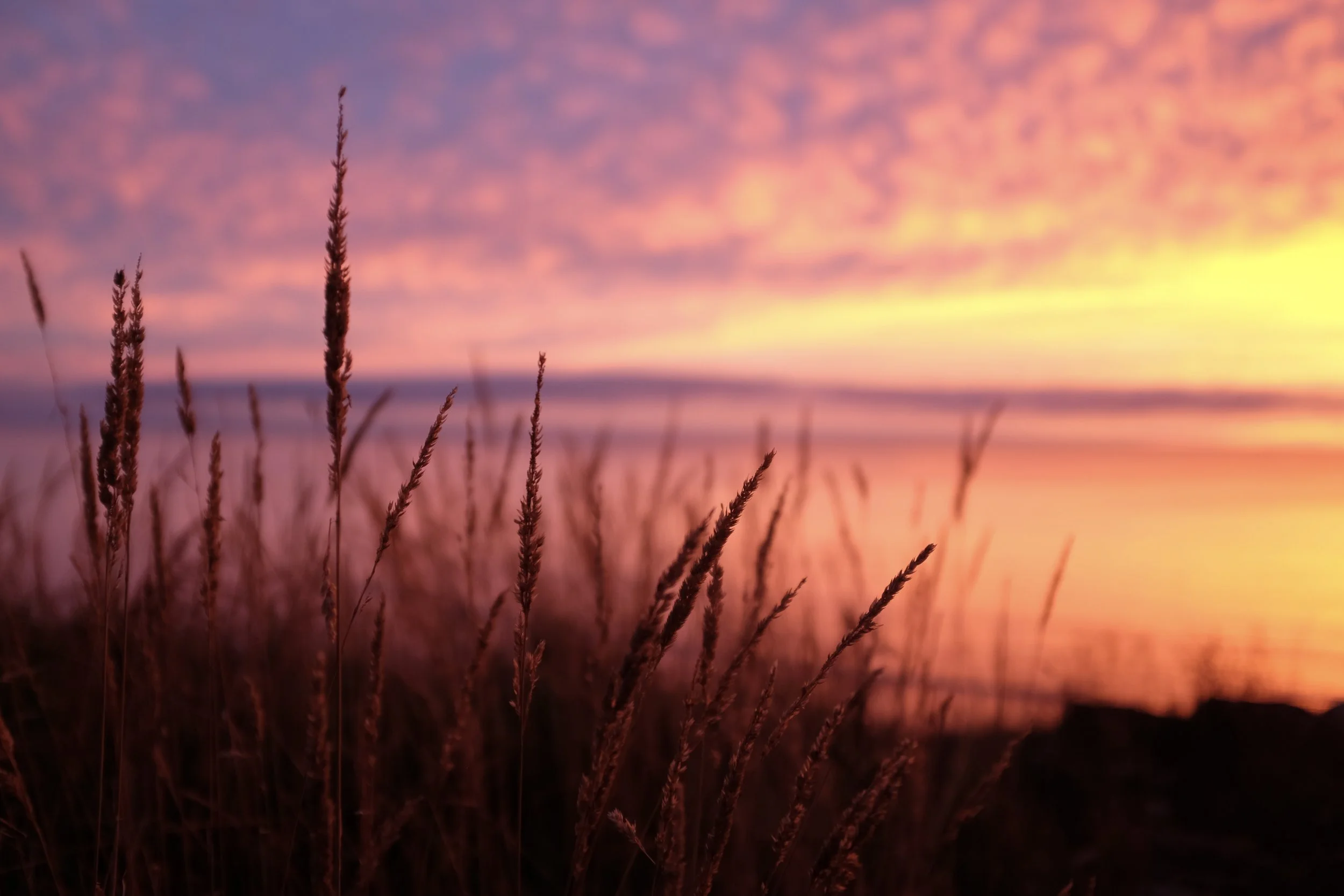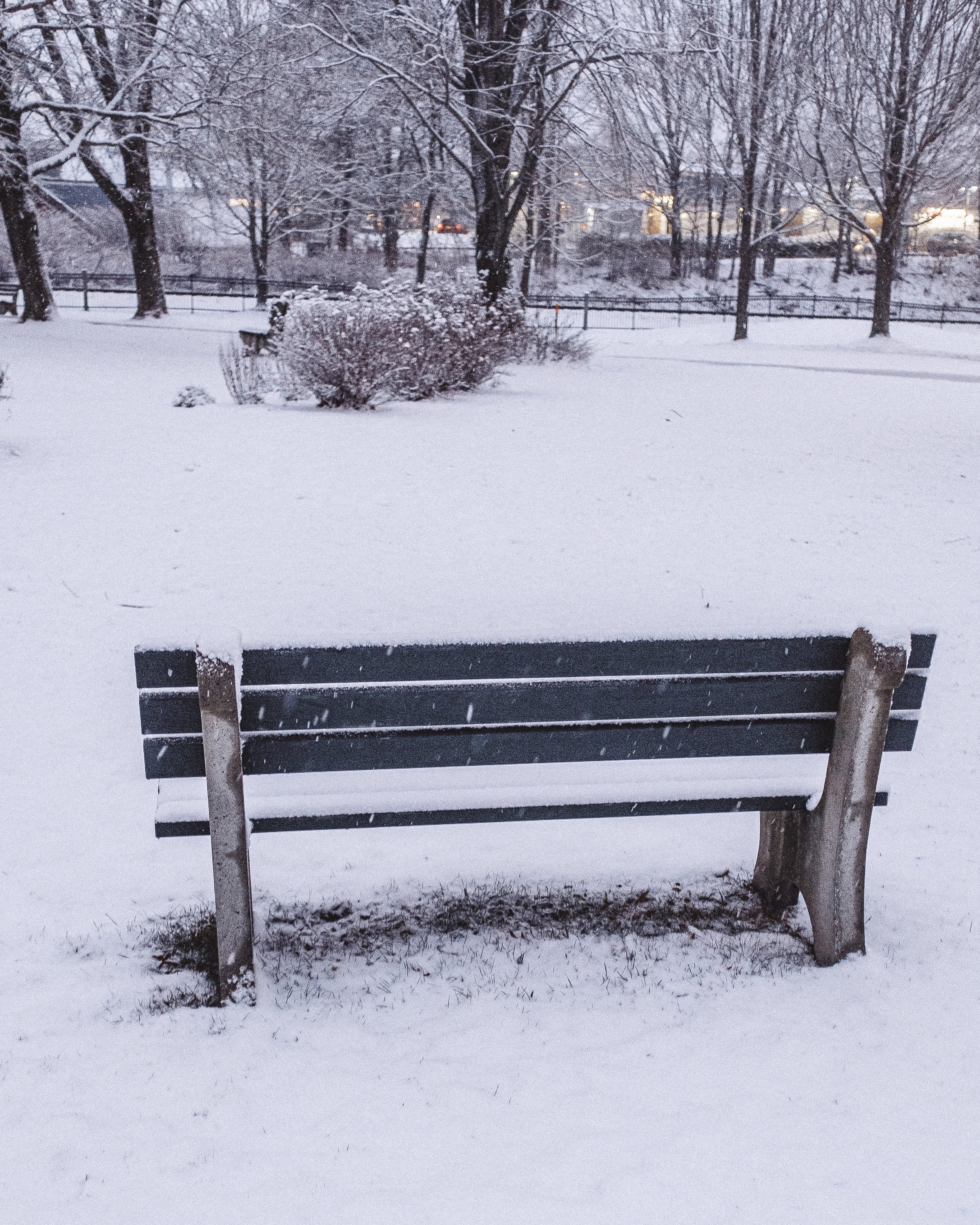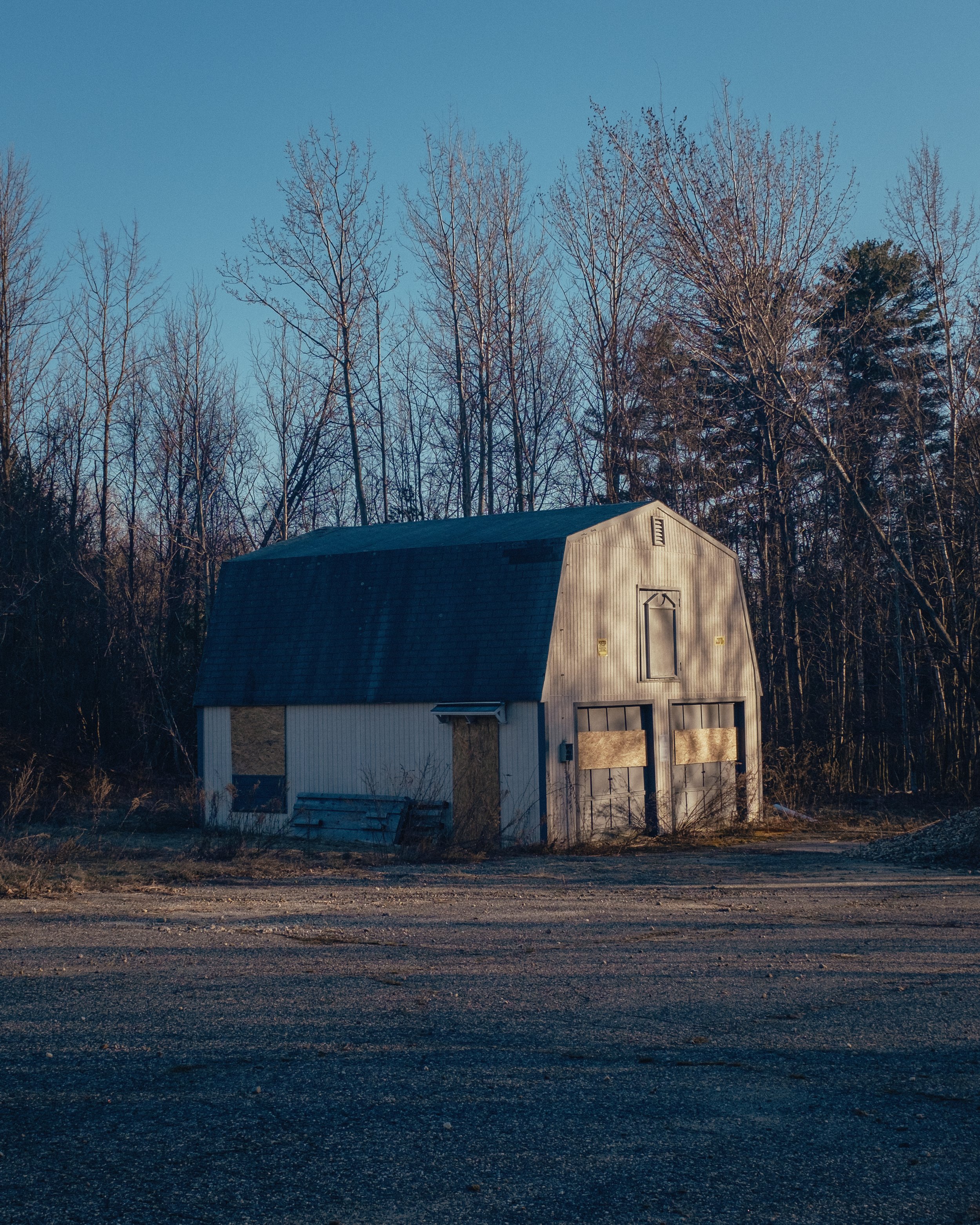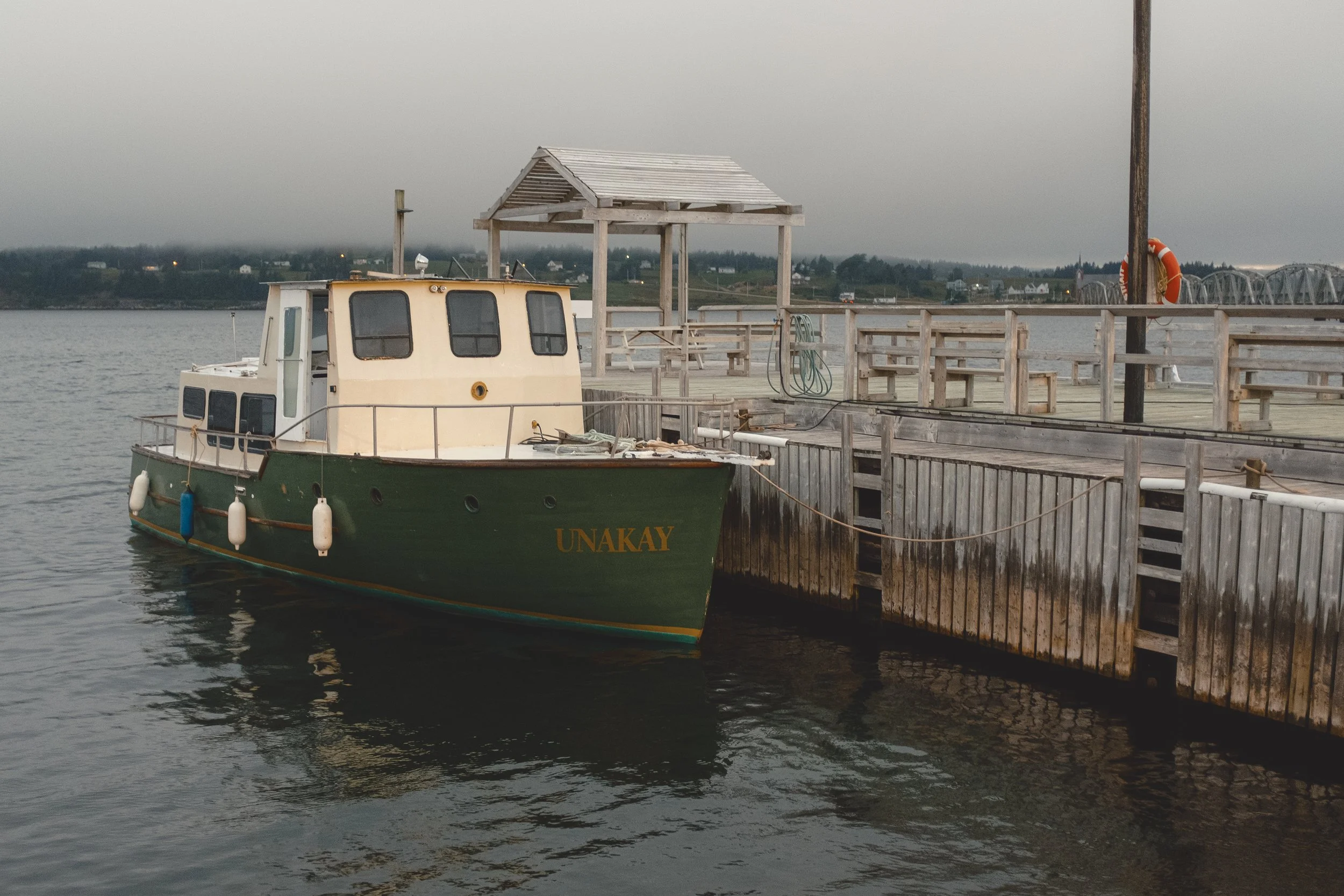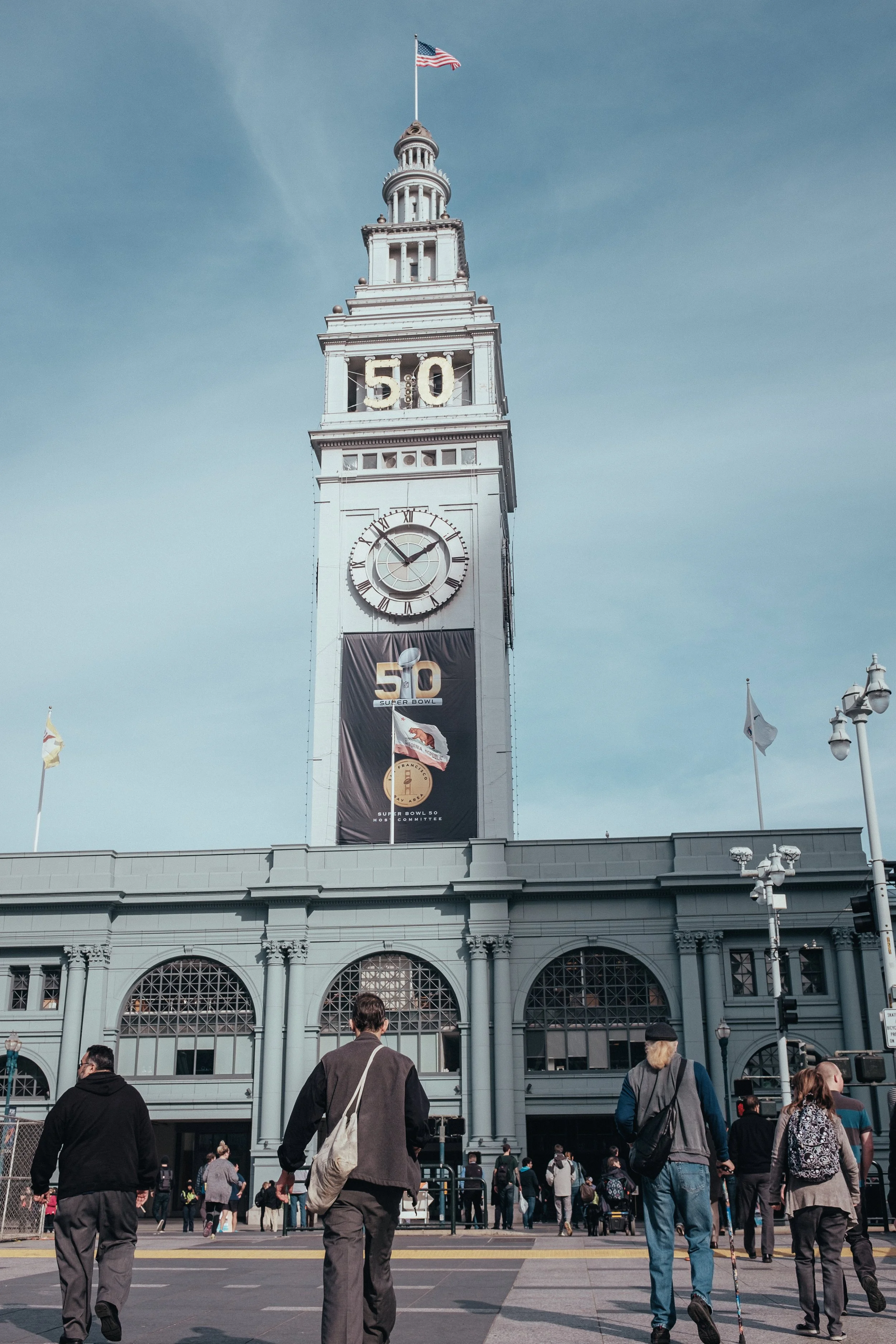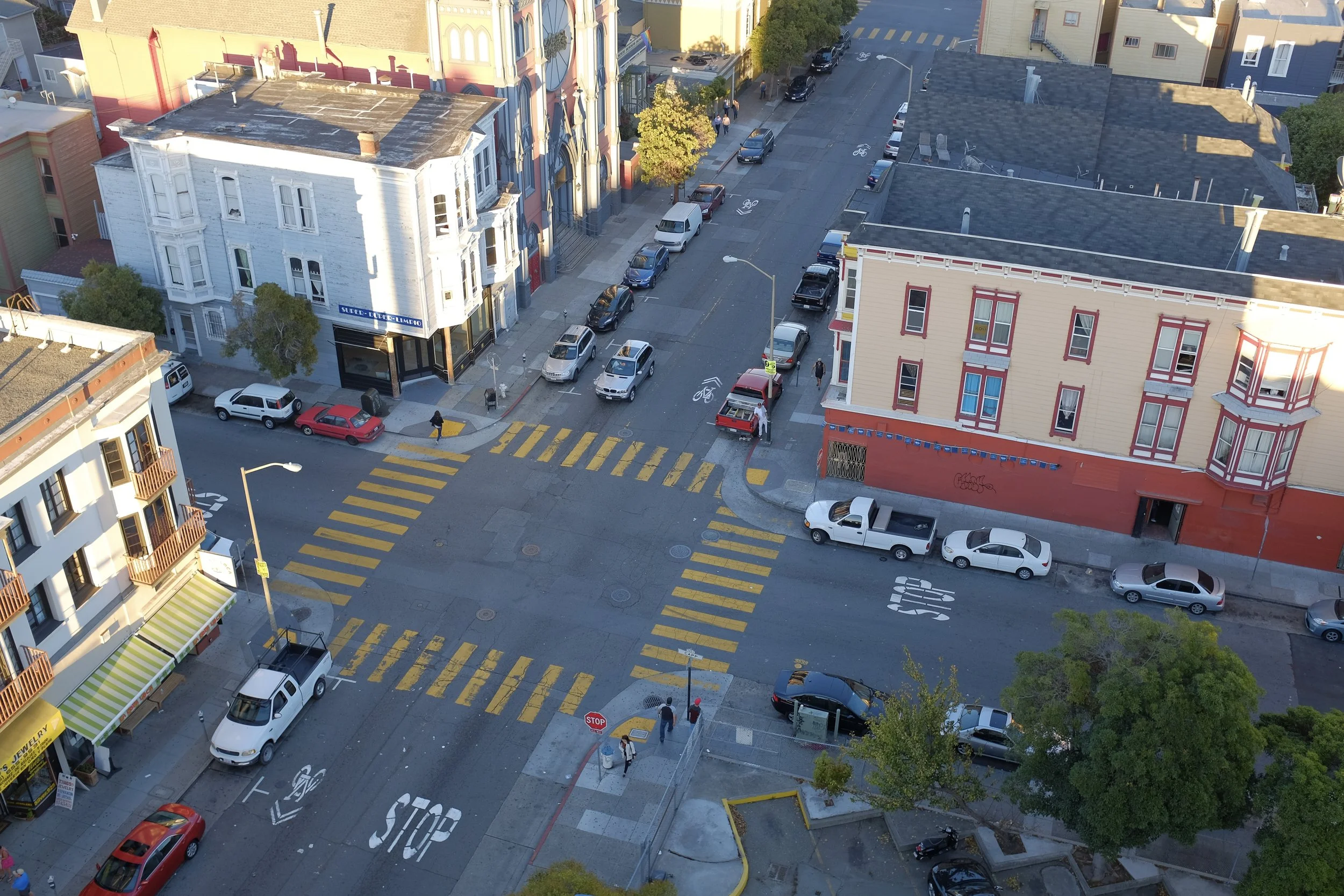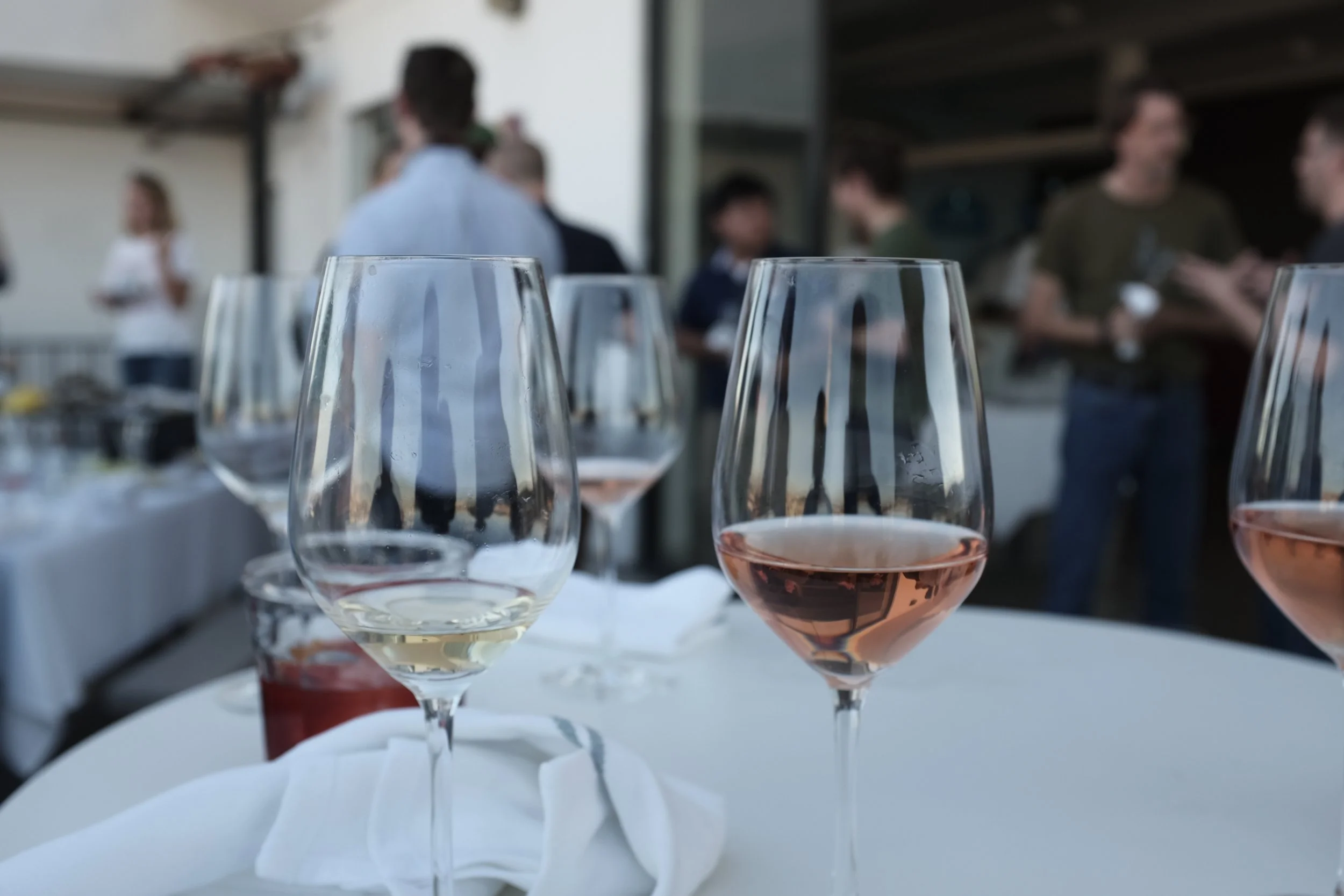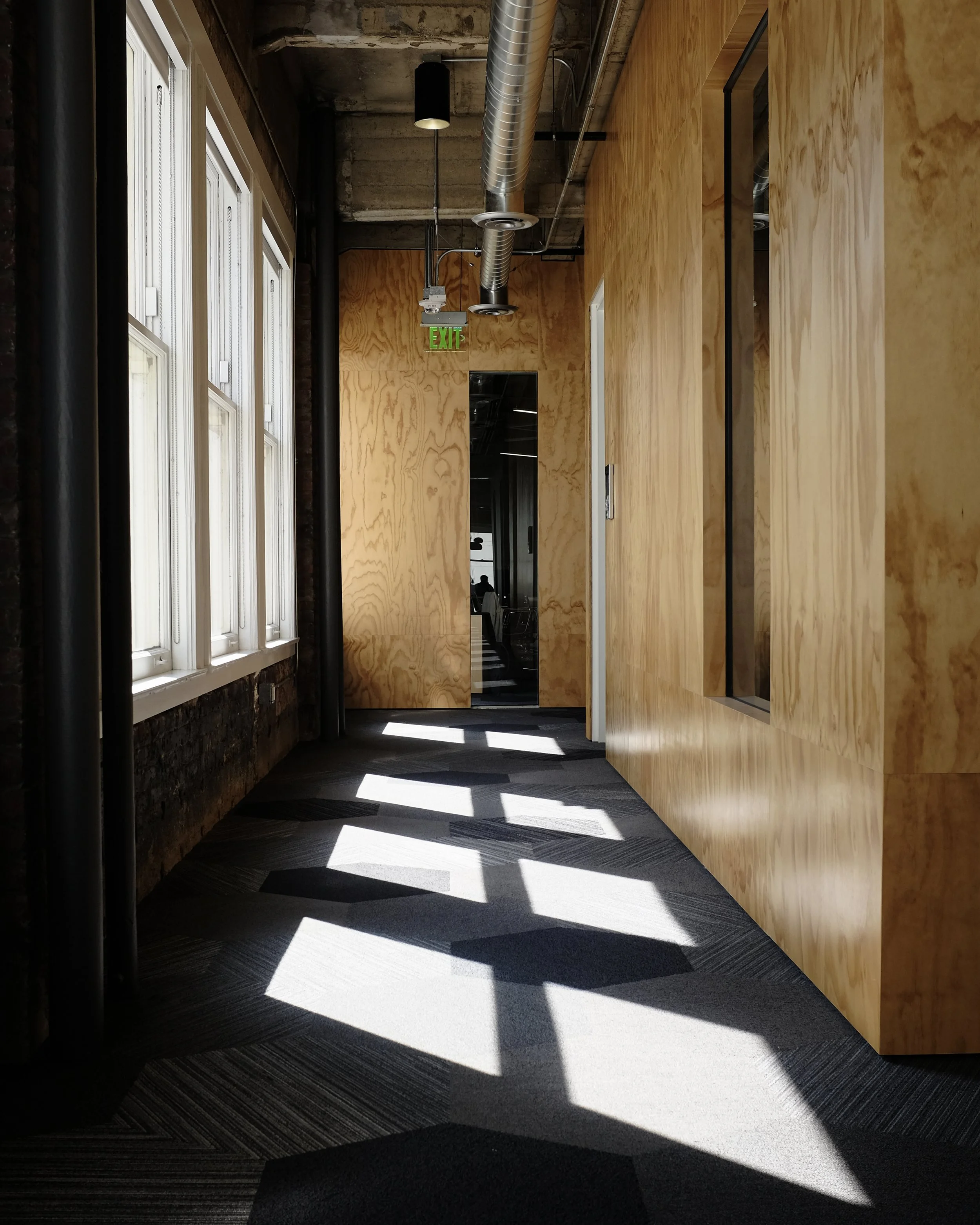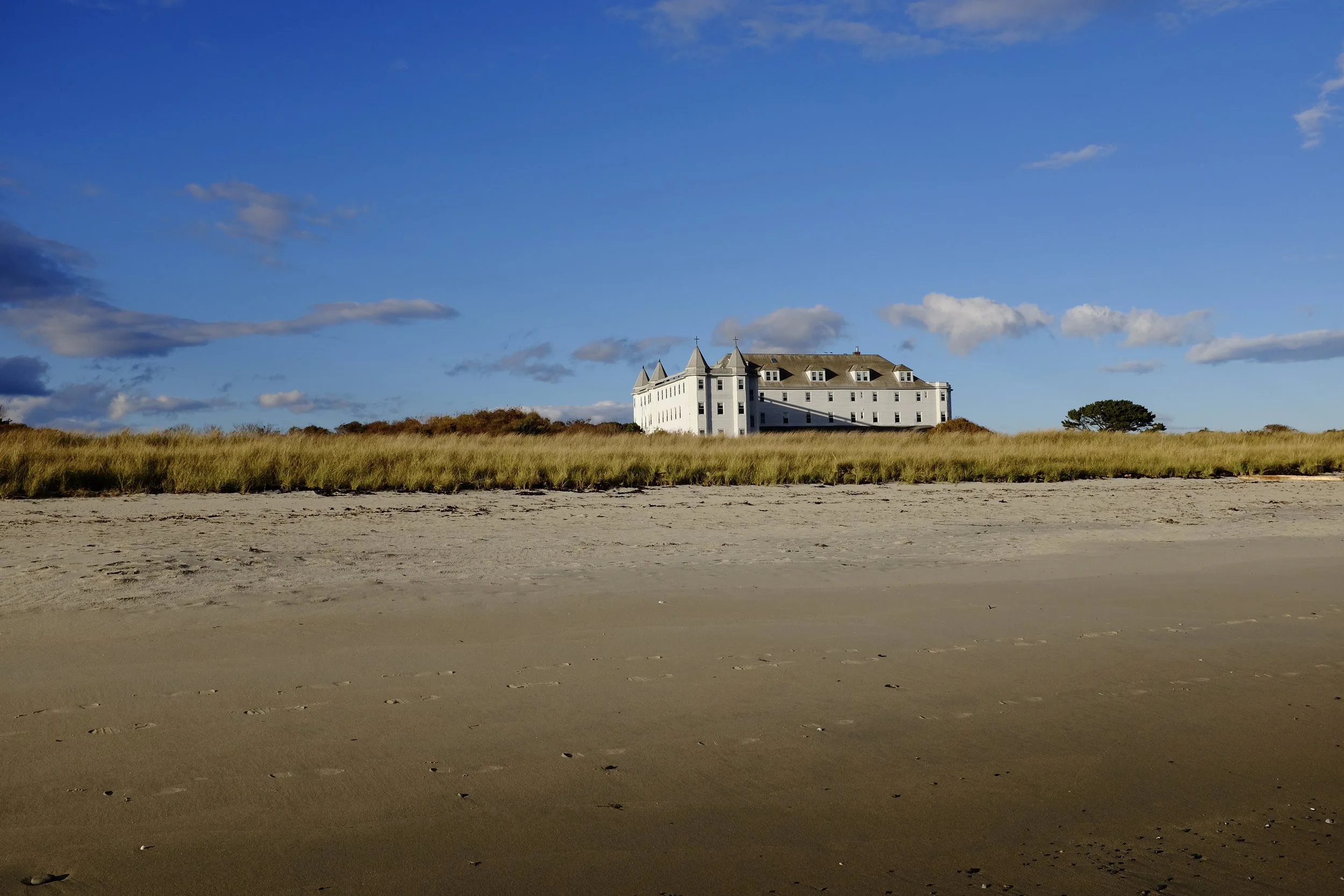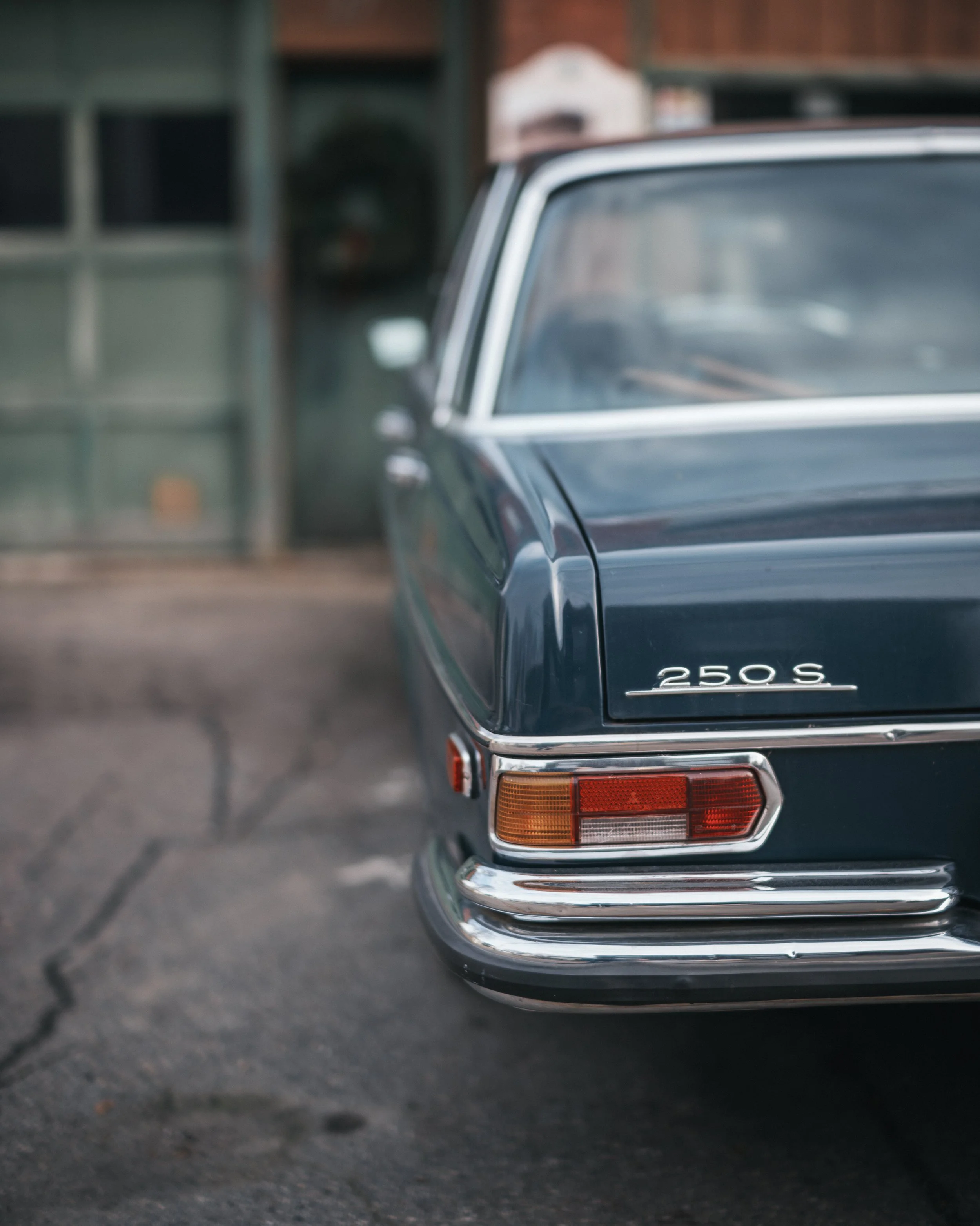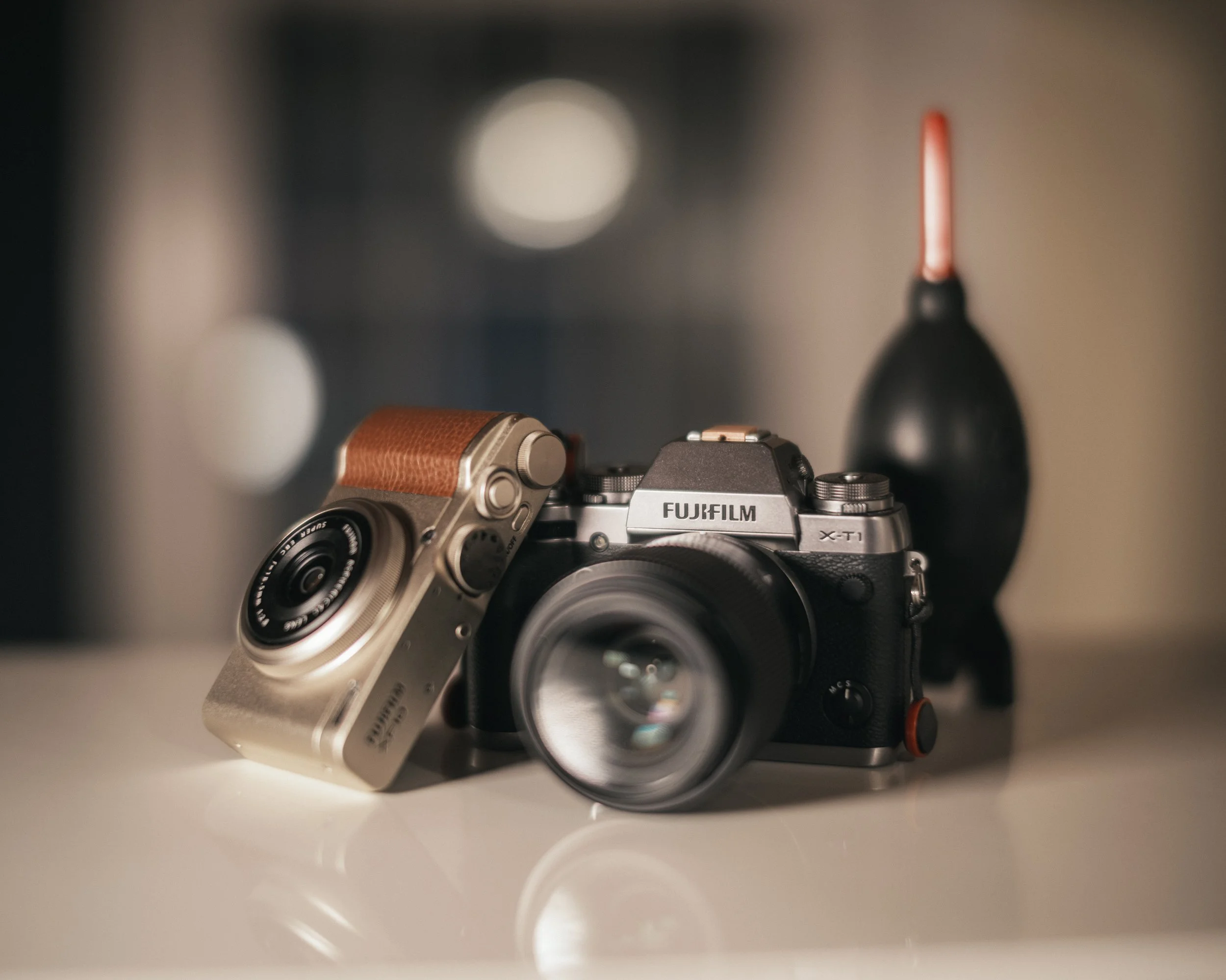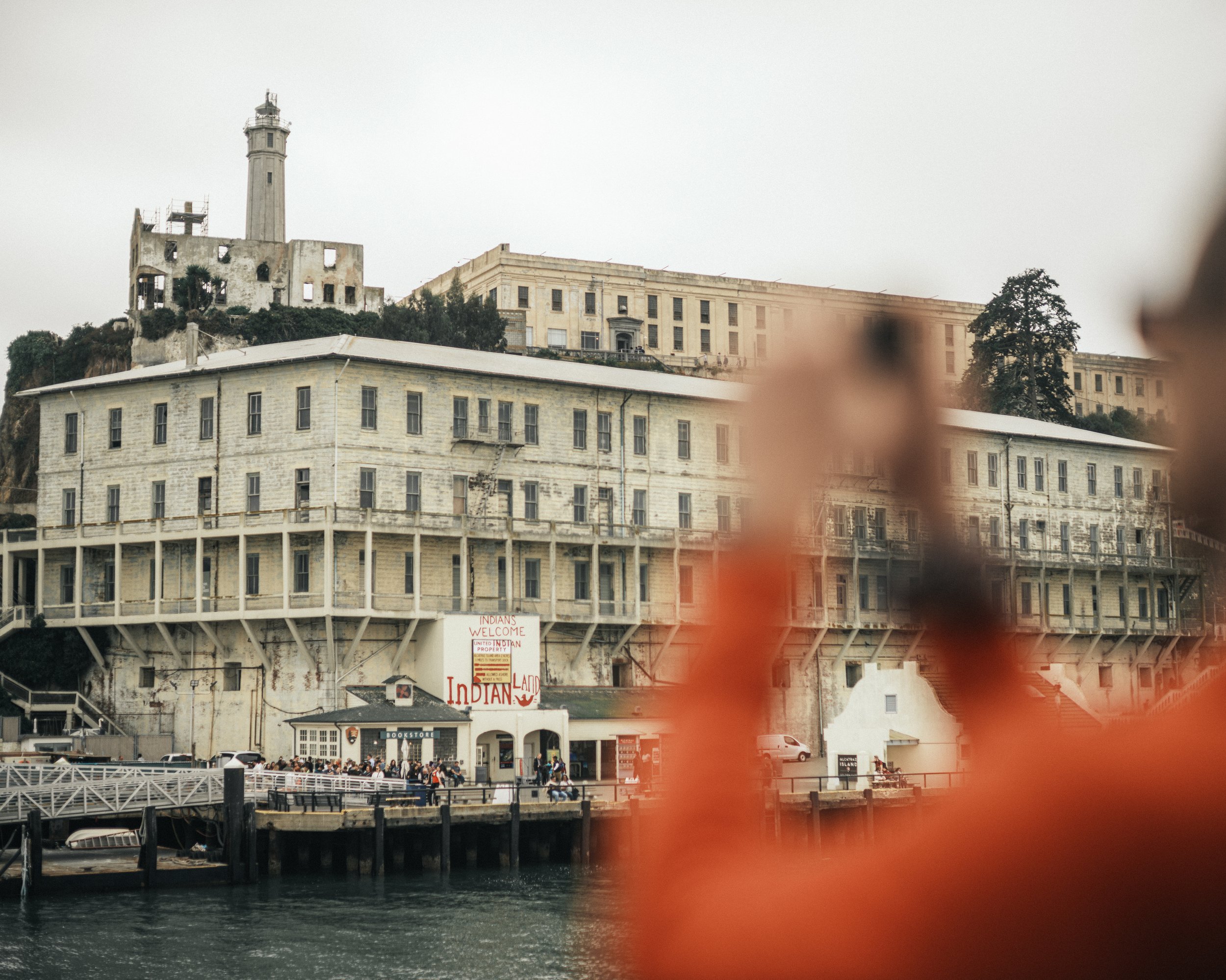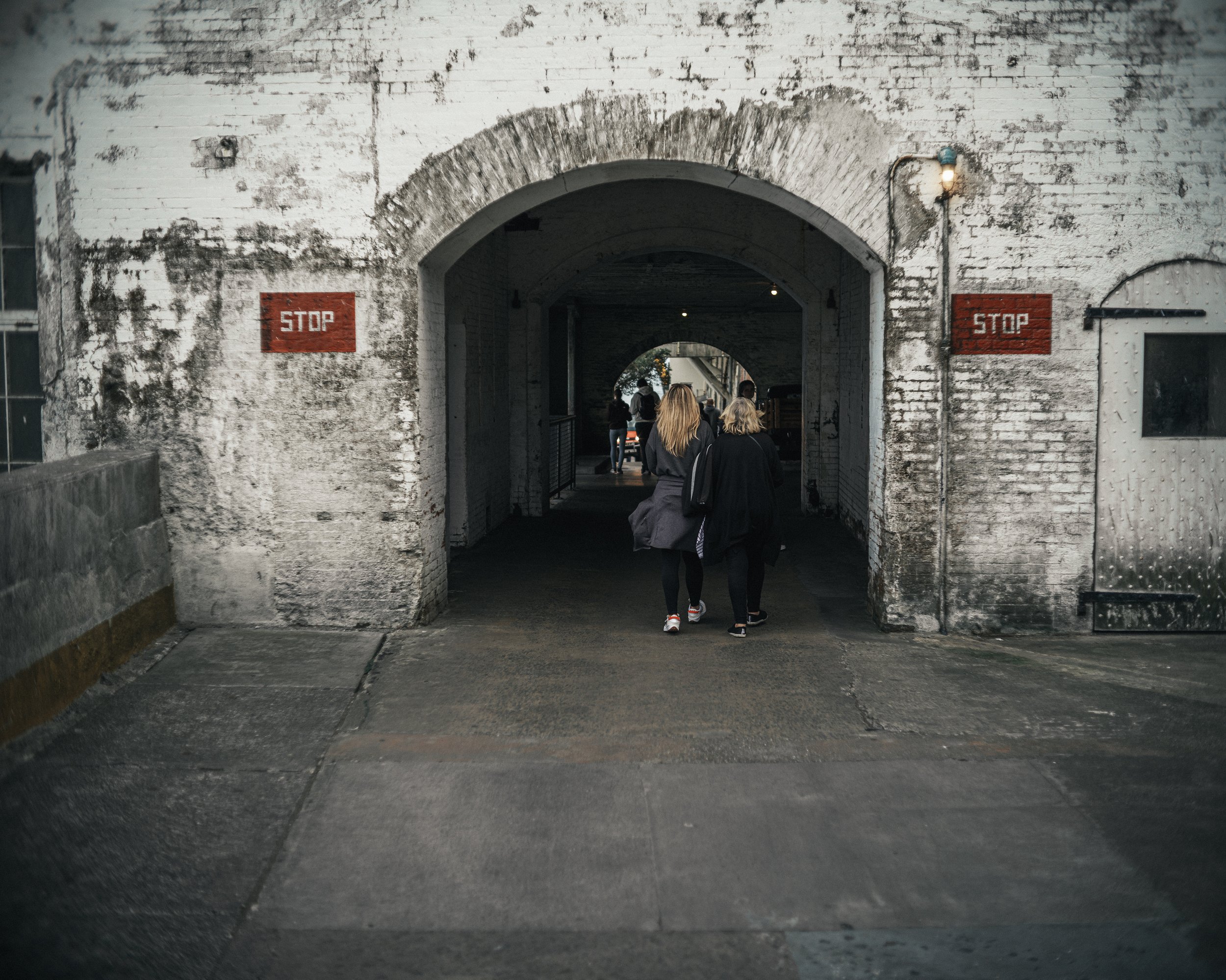I never realized I’d love street photography this much
Include humans in your photos, they said. They were right.
While I love combining a good walk with taking photos, I’m fairly introverted (I even have the t-shirt), so I rarely feature humans in my photos. But what if there were a genre of photography where the point was to capture candid human moments surreptitiously? That I could do. I’ve been training for watching from the fringes my whole life.
I’ve often walked around cities and focused on photos of buildings, cars, the steam coming out of a grate, dumpsters, traffic cones—you get it. While I’m proud of many of these images, the real story is how humans fit into those spaces. So I’ve been practicing capturing moments—as defined by something actually happening in the photo, which usually requires animation of some kind, which in a city usually involves people.
Technically speaking, this—shooting from chest level with my camera on a strap, looking like I was holding my camera but not actually shooting—took some trial and error. I hadn’t used zone focusing before, so it took a bit to dial this in. To get a reasonable depth of field meant I needed to balance the shutter speed with a stopped down aperture (my first day out was almost all motion blurred images). I’m starting get a feel for the right settings, and developing a better shooting technique where I pause—sometimes just a stutter step—to take photos rather than trying to shoot on the move.
The first day I tried this was in New York with a used Fujifilm X100T I’d just picked up from B&H that day. Even though most of my photos that first day were unusable, I was hooked. This is a genre with near unlimited subject possibilities (there are only so many leaves to shoot during my normal walks on our rural dirt road). And it’s a genre that can be practiced in any city or village, wherever people live out their lives.
My second day in NYC was better. Then I came home and walked in Portland, and some of those were good. I went to Boston last weekend expecting to walk there, but the weather was so beautiful, every single person was on the sidewalk and every single parking spot was filled. I ended up shooting no photos at all. Next time I’ll plan that one better (take the train).
When the Fujifilm X100VI became available, I preordered it and returned the X100T, so I’ve been without that perfect little street camera model for a few weeks. The other day in Portland I tried my GFX with its kit lens fixed at 45mm (35mm full frame) to match the focal length of an X100. I set it to manual focus and manual exposure, zone focused to a reasonable distance, and tried my hand with that big, slow, obtrusive beast. The results were not bad! For several reasons (heavy, awkward to creatively/subtlely aim, sometimes slow to fire, loud shutter, weird flaring), that is not how I’d prefer to do street photography, but it works in a pinch. So I captured drunken St Patrick’s Day revelers in glorious medium format, and I’m not sure a single person noticed my camera. Given a more sober day of the year or a less tourist-y area of town (more cameras in general), I’m guessing the GFX would draw more attention.
I have no idea if/when I’ll get my preordered X100VI, but thanks to the brilliant community on Glass, I believe I’ll have a different unit soon. More on that later (hi, Markus!).
There is much talk about the ethics of this genre of photography. I’ll let smarter people hash that out, but my opinion is that if you are of an age of consent and inhabiting a public space, you will be seen—whether in person or via photograph. I don’t post photos of children, and I won’t show the faces of folks who are unhoused or otherwise struggling (exception in this set, there are clearly some drunken folks. Irish celebration will do that.). And there are photos that I may exclude just because they subjectively don’t feel right. Generally speaking, though, I’ll let the law rule here—if it’s viewable in a public space, it’s a potential subject.
Here are some of my favorites from outings in Portland, Maine, and New York, New York.
Getting back out there
One foot in front of the other.
I used to walk up and down our dirt road at least once a day. The vast majority of my first 365 project’s photos were taken on these walks. Lately, though, I haven’t been summoning the energy to go out in the cold—and I haven’t found inspiration on the brown winter road.
The last couple days have been sunny and relatively warm and I’ve taken advantage of it. Here are some photos from two days of walks on our late-winter-but-maybe-spring-is-coming? road.
(I don’t always point out which gear I used for a shot, but these are all taken with my favorite combo, the Fujifilm GFX 50s ii + Mitakon 65mm f1.4.)
Forgettable photos taken too late on a previously foggy morning
On working with what you’ve got not what you want.
The thing about photography as a hobby is that the primary goal is not the photo. The photo is important. It’s the thing that keeps you motivated. If you never took photos you were proud of, you’d quickly lose interest.
The primary goal of photography as a hobby is the practice of photography. It’s learning to see things others don’t see. It’s grabbing the camera and pointing it at things, wondering if you can make something of it. It’s walking. It’s feeling the place where you are. It’s often disappointment. It’s the thrill of knowing before you even release the shutter that this one is going to be good. It’s about looking back and seeing how your photos have improved over time, about being a little surprised and proud that yeah, I took that.
I was pleased to hear Daniel from Glass reiterate (ironically) the thought that often goes through my head when viewing some peoples’ photos: if you can only get photos you’re happy to share by traveling to exotic locations where it’s fairly easy to close your eyes, point the camera, and come away with “bangers,” you’re not really growing as a photographer. But if you can walk out your front door—or hell, stay inside—and immediately see half a dozen options that might be something, you’re exercising the creative muscles necessary to grow.
When you travel, of course take your camera. Shoot a mountain or a lighthouse or a space station or something—whoever you share your photos with will love that shit. But don’t wait for a trip or the weekend or an occasion. Practice as often as you can, even if the conditions seem wrong or you missed the best light.
Sick burn
Or why you don’t DIY electrical.
Some excitement in the local grocery store strip mall parking lot over the weekend when a BMW caught fire, scorching itself entirely and peeling the paint off the Mercedes parked next to it (no one was hurt).
Rumor has it that the owner (from New Hampshire, obvs) had hooked up their own massive speaker in the trunk and that somehow caused the fire. The trunk does seem to be the source of the fire, but I prefer to think that the tunes they played were just that hot. Their only crime was playing the sickest beats without a fire extinguisher on hand.
Regardless of the real cause, let’s just assume this is a powerful reminder that you should hire a professional to do electric work—or that technology is just not ready for the kind of fiery jams celebrated in the Granite State.
My favorite part of this is how both drivers folded in their driver’s side mirror. You know, to avoid damage.
Rescued from the archive cull
Look both ways before deleting everything.
Traditionally speaking, I delete nothing. I have close to 200,000 saved emails (all read!). And I have every photo I’ve every taken.
Recently I decided I should delete unused photos en masse to free up room on my hard drives. I have been pretty good about rating keepers in Lightroom Classic as at least ★☆☆☆☆, so creating a smart collection to show me the rest was pretty straightforward.
Given my reluctance to offload anything digital on the off chance I may need it some day, I scrolled back through 30,000+ photos from the last year or so to make sure I was okay losing them forever. And of course, there were several that I had missed. I gave them a quick edit, exported, then tagged them ★☆☆☆☆ so they left the To Delete smart collection.
THIS IS WHY I DON’T DELETE ANYTHING.
Really, the lesson here is to take a little bit more time after importing. If I’m good about hitting that ‘1’ on the keyboard if there’s the slightest chance the photo might be usable, I can feel pretty confident about either deleting the rest right away—or at least giving that ongoing To Delete collection a quick look once in a while before clearing it out.
Here’s that set of rescued photos. (I’m not done reviewing yet, so there’s a good chance this post has a part two.)
In this house, we celebrate X100VI day
For those who observe.
After more than a year of checking B&H near daily to see if the Fujifilm X100V was available yet, today I caught a glimpse of something new as I was closing the search results page in frustration. “Coming soon” it said. And folks, it was the next camera in the X100 line, the Fujifilm X100VI. I hit that preorder button faster than the onset of regret after Taco Bell. Then I figured out how to pay for it.
(Wait, shouldn’t this camera series be called the XC and this one is the XCVI? As I’m reading it, this camera is the Fujifilm 96. Nice…?)
To celebrate the occasion of me actually being able to order a camera before the eBay swarm descends, I posted some X100F shots on Glass. And made this blog post. And I intend to consume all the previously embargoed X100VI content on YouTube.
But for now, here are some of my favorites from the archive from years with the X100 series.
The other side of the strip mall
Introducing my new ongoing project, Gorgeous Garbage.
After The Incident, I didn’t want to push my luck when taking my daughter to the gym. So the next time I decided to explore the other side of the strip mall to see what treasures it possessed. Eventually I wandered around behind the building.
And reader, I hit the mother lode of dumpsters. Like tons. My photos of those glorious rust buckets have helped seed a new ongoing project called Gorgeous Garbage. I collect a lot of trash photos—like someone else I know—and have wanted to compile them into a project for while.
Below are some of the other keepers from that shoot that didn’t (necessarily) fit into the trash content dynamic. All in all a good outing.
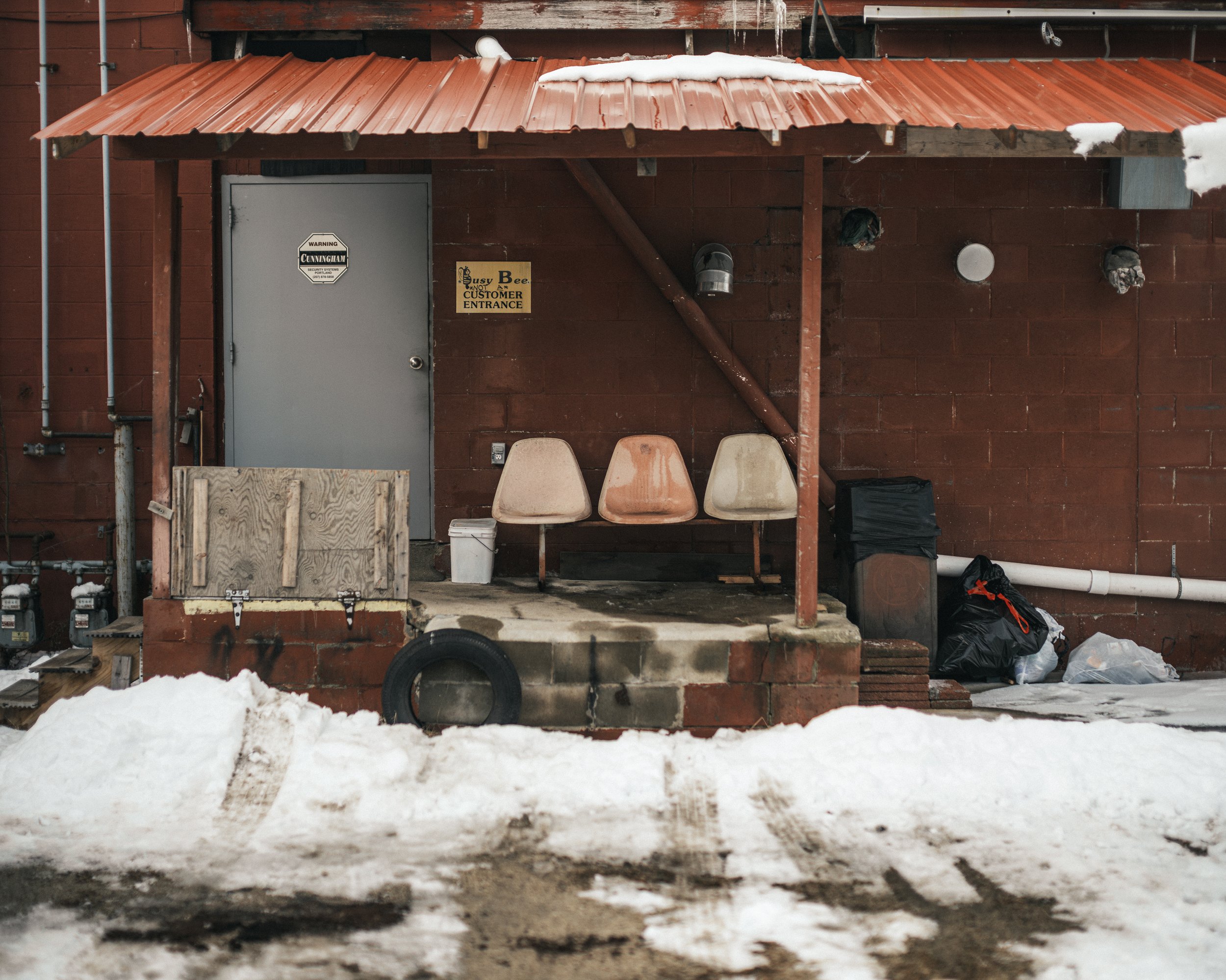
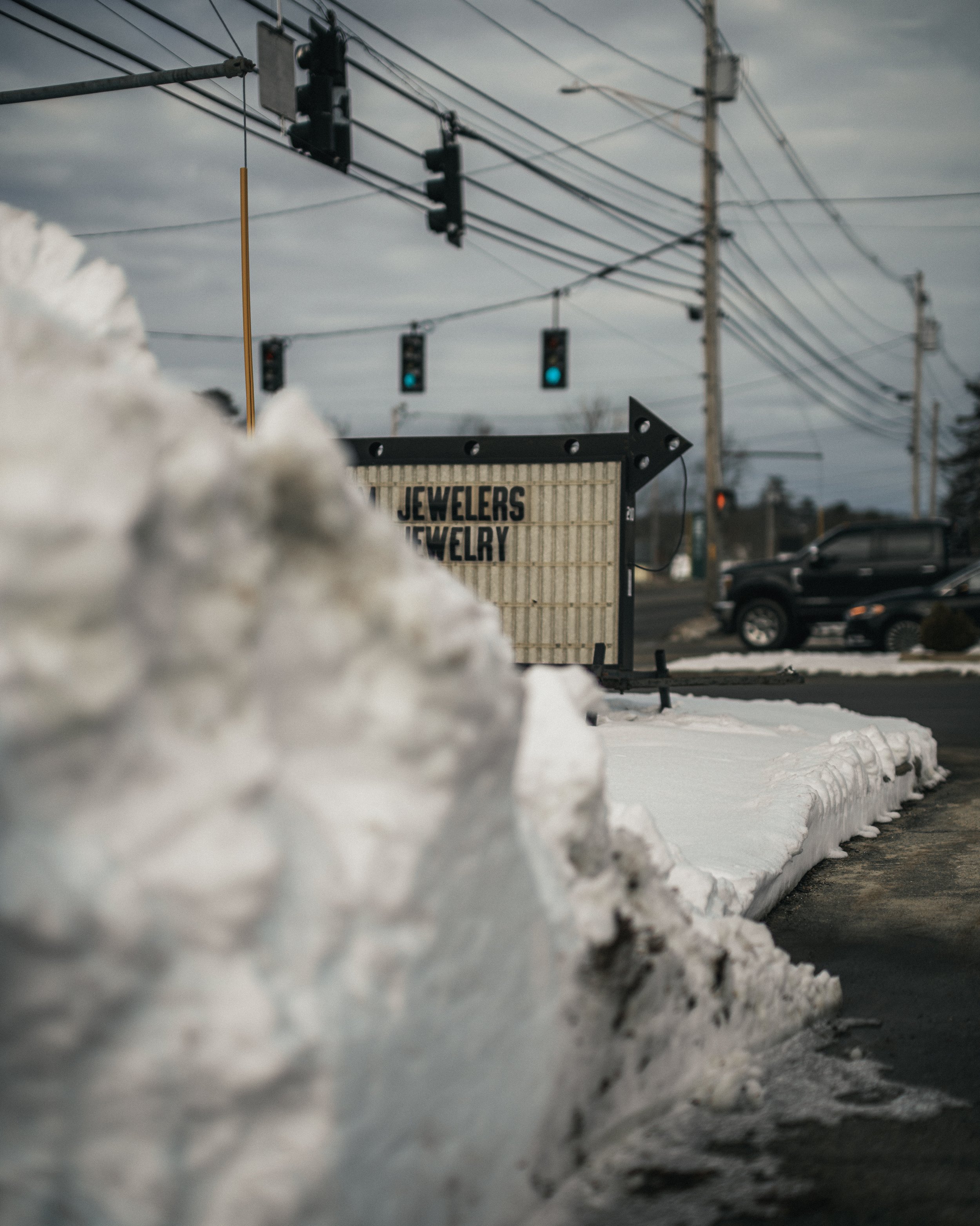
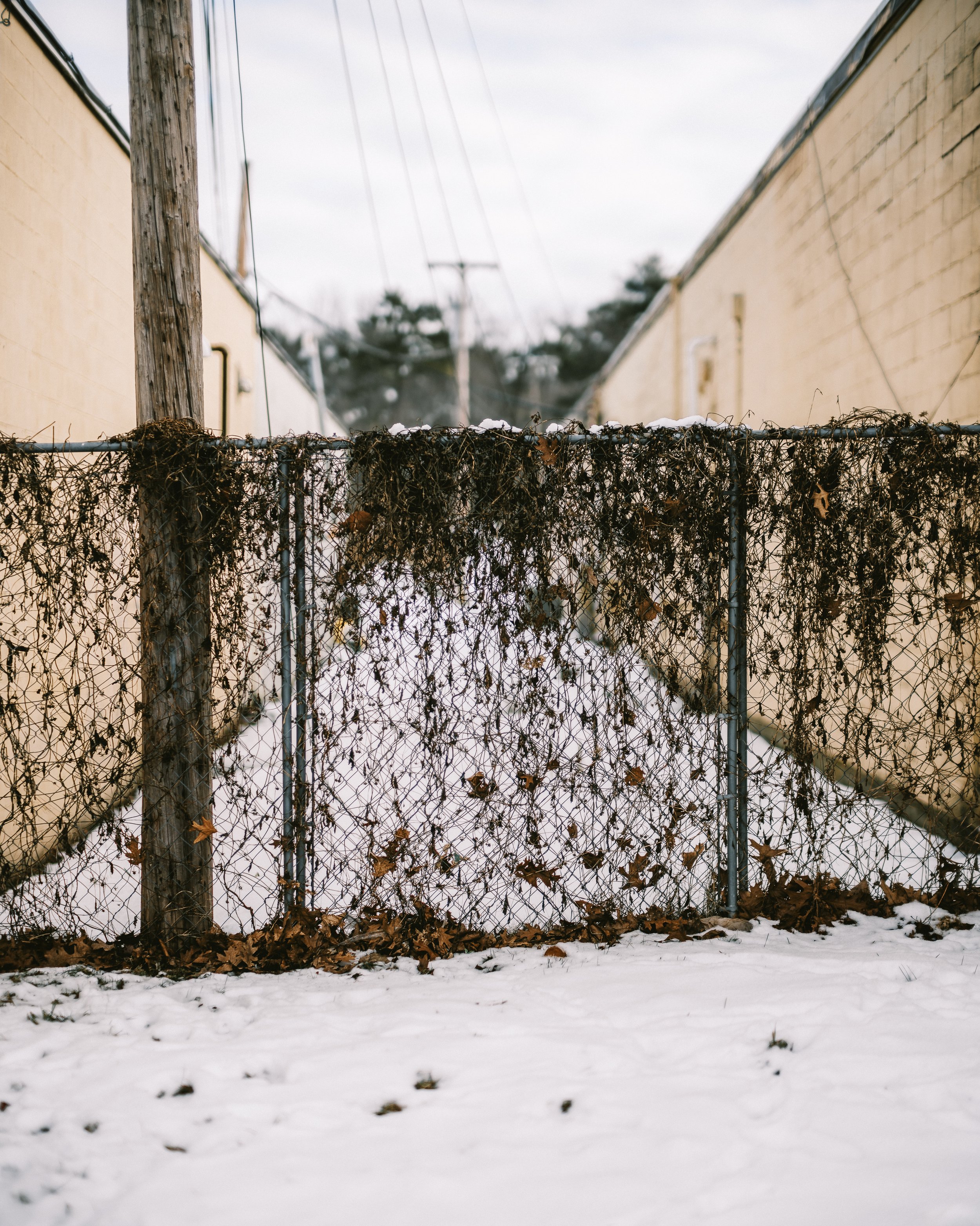
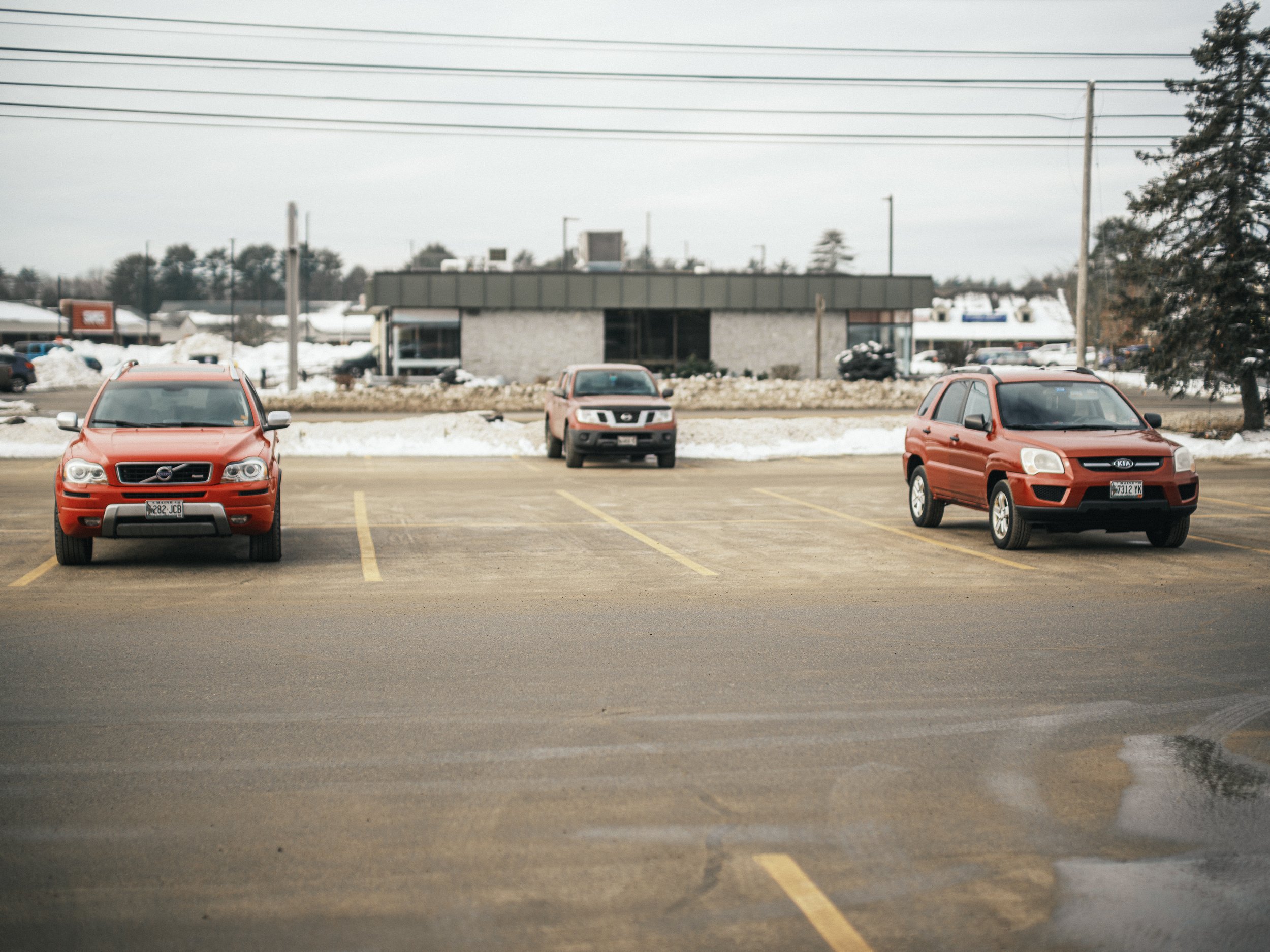
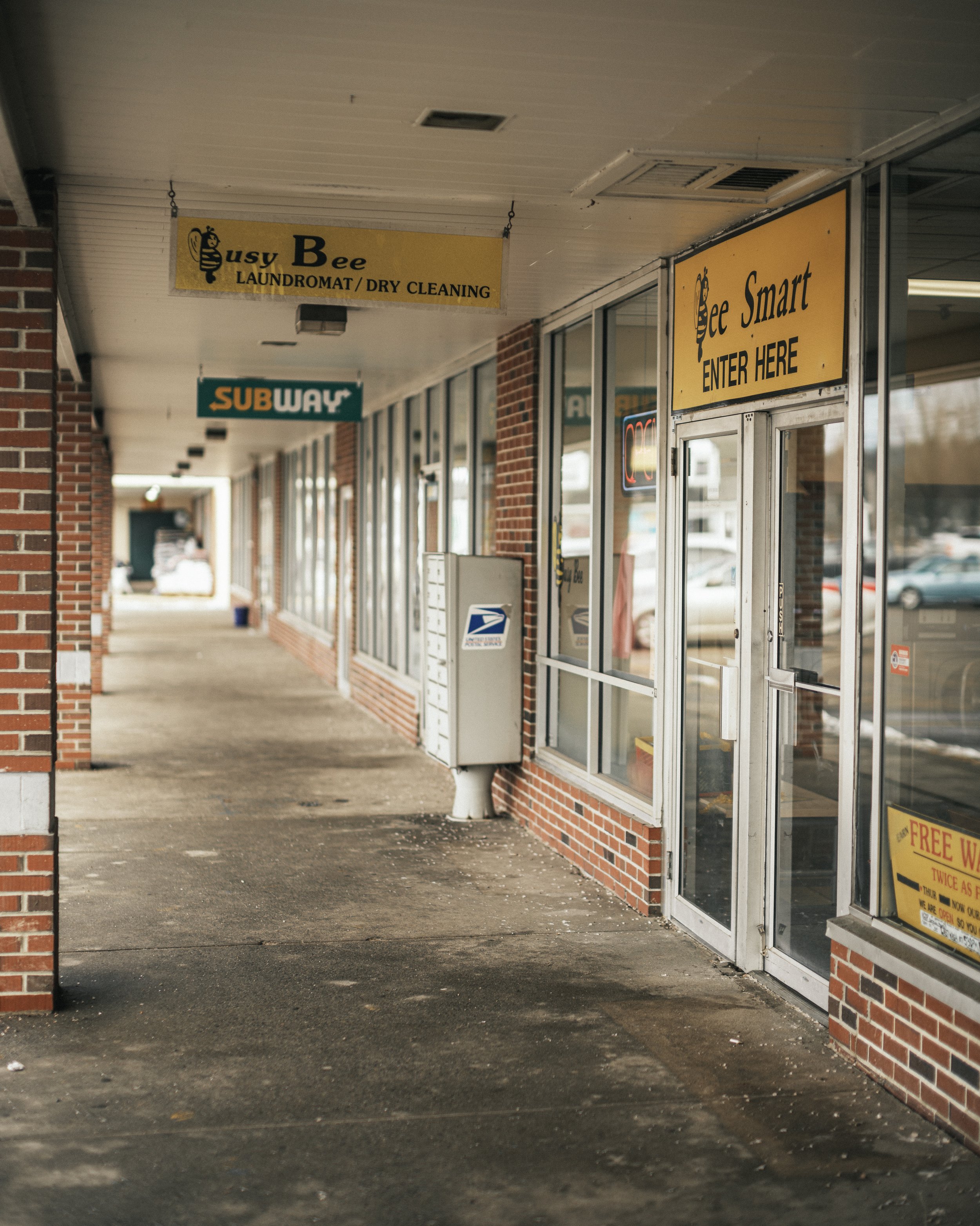
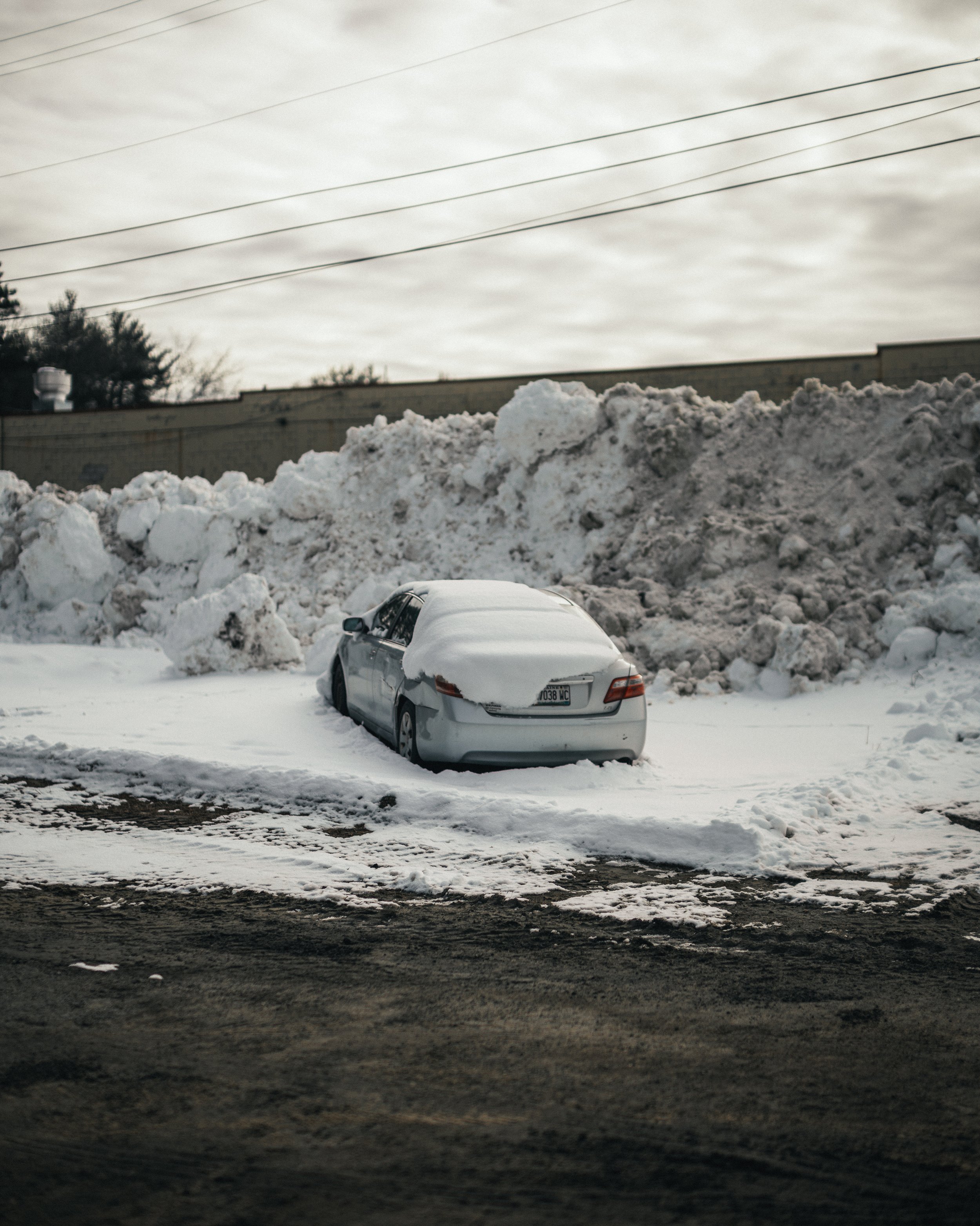
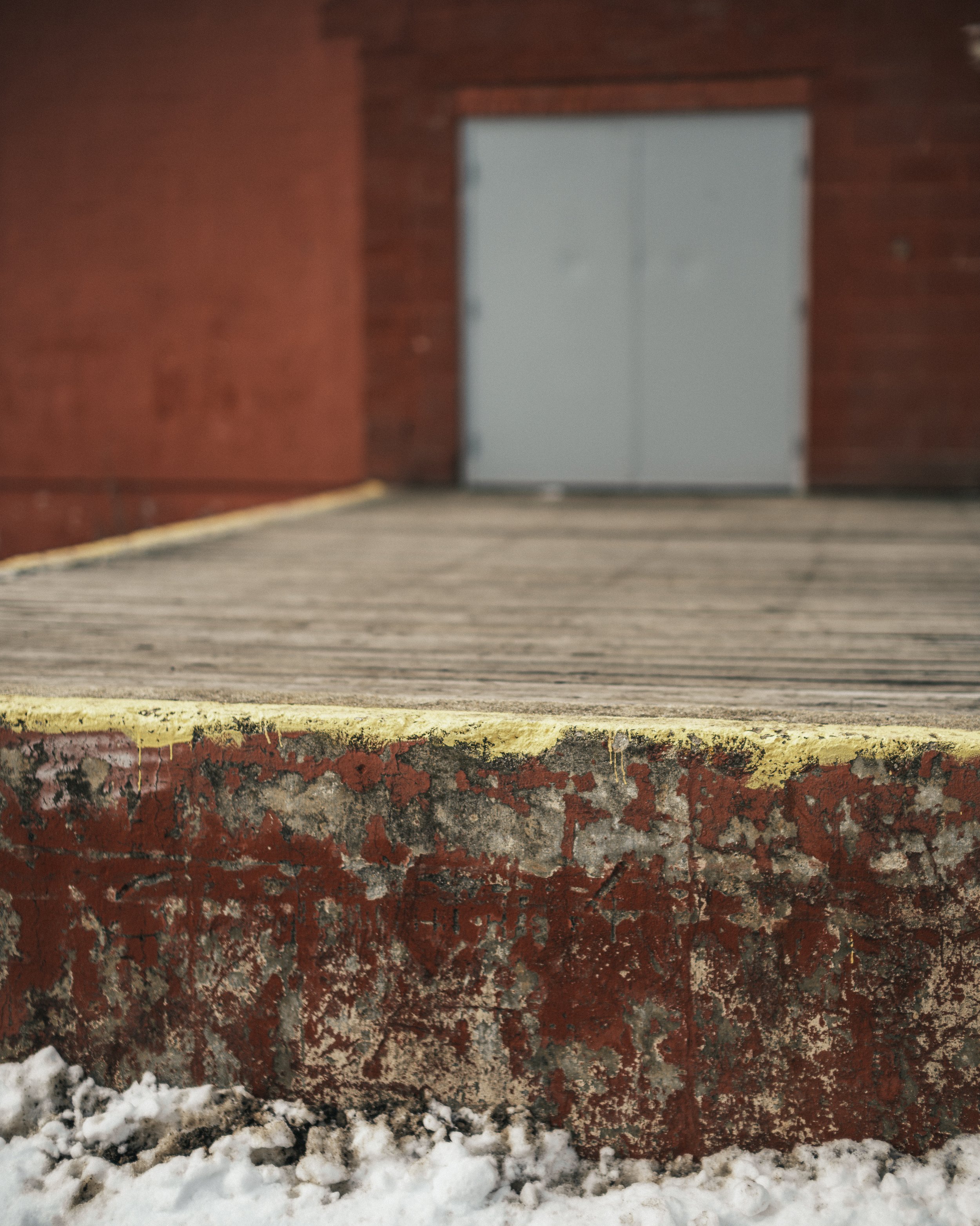

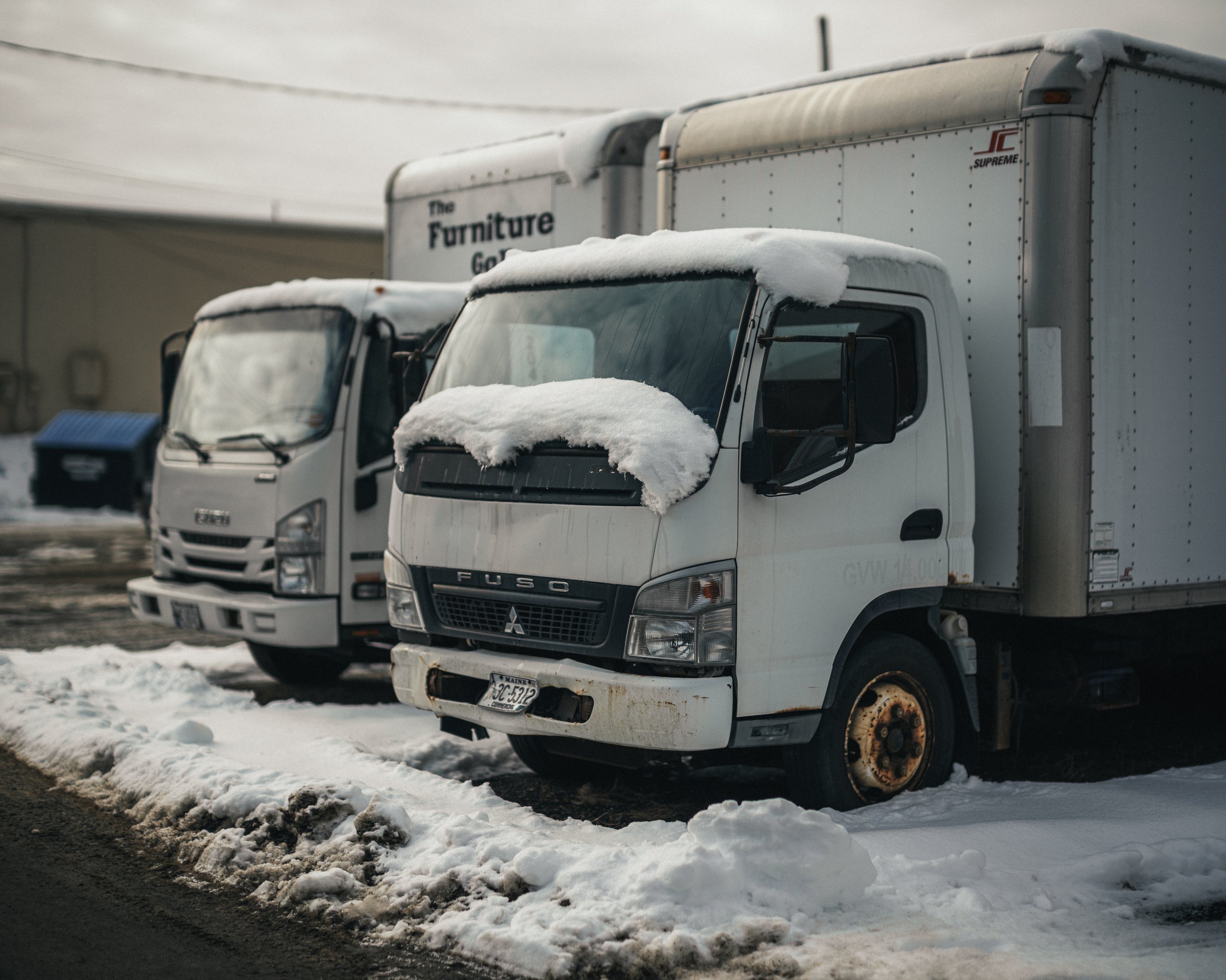
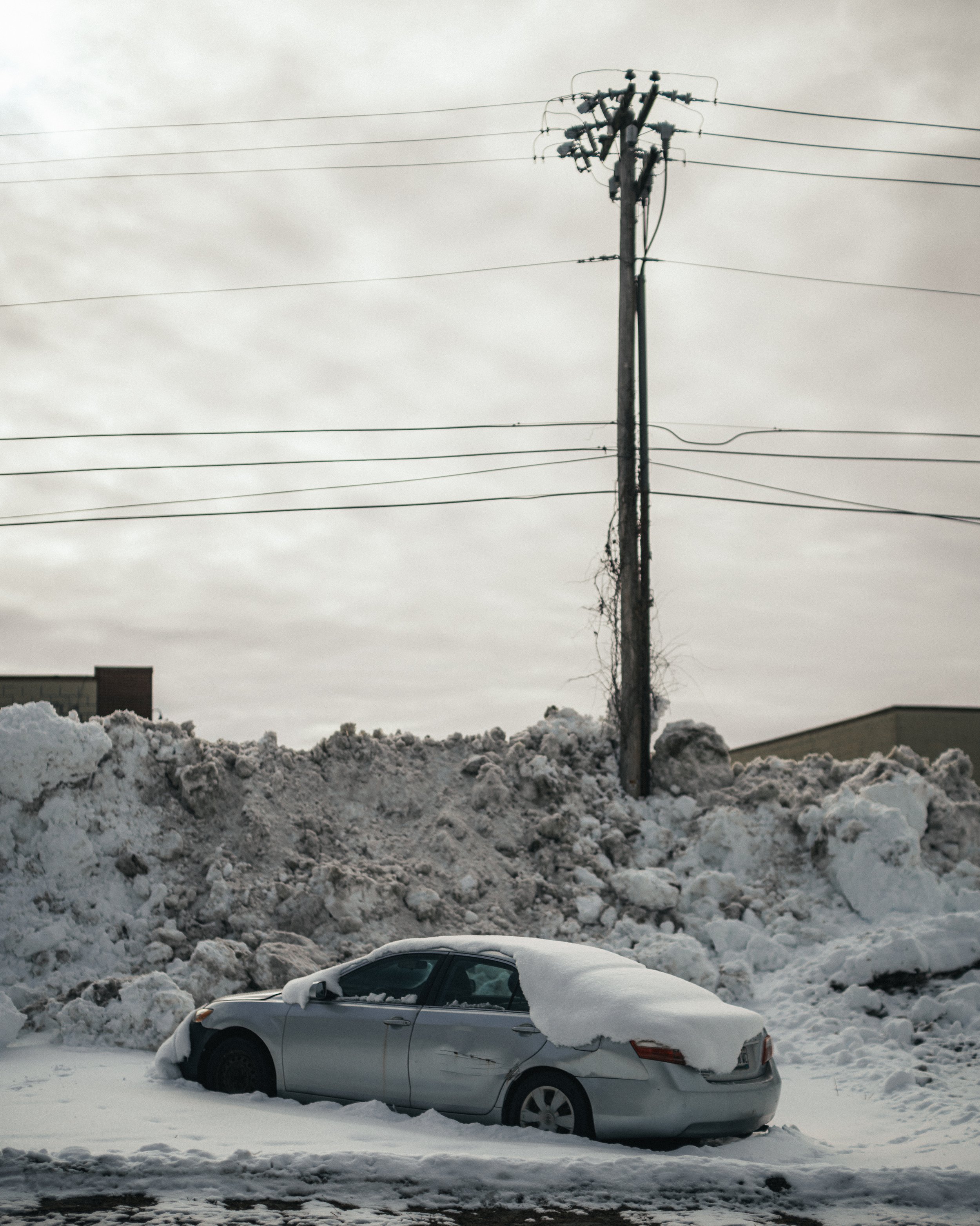
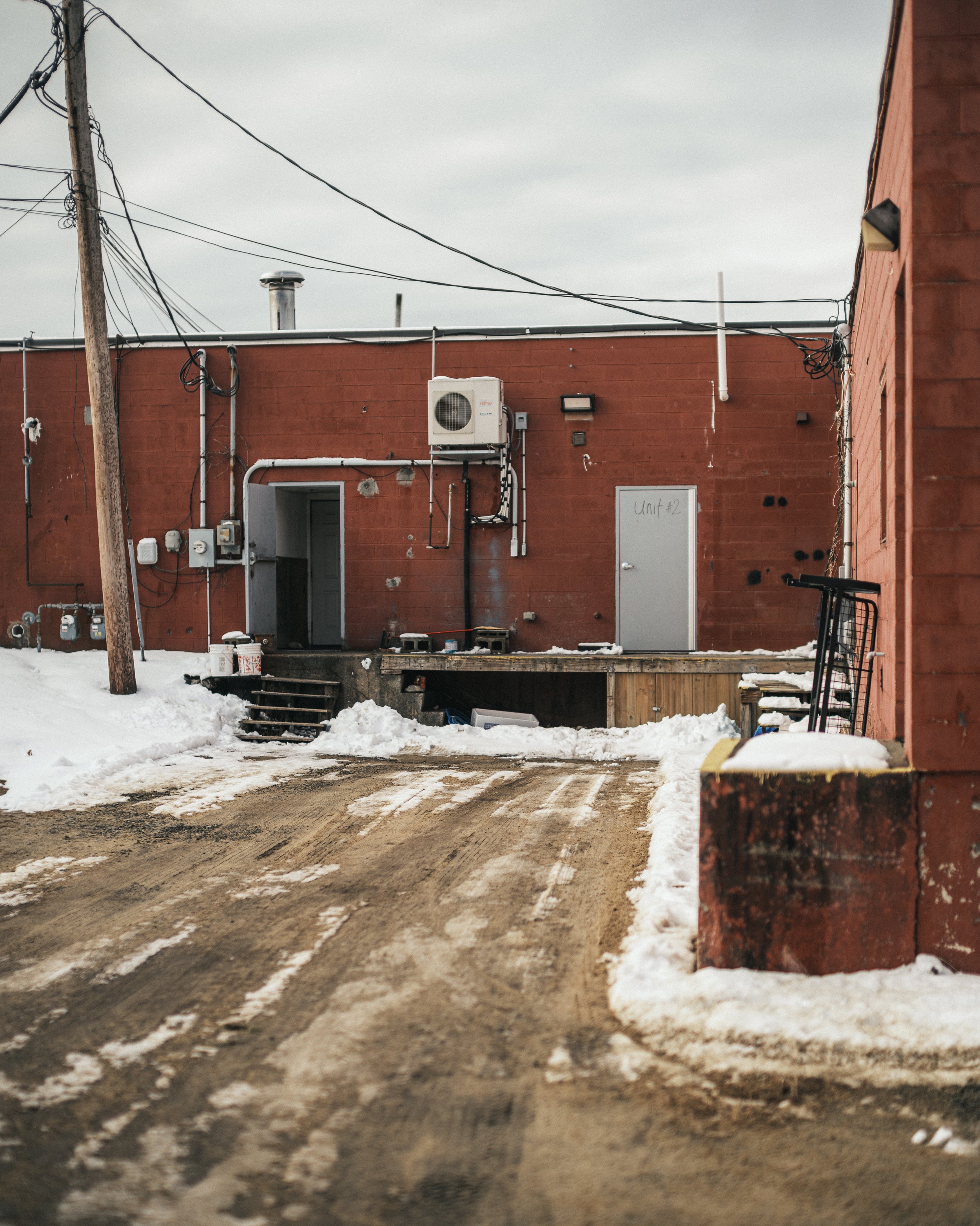
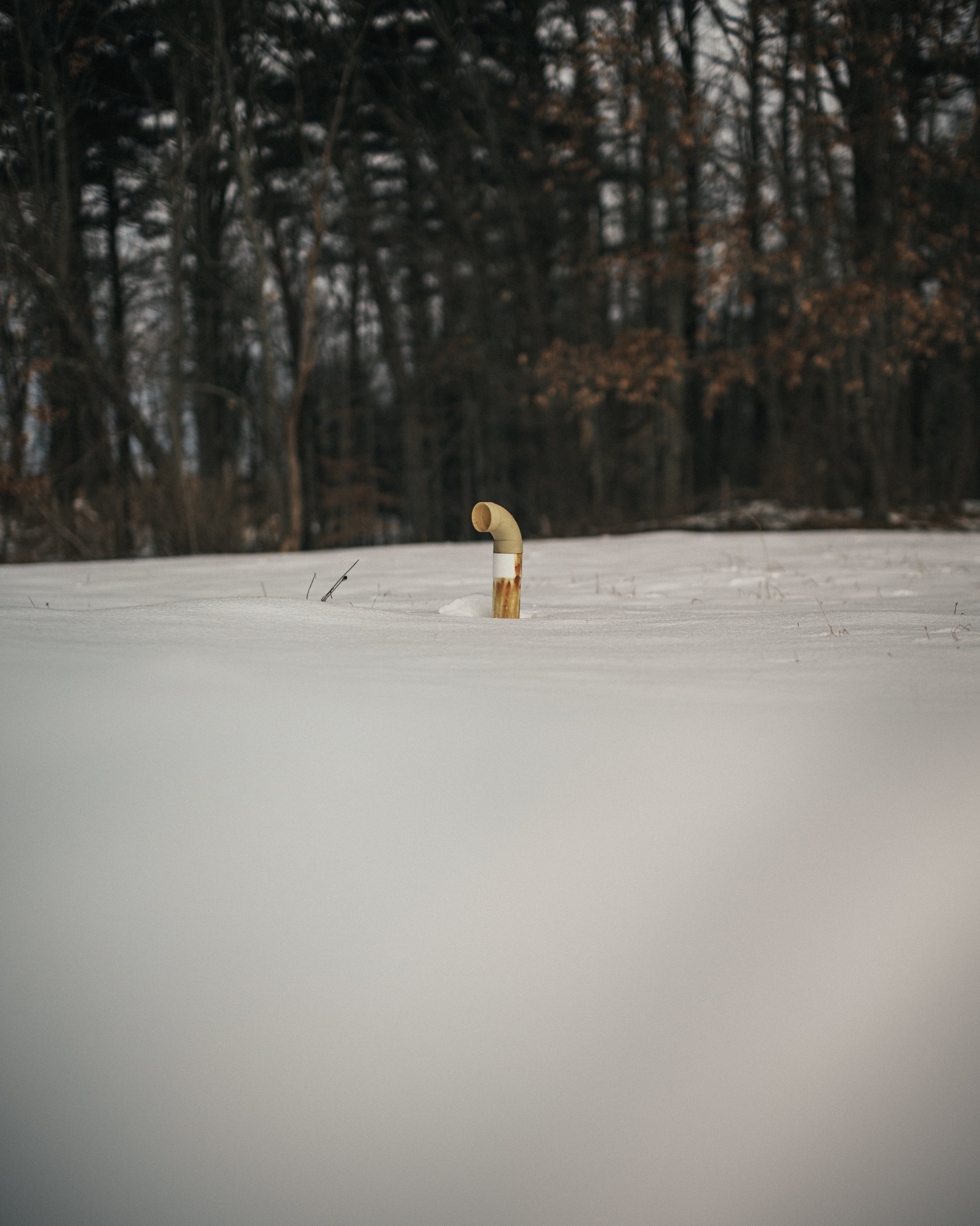
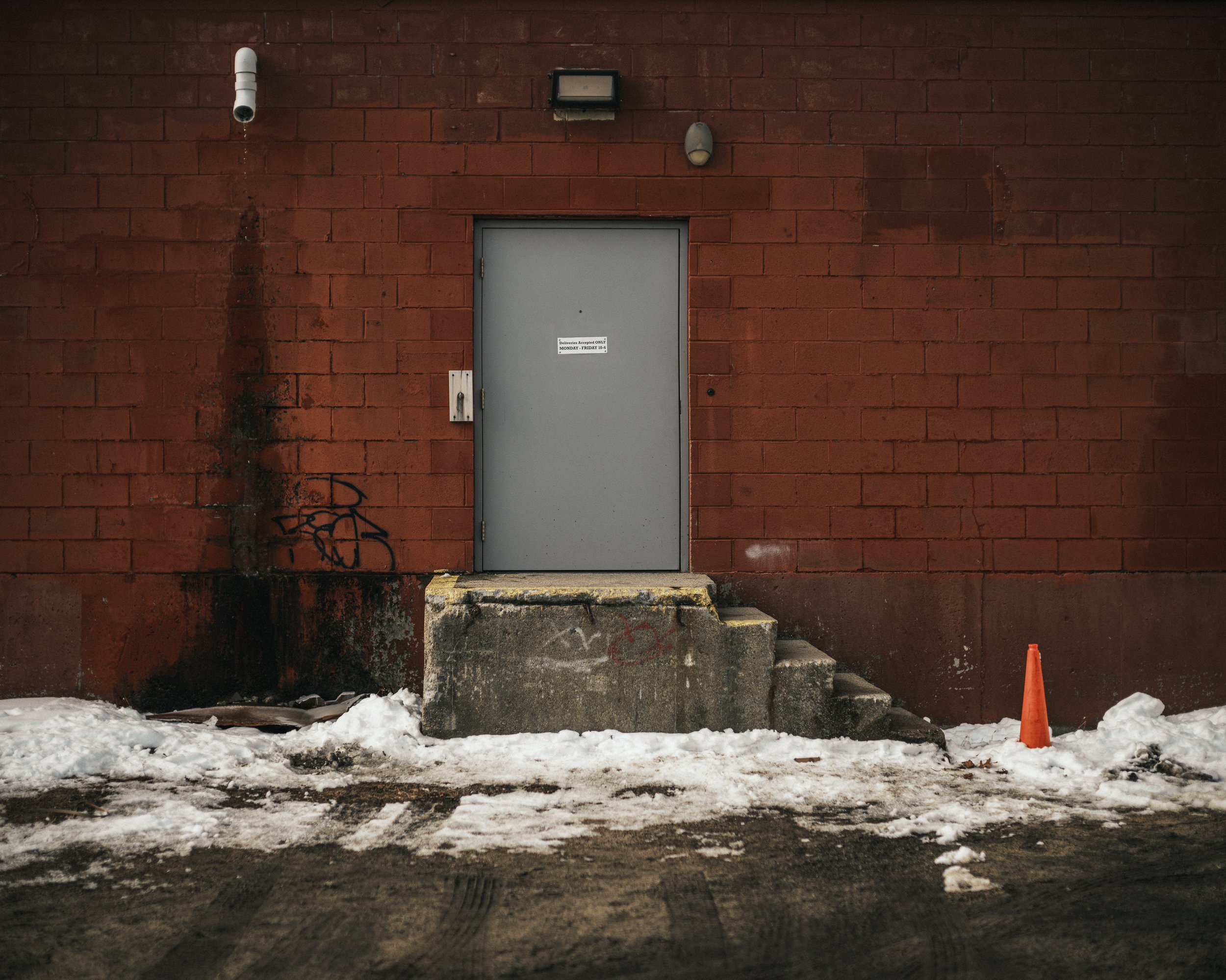
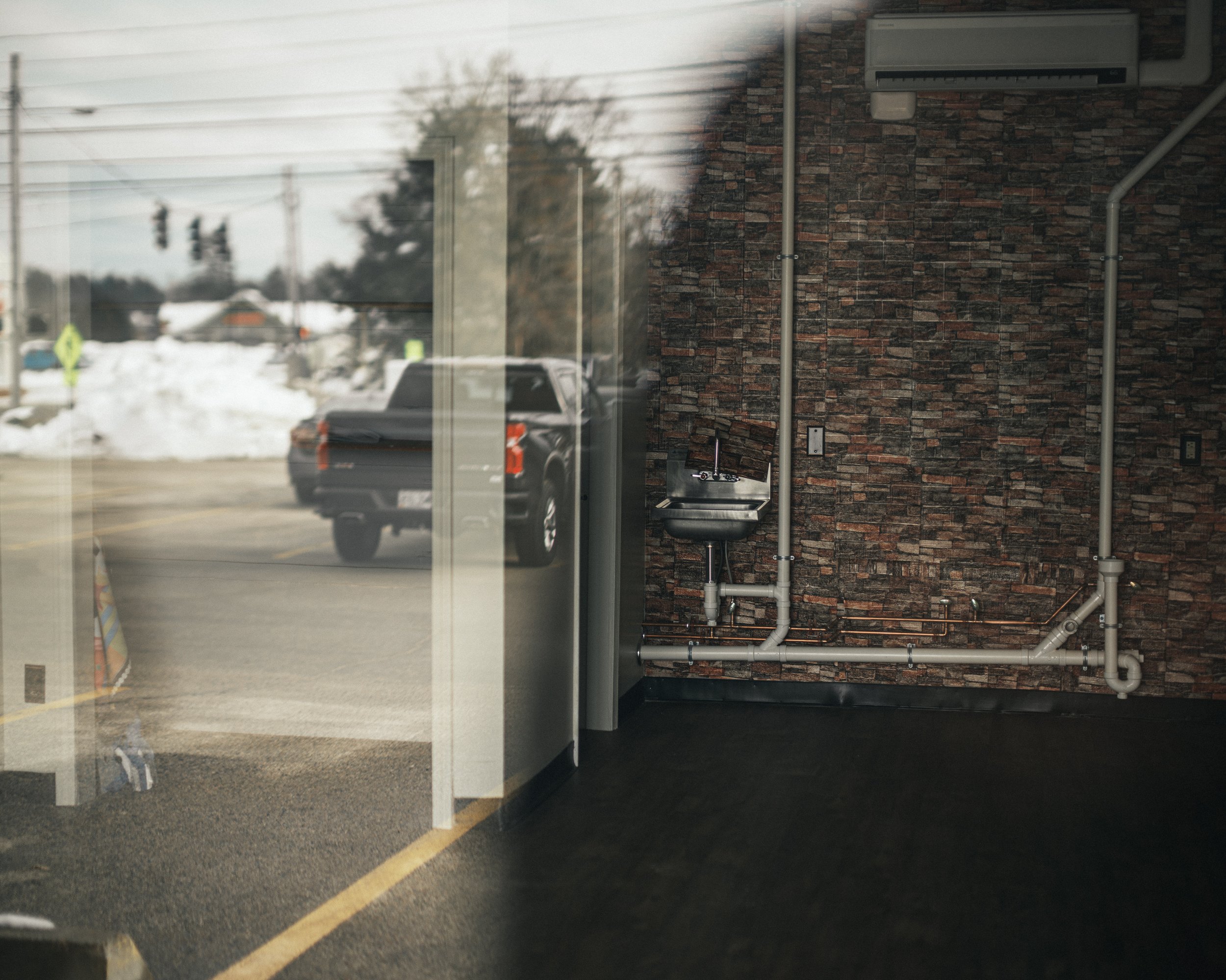
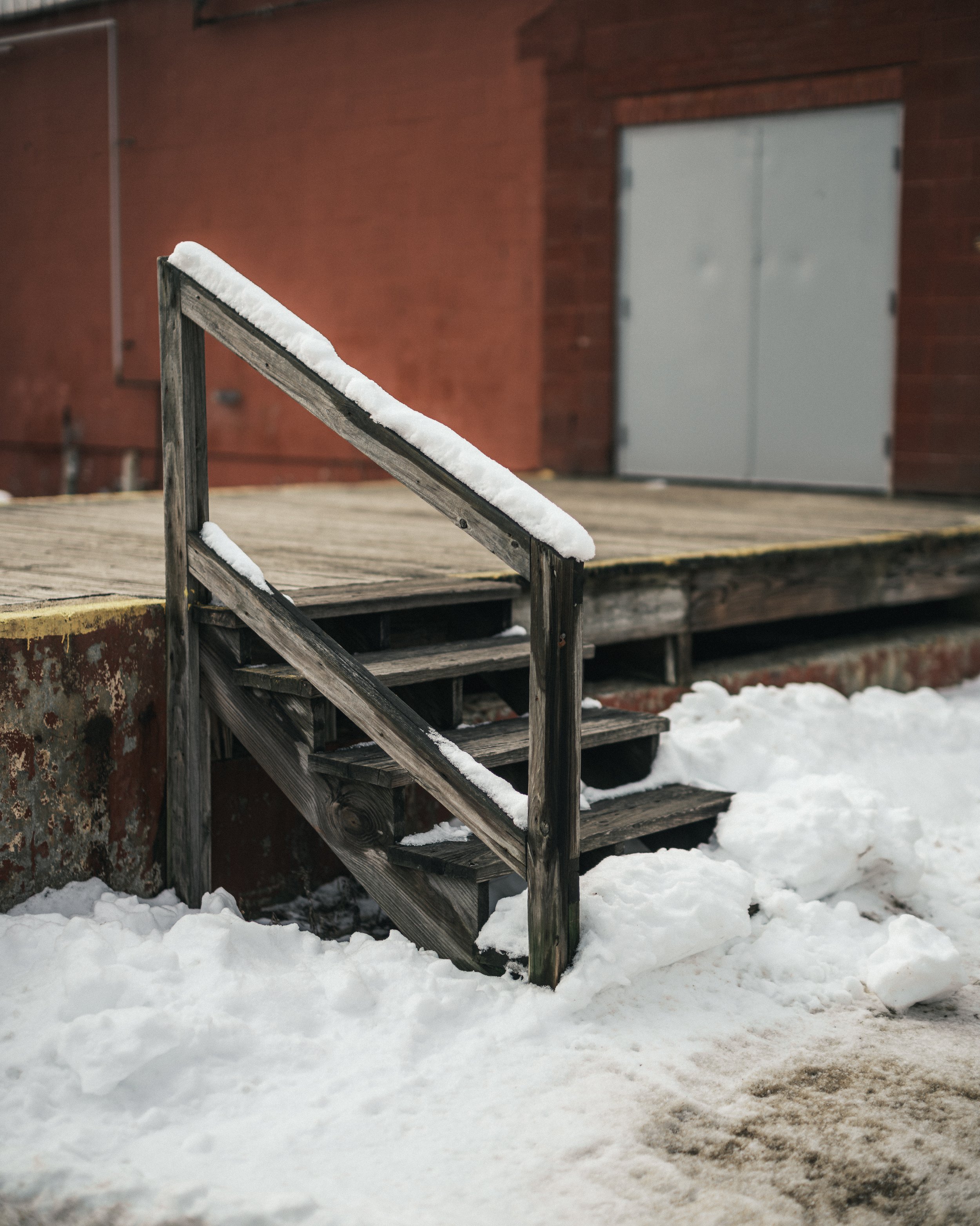
Confrontation in a Luddite town
Understand your rights before you trample mine.
Update: André forwarded me a post from a photographer who has encountered similar situations (one at a gym!). Check it out.
I’ve written before about taking every opportunity to shoot photos, like while waiting on a family member. Lately my daughter has been going to the gym, and since she’s on a learner’s permit, I tag along. While I wait, I shoot photos around the strip mall where the gym is. Some of those were featured in this post.
Today while walking around that parking lot taking the photos included below, I saw a big guy standing some ways off staring at me. Then I heard yelling. The volume increased. “What are you doing?”
I ignored it for a while because there was no reason it would’ve been directed at me. But it continued. I turned around and noticed the big guy had been joined by another, angry-looking guy who was now clearly yelling directly at me. “What are you doing over there?”
I cautiously walked toward the men, since I wasn’t going to carry on a conversation at that distance or at that volume.
“Taking photos.”
“Of what?”
“Anything. Everything. Things that are interesting to me.”
“What’s interesting in a parking lot?” The second man somehow sounded angrier than when he started yelling. He eyed my camera. He looked ready to rip it from my hands to see what was on it. Good luck with that, buddy. A GFX with Mitakon makes a good defensive weapon.
“What isn’t interesting in a parking lot?” I pointed and described a few things I’d just photographed. “That blue wall. The smoke coming out of that pipe. That old machinery.” I didn’t point out any dumpsters since I didn’t want to completely break these well-intentioned men.
This went back and forth for a while. I got a little more heated, even pulled out a classic: “Last time I checked, this was a free country.” I hate that expression, but I needed to speak their language.
The angry one was personally offended that I was walking around—“with my Fujifilm camera” (he noticed! aww)—taking photos inside (without the “of the… inside”) people’s cars. And that’s illegal! (It’s not.) And an invasion of privacy! (If it’s visible in a public place, it’s not private.) Also, I wasn’t even doing that.
It turns out that someone saw me from the gym windows one of the previous times I’d been there. They reported that I’d been taking photos of the inside of peoples’ cars. The closest example of that (I checked my library) was of a flower pot someone hanged from their rearview mirror (it was interesting, though the photo wasn’t a keeper). If I hung a planter with an actual plant in it from my car’s rearview mirror, I’d want people to notice it. The same applies to vanity plates, flame jobs, and every single antique automobile.
So… one person one time saw my lens pointed at the window of a car and now I’m angrily confronted in a parking lot. Don’t ever change, small town Maine.
The angry one wore himself out and went back inside and I was left talking to the more reasonable big guy (I think he works at the gym). He was still stuck on the photos inside peoples’ cars thing, but he did admit that I had the right to take photos of pretty much anything.
“It is a free country, but not for long. It’s going communist.”
Sigh. Don’t tease.
“If you take photos of the inside of peoples’ cars, someone in the gym might capture you doing that on their phone and you could be in real trouble.”
Sensing an opening, I decided to help the next photographer unlucky enough to land in this town and pushed back.
“I hope nobody takes my photo, that would be an invasion of privacy.” (It wouldn’t be.)
I took the last photo below (of the wonky speed limit sign, with a car’s “inside” visible) as the big guy and I walked apart-but-parallel back toward the gym. I assume that got me on a list. My daughter may need to change gyms.
To be real for a moment, though. This confrontation shook me. I go out of my way to choose subjects that no one will have a problem with, after this happened. Even peoples’ faces—perfectly legal to photograph in public places without consent—only appear in my work tangentially. If I want a human element, I shoot from the side or back of the person—or from far away. That goes against everything well-known street photographers advise for making the best work. But this is a hobby and I have a family. I’m not taking chances.
Apparently in our fucked up society, where drivers of giant pickup trucks moan about bicyclists, rich politicians whine about poor migrants, and beefy bros harass photographers in parking lots (but say nothing about the countless security cameras in the same lot, some likely piped into their own place of business), even my relative cowardice is not enough to allow me to practice my craft in peace. Some people simply don’t understand the desire to capture beauty in the mundane—a staple of some of the best photographic work.
So stay safe, but know your rights. Because no matter what you do, people are people.
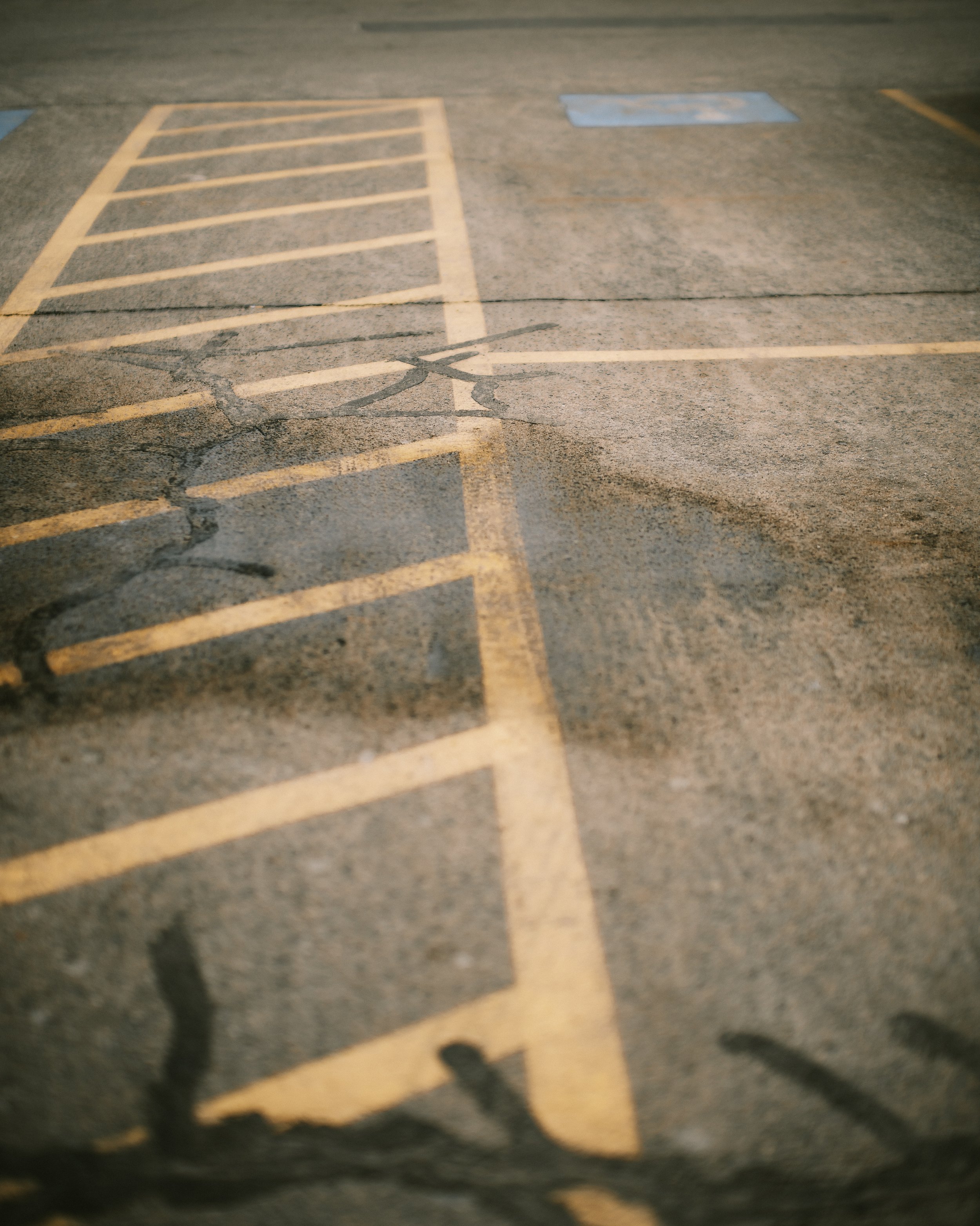
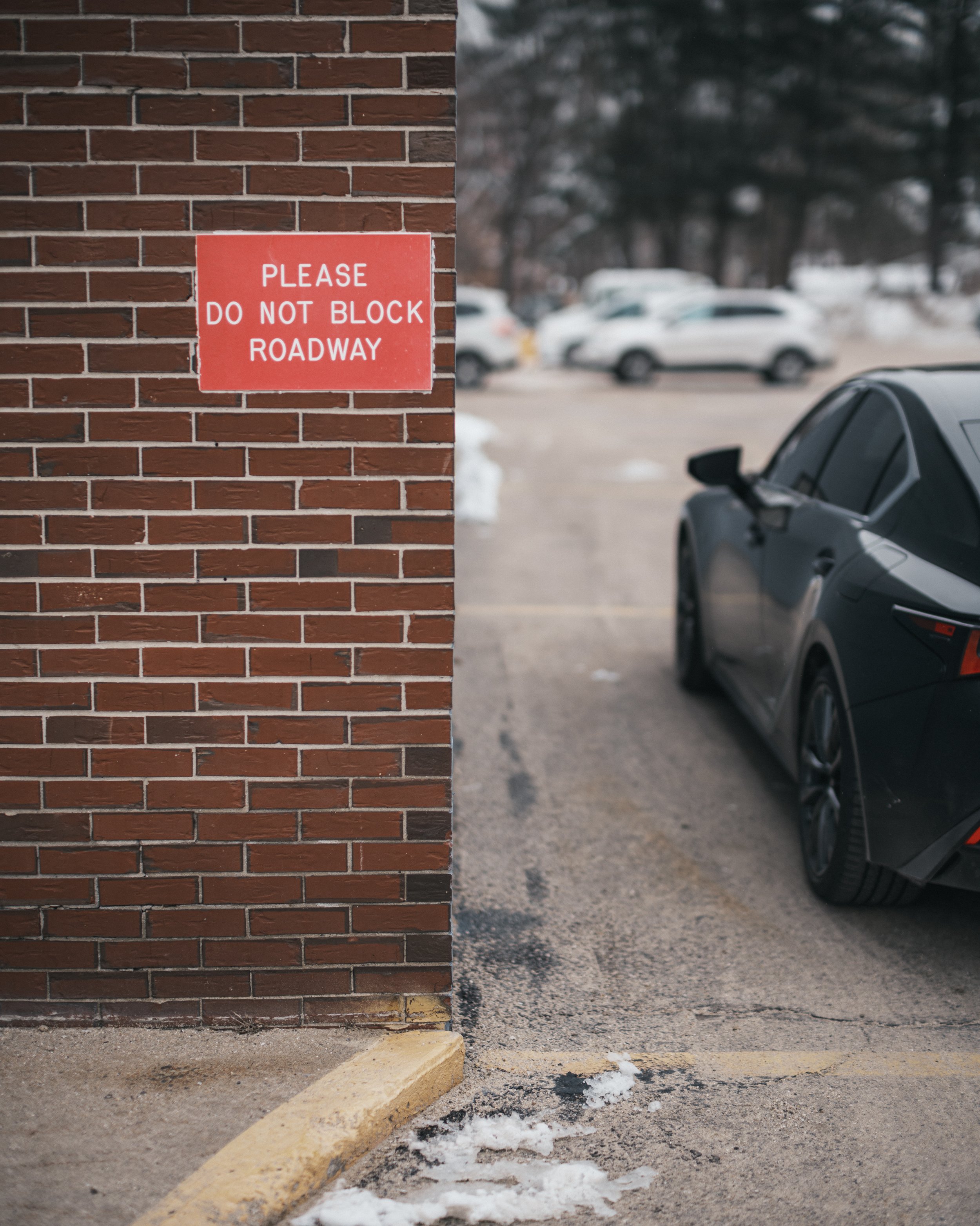
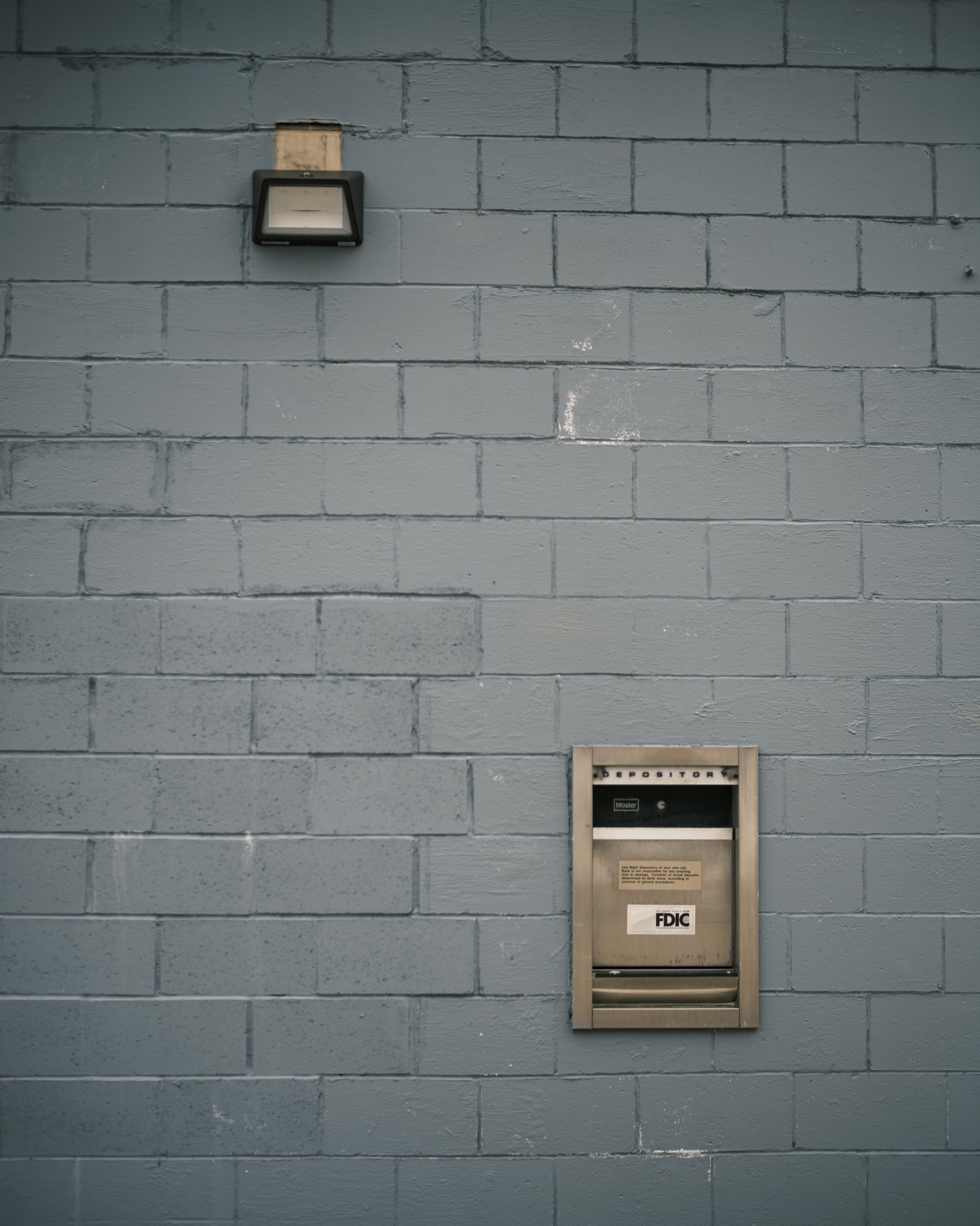
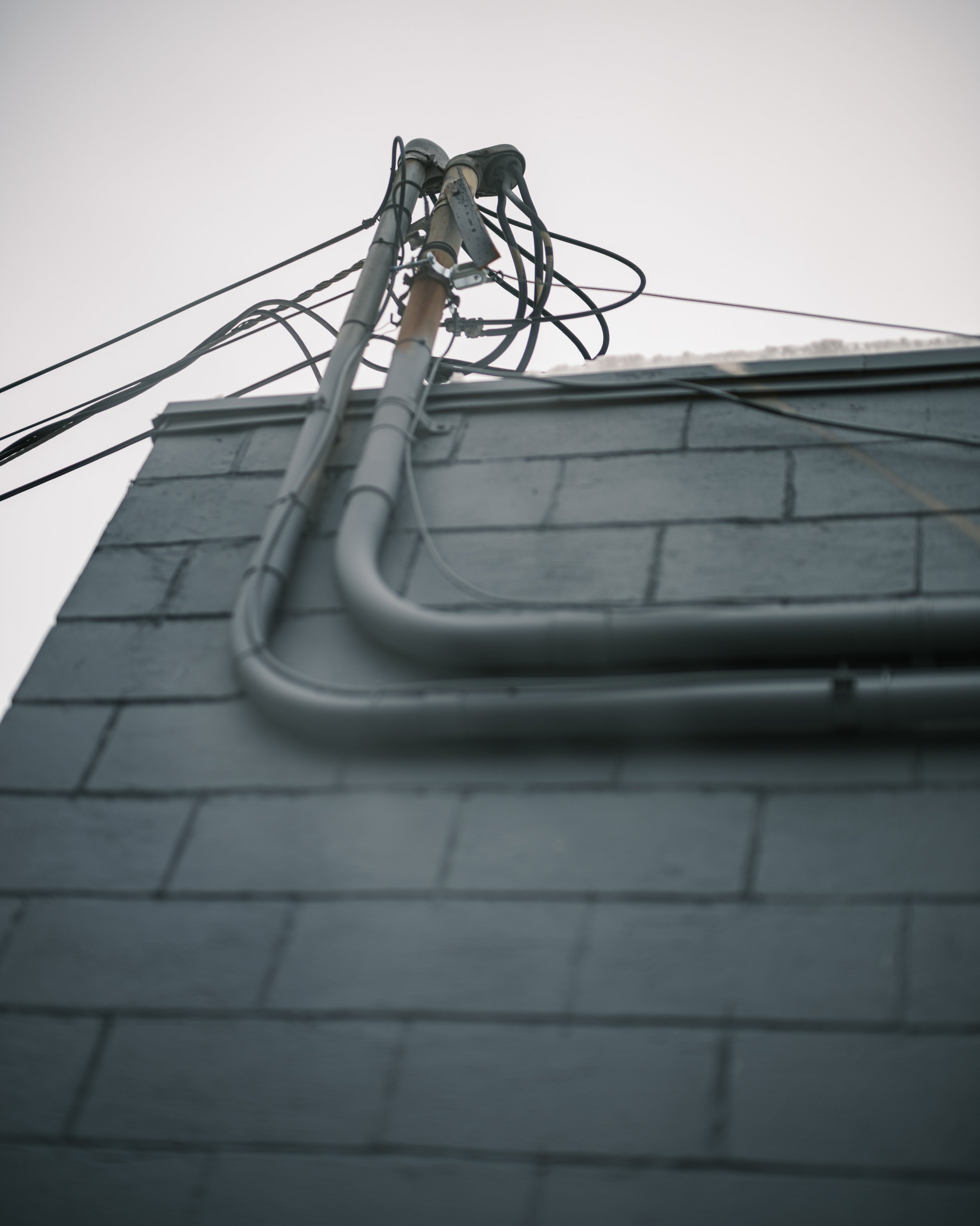
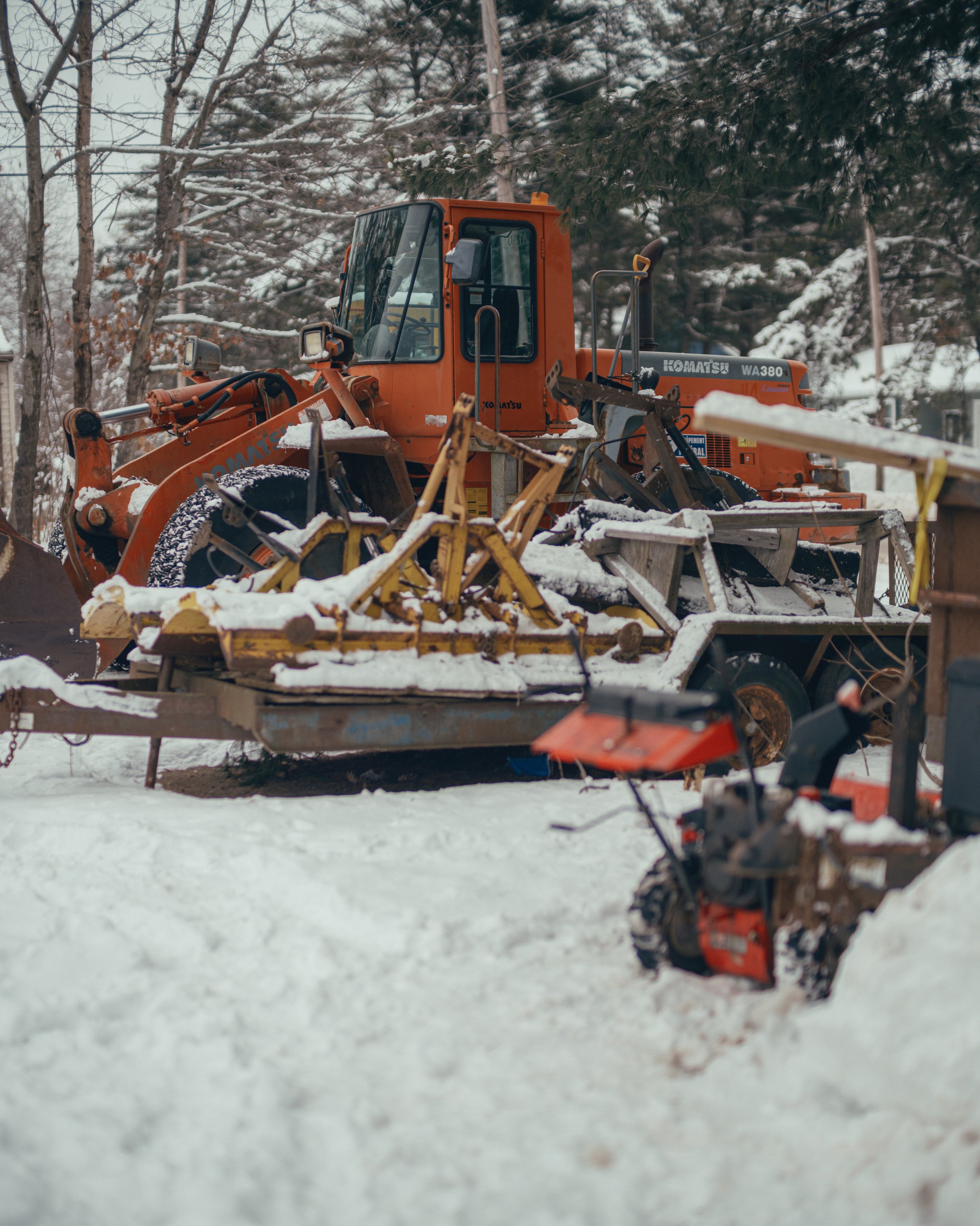
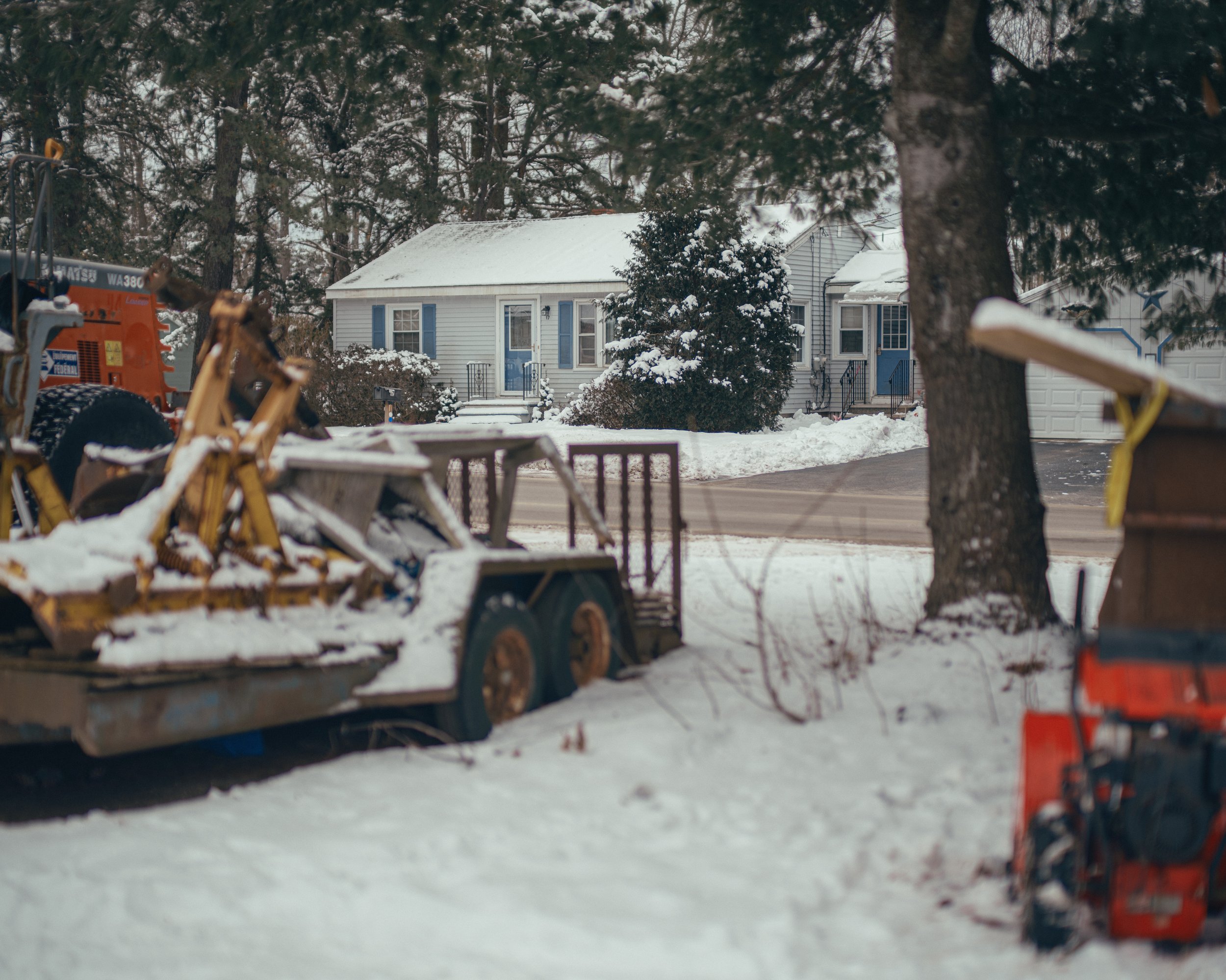
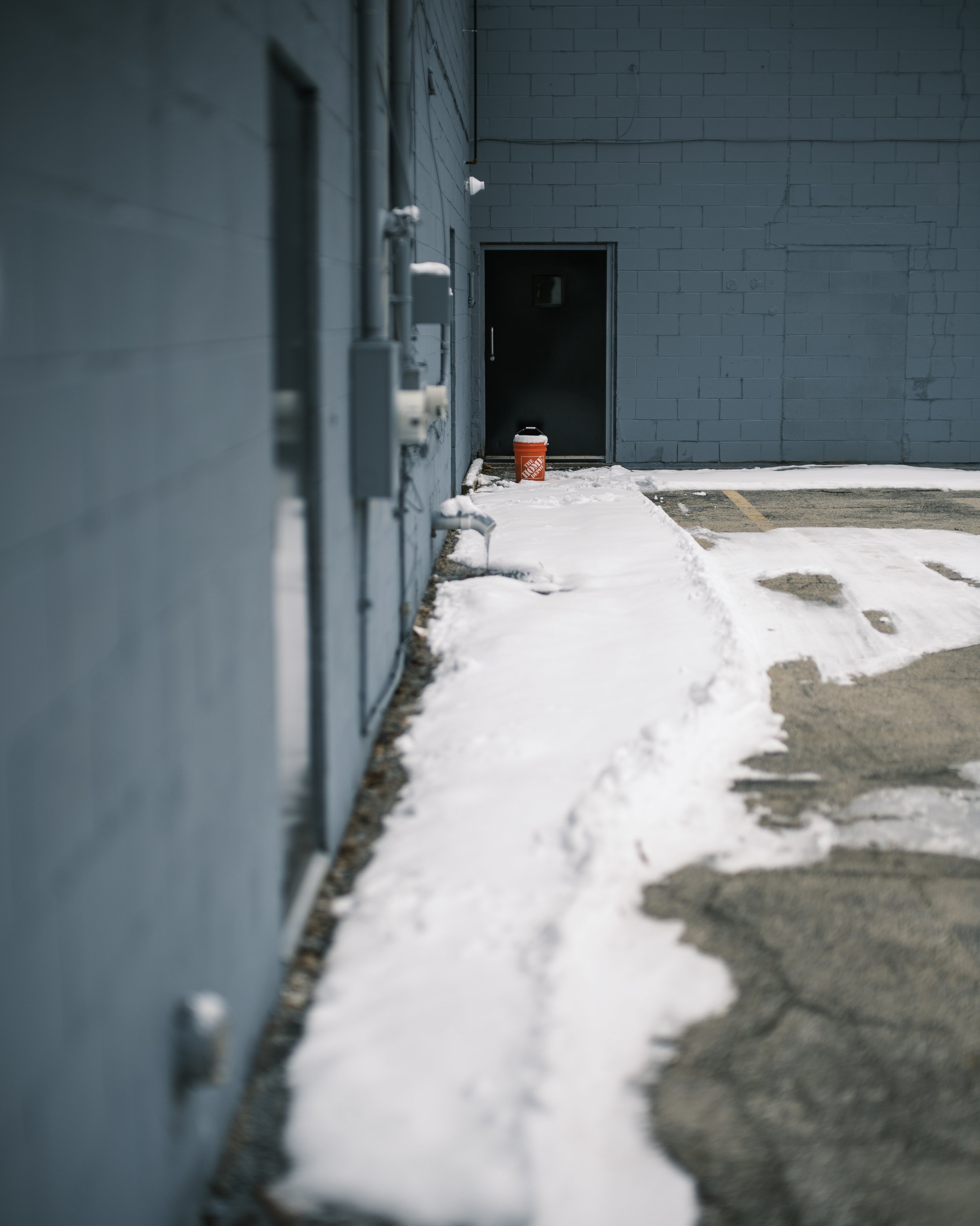
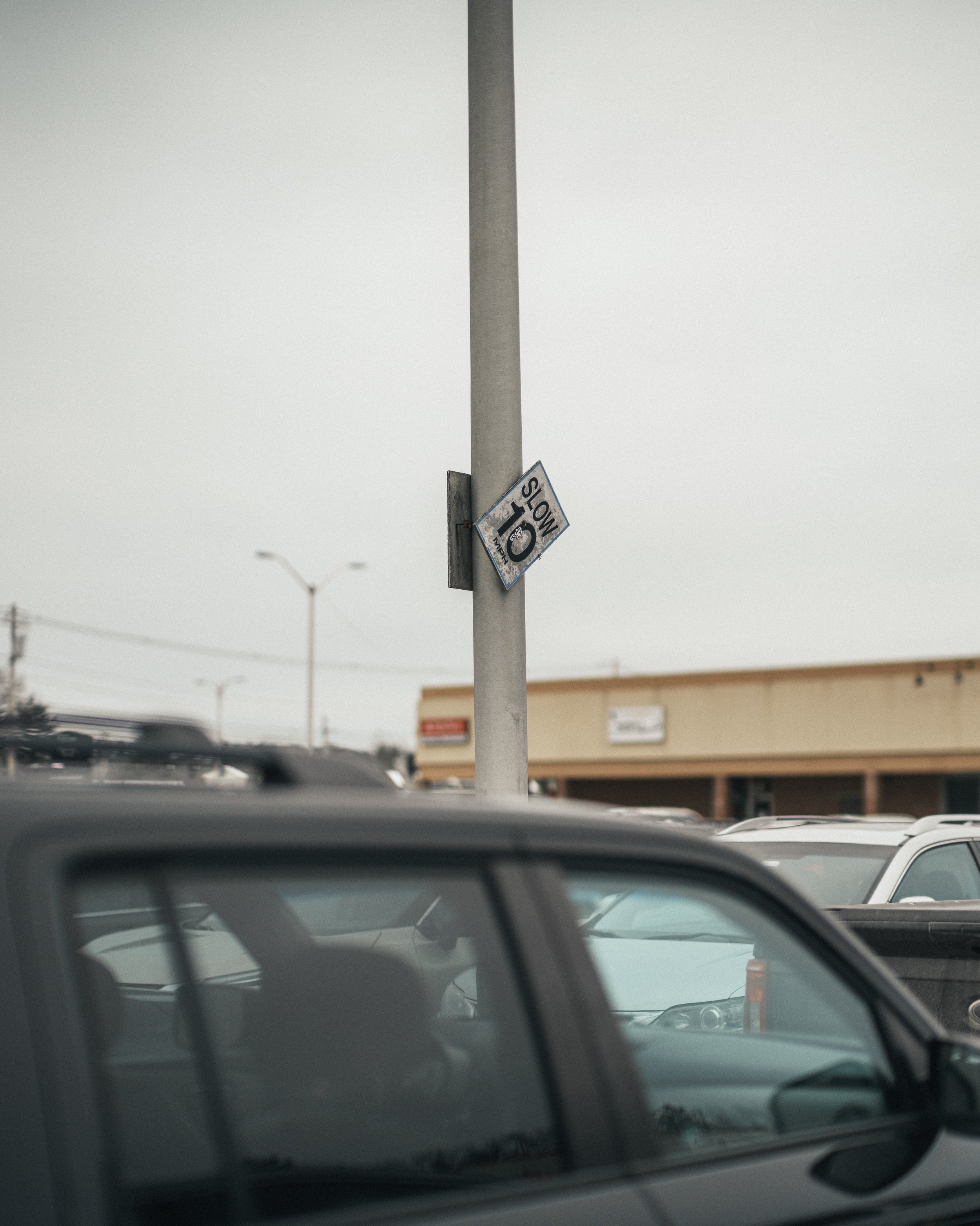
January days
It’s the journey, not the sitting at home on your ass.
Stop signs. Mail trucks. Old tractors. Is there any photographic cliché I won’t photograph? Unsure.
This might not be the most unique subject material, but on these cold days, any creative outing at all is a win.
Keep getting out there. The practice is what matters.
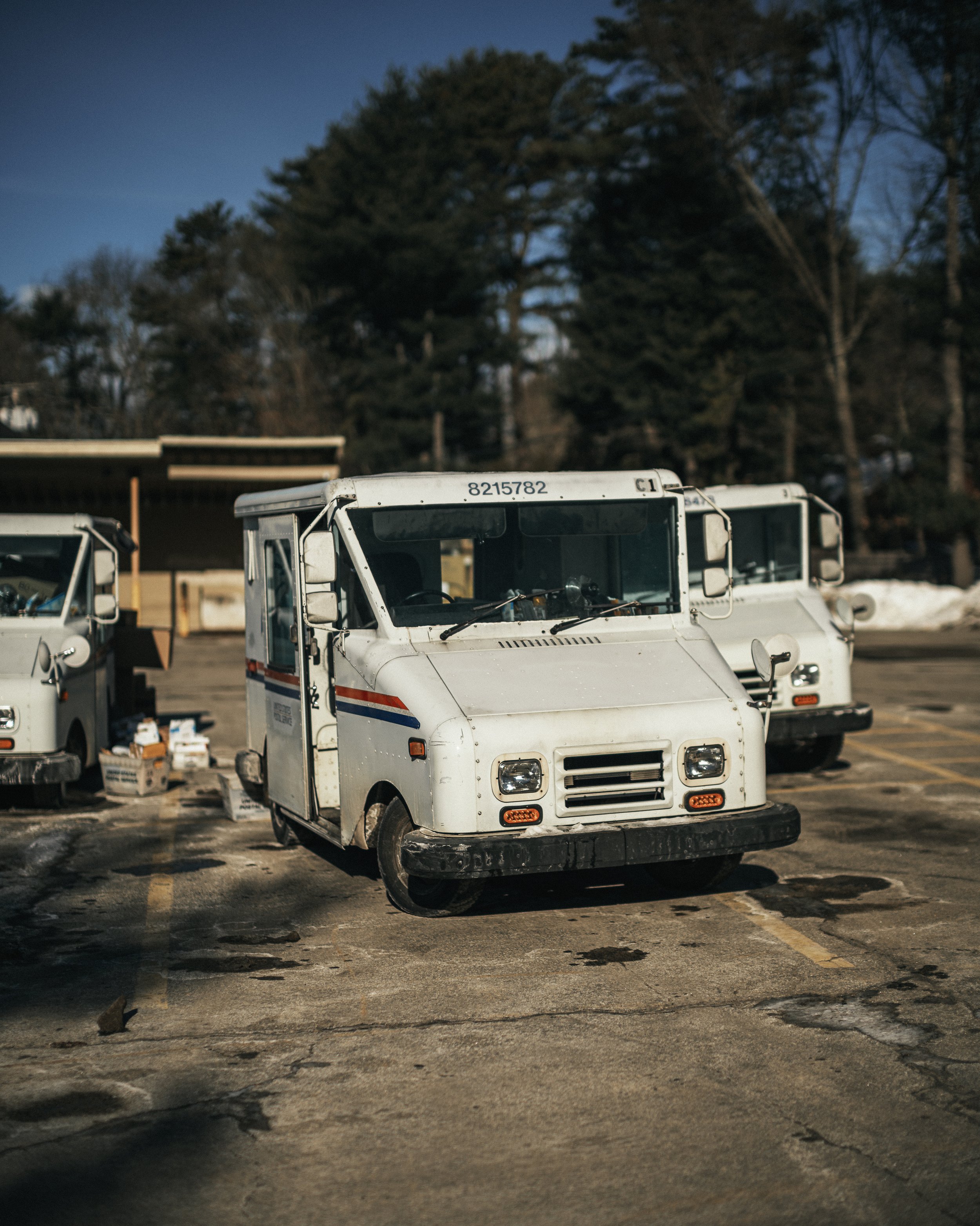

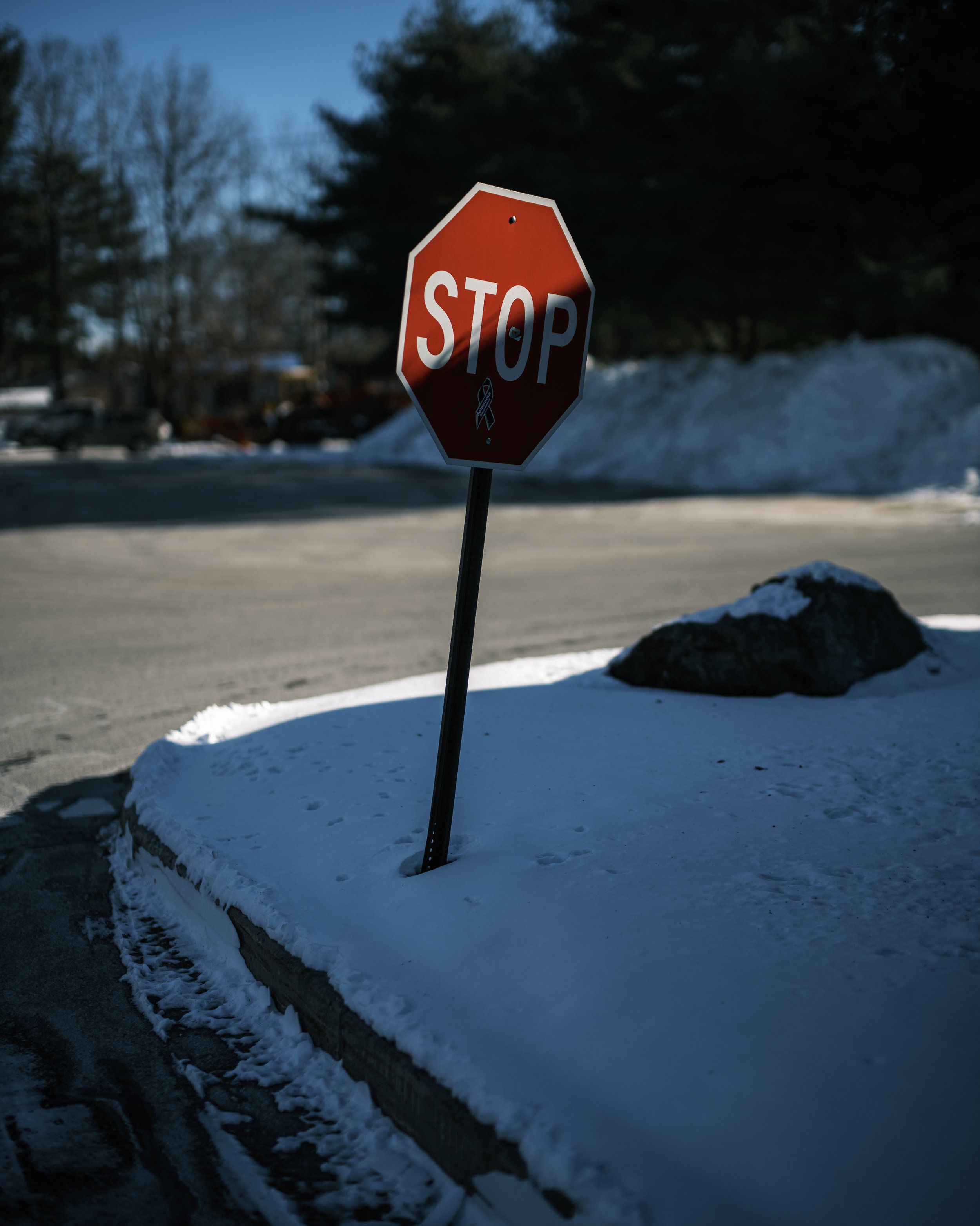
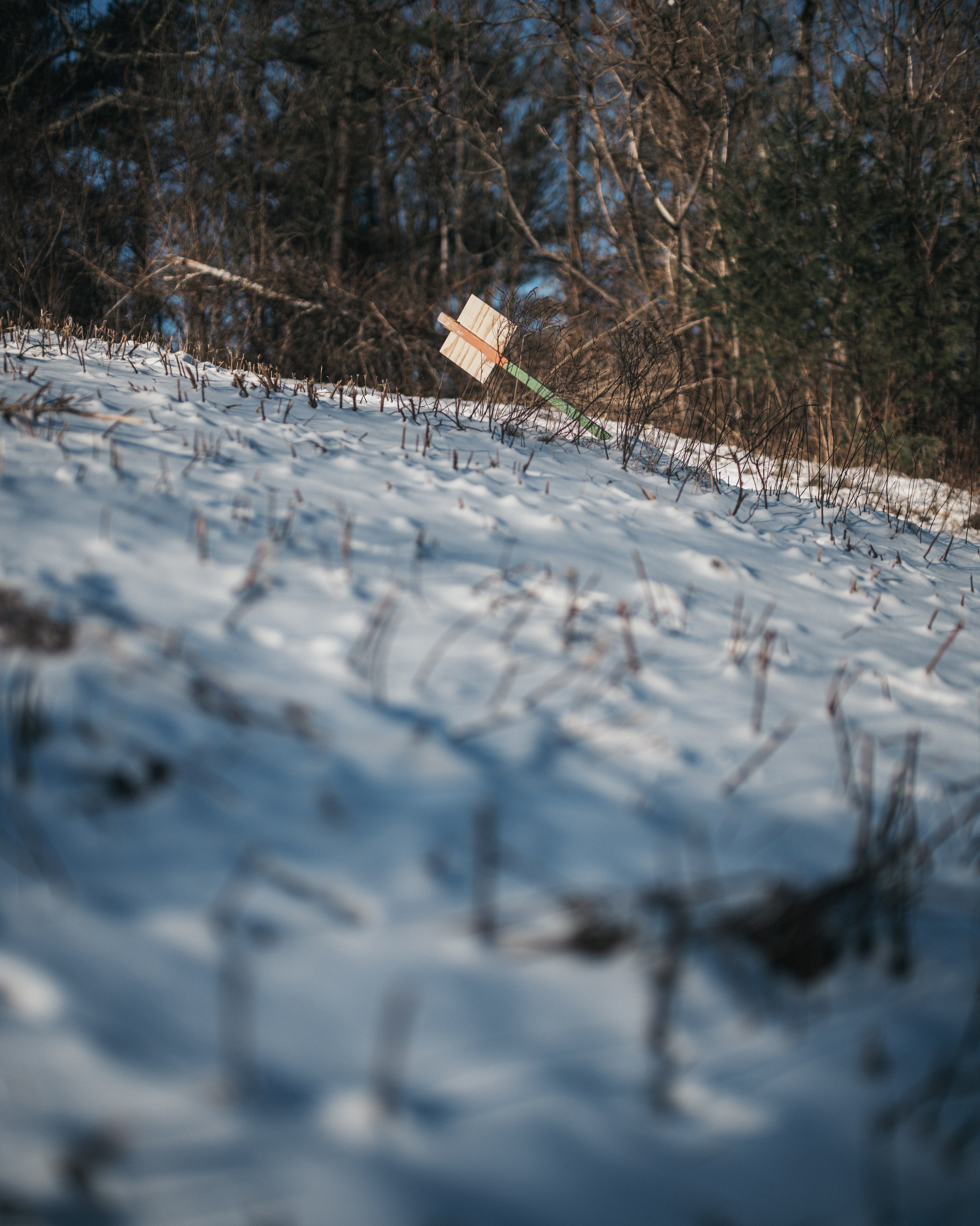
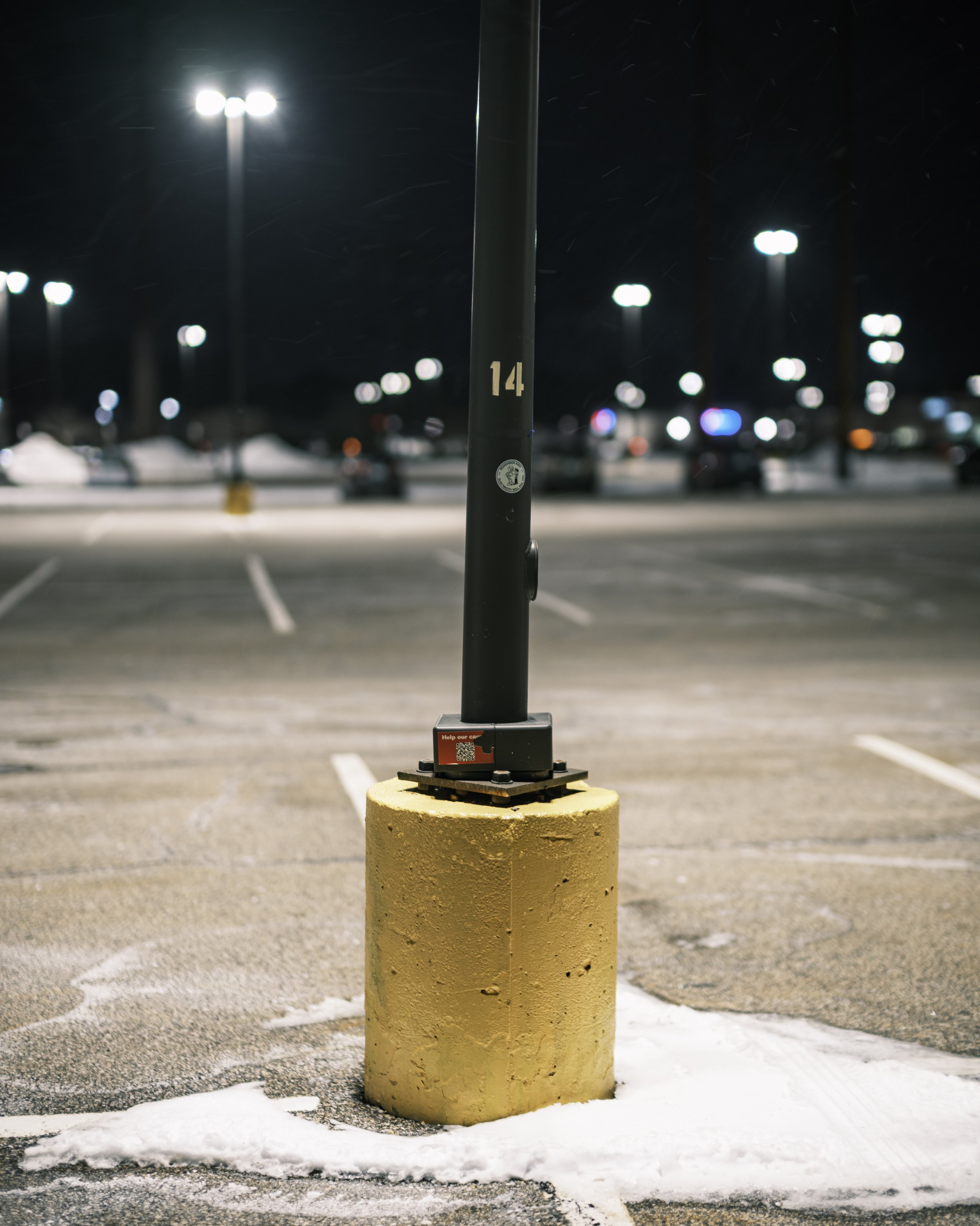
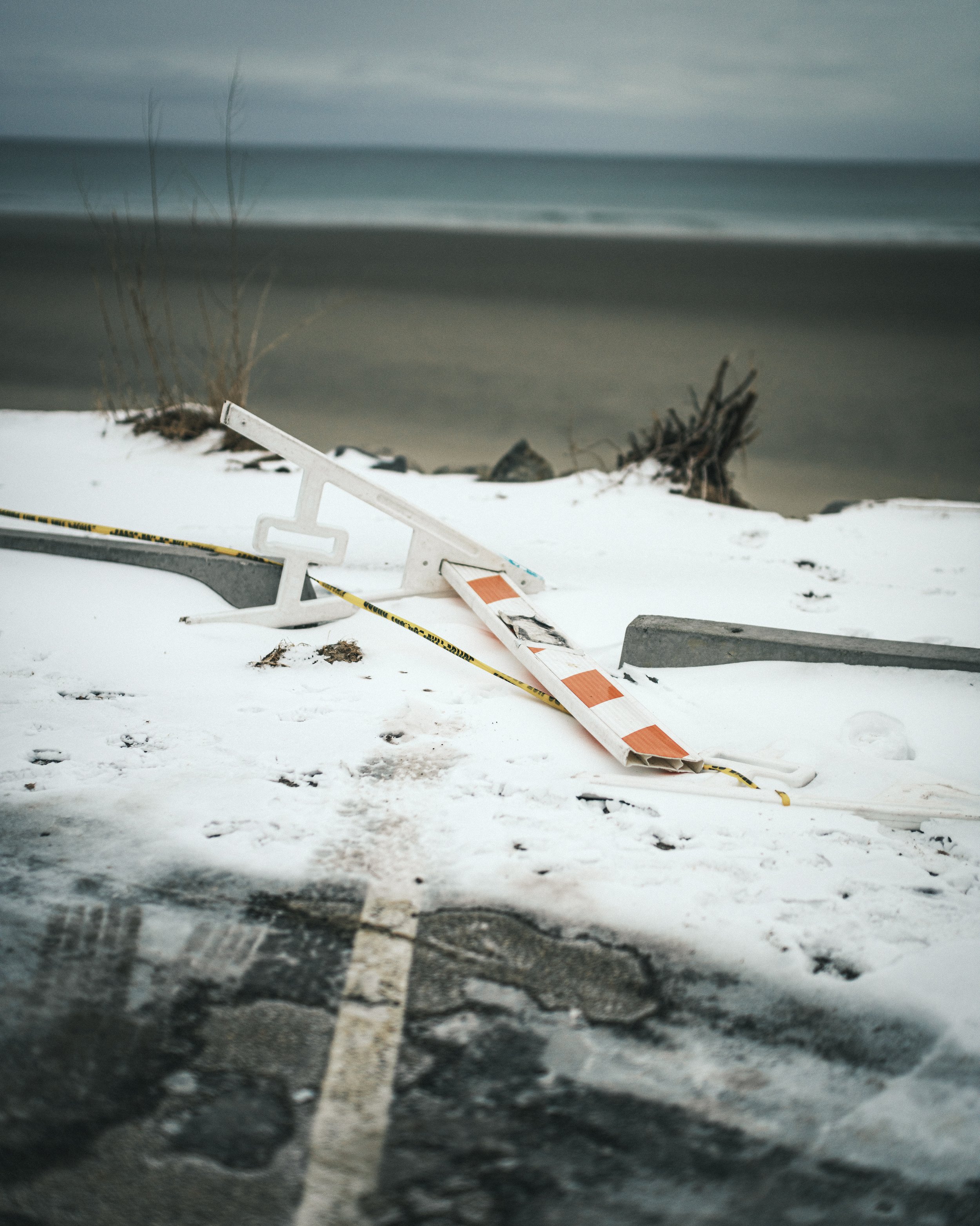

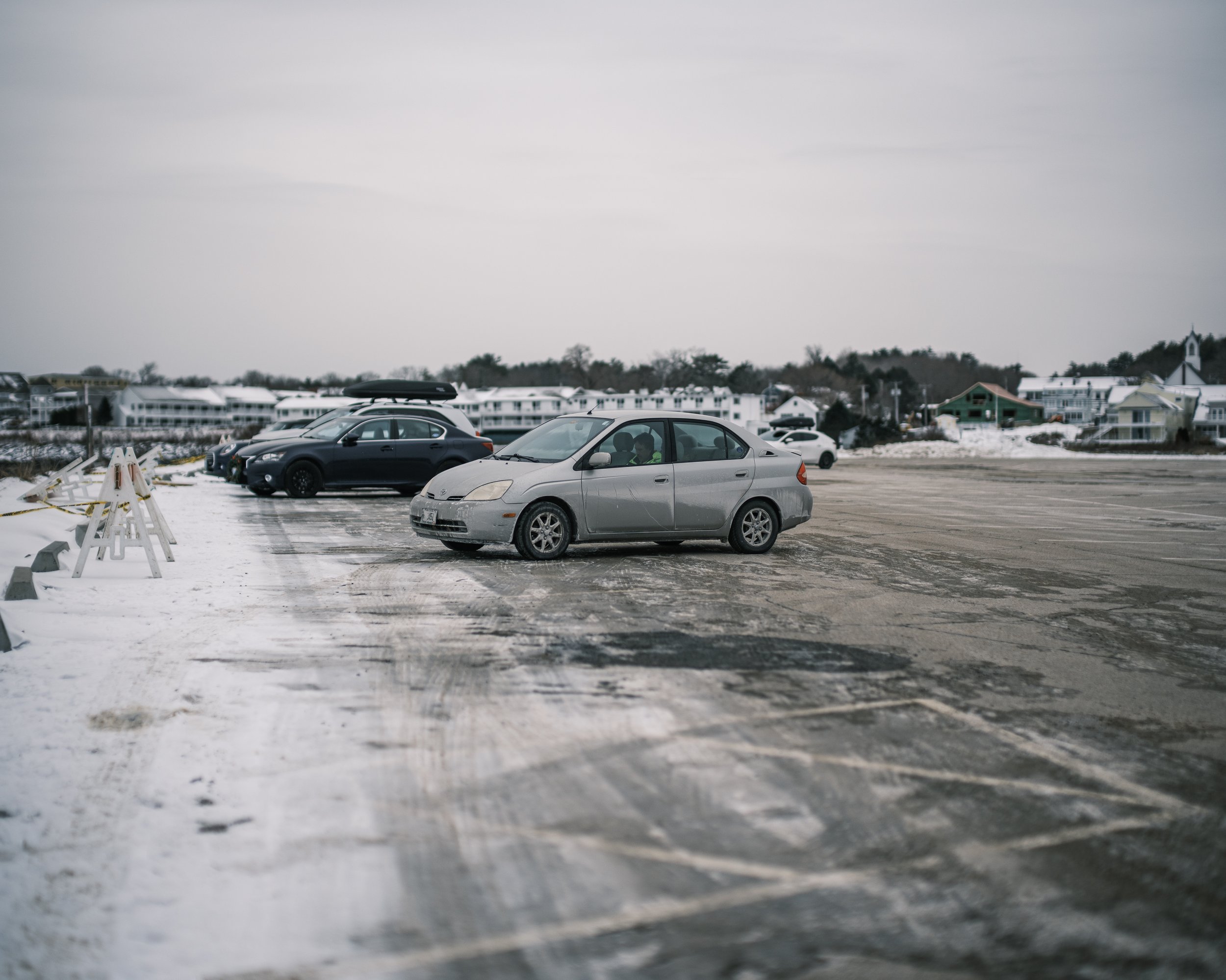
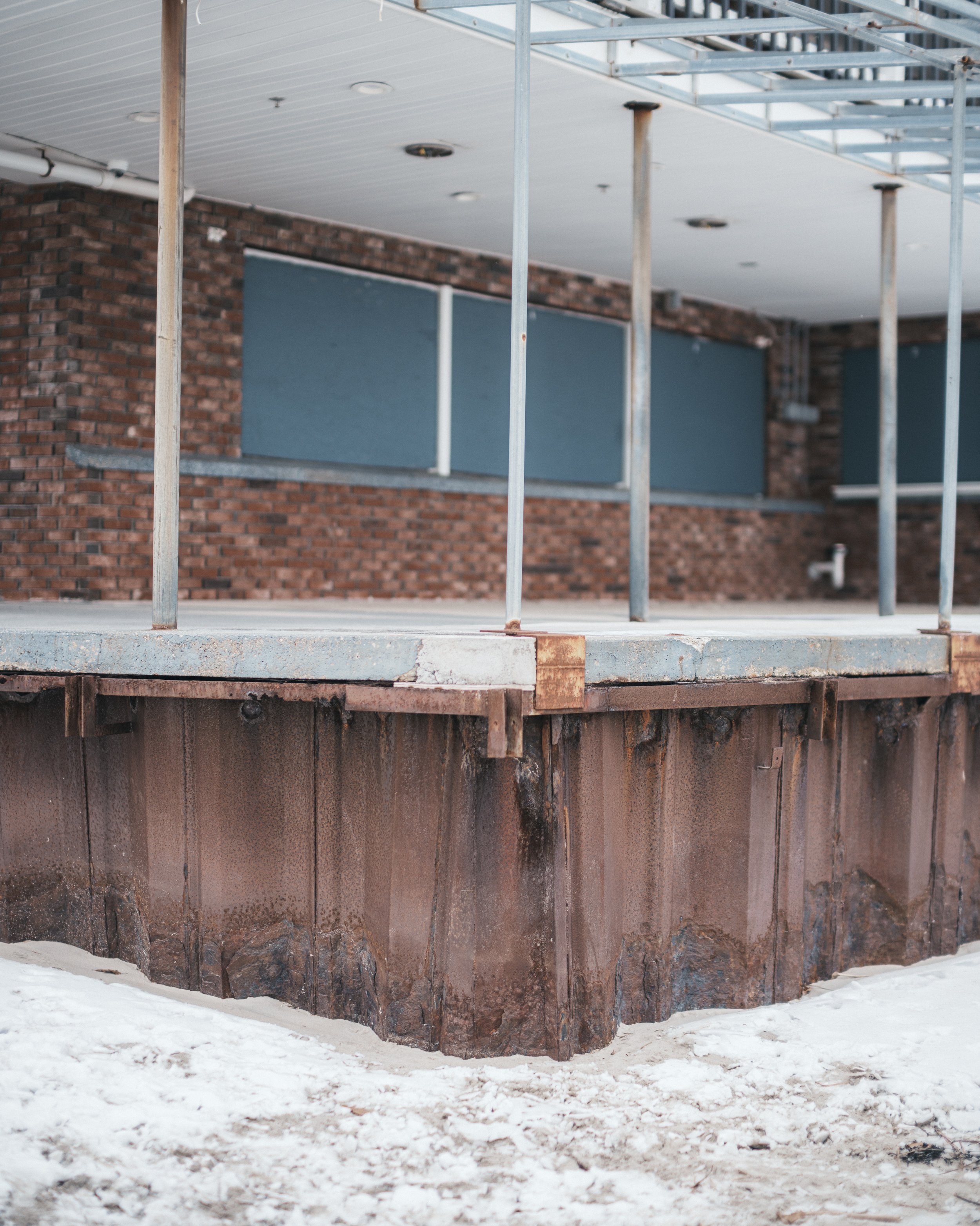
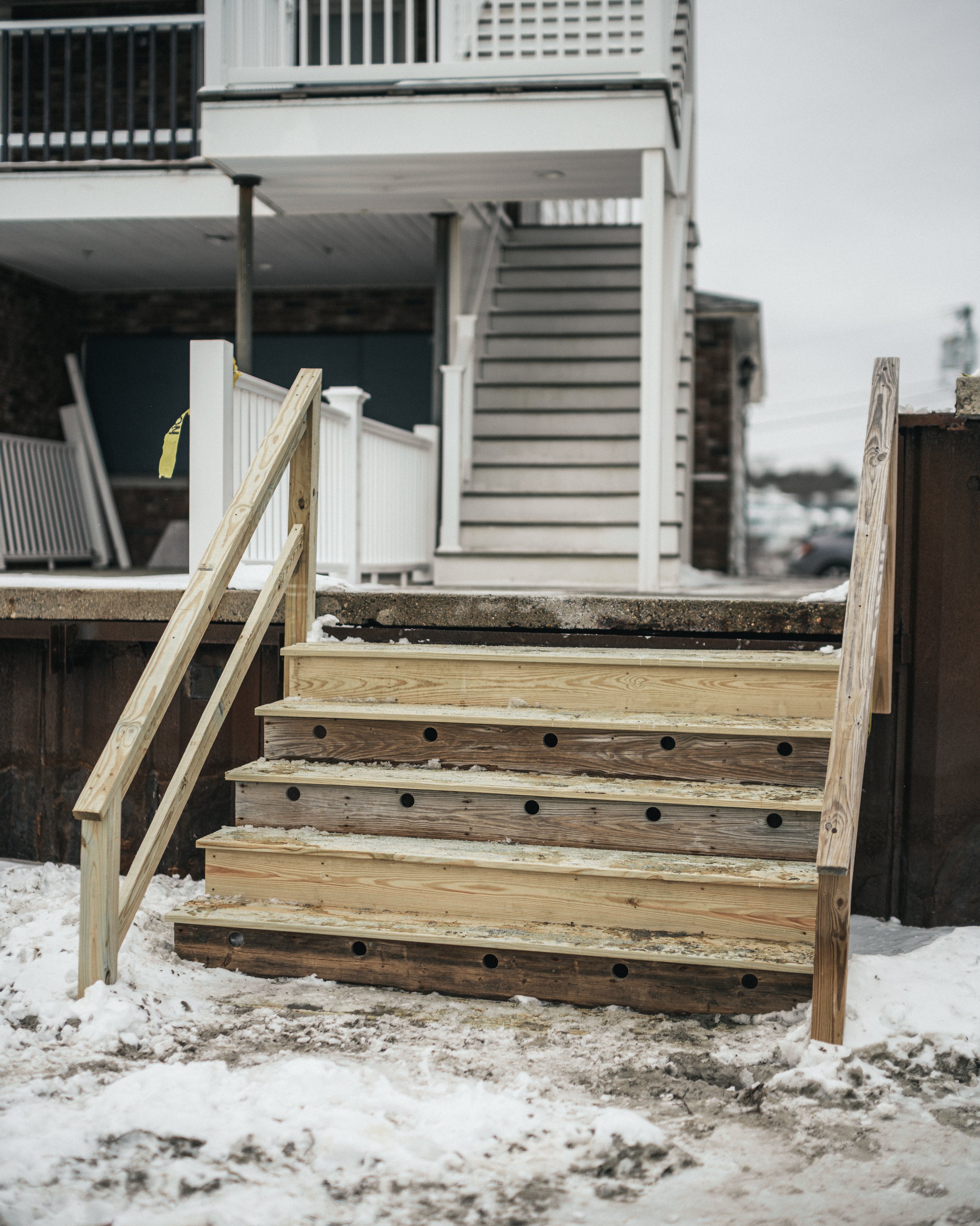
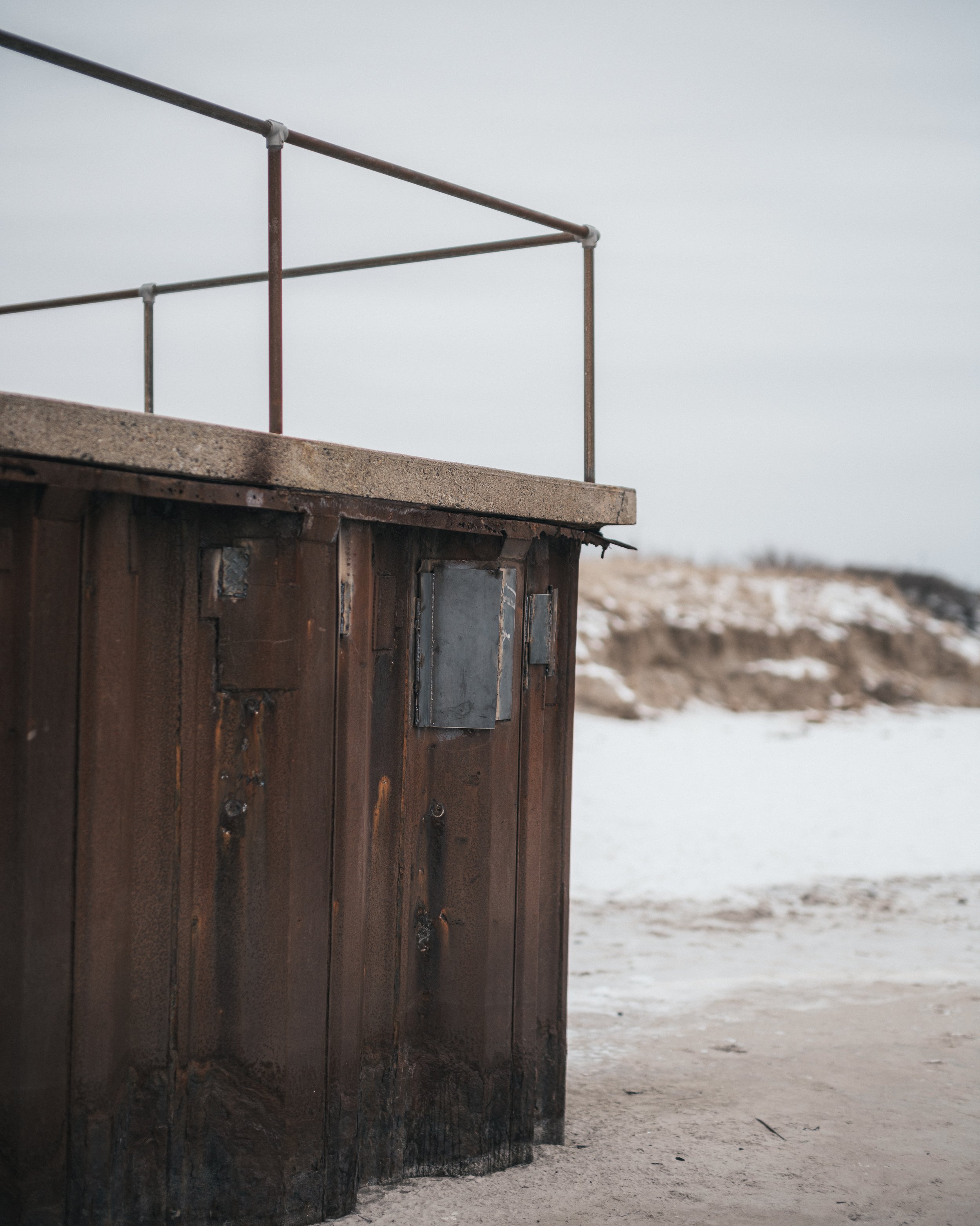
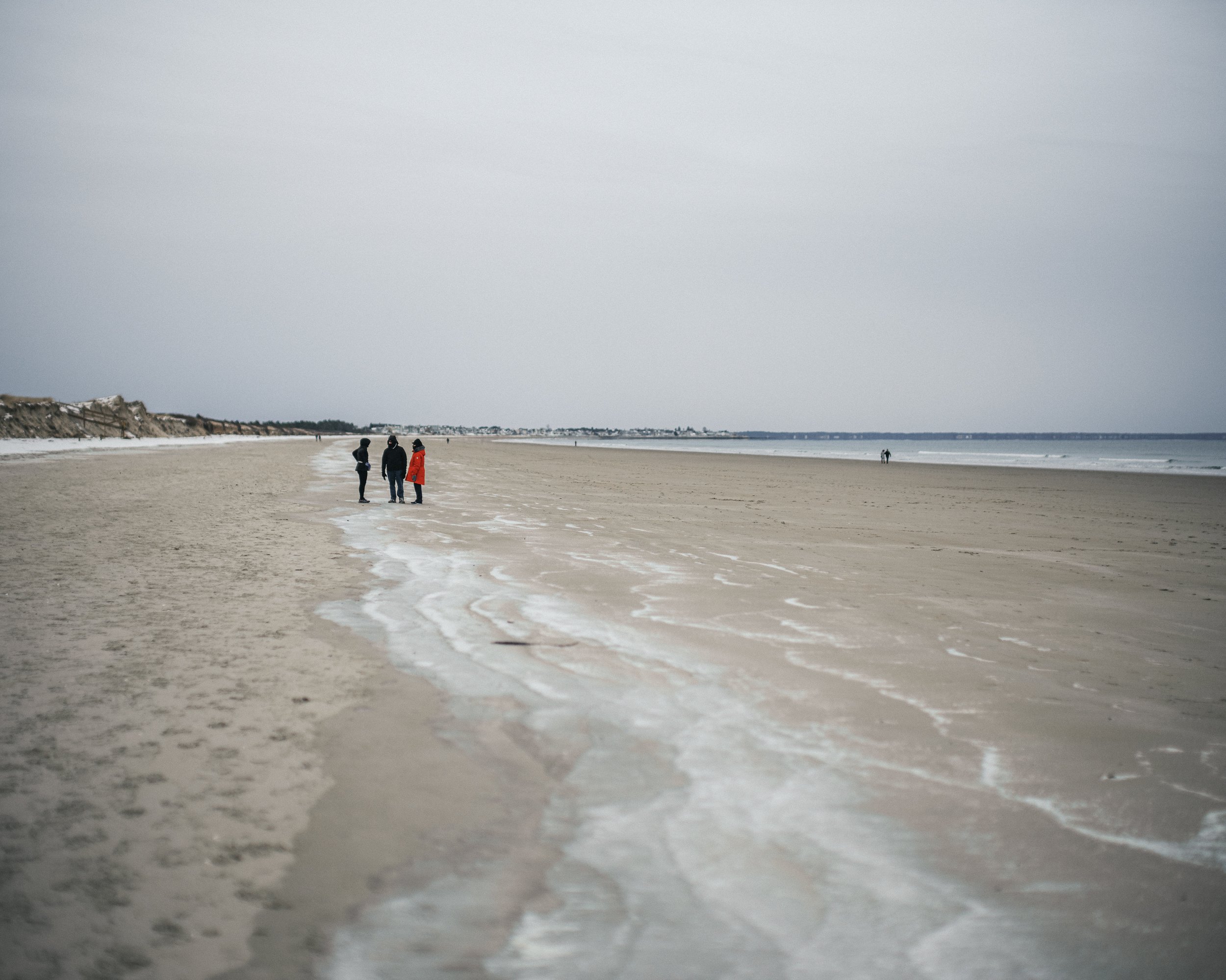
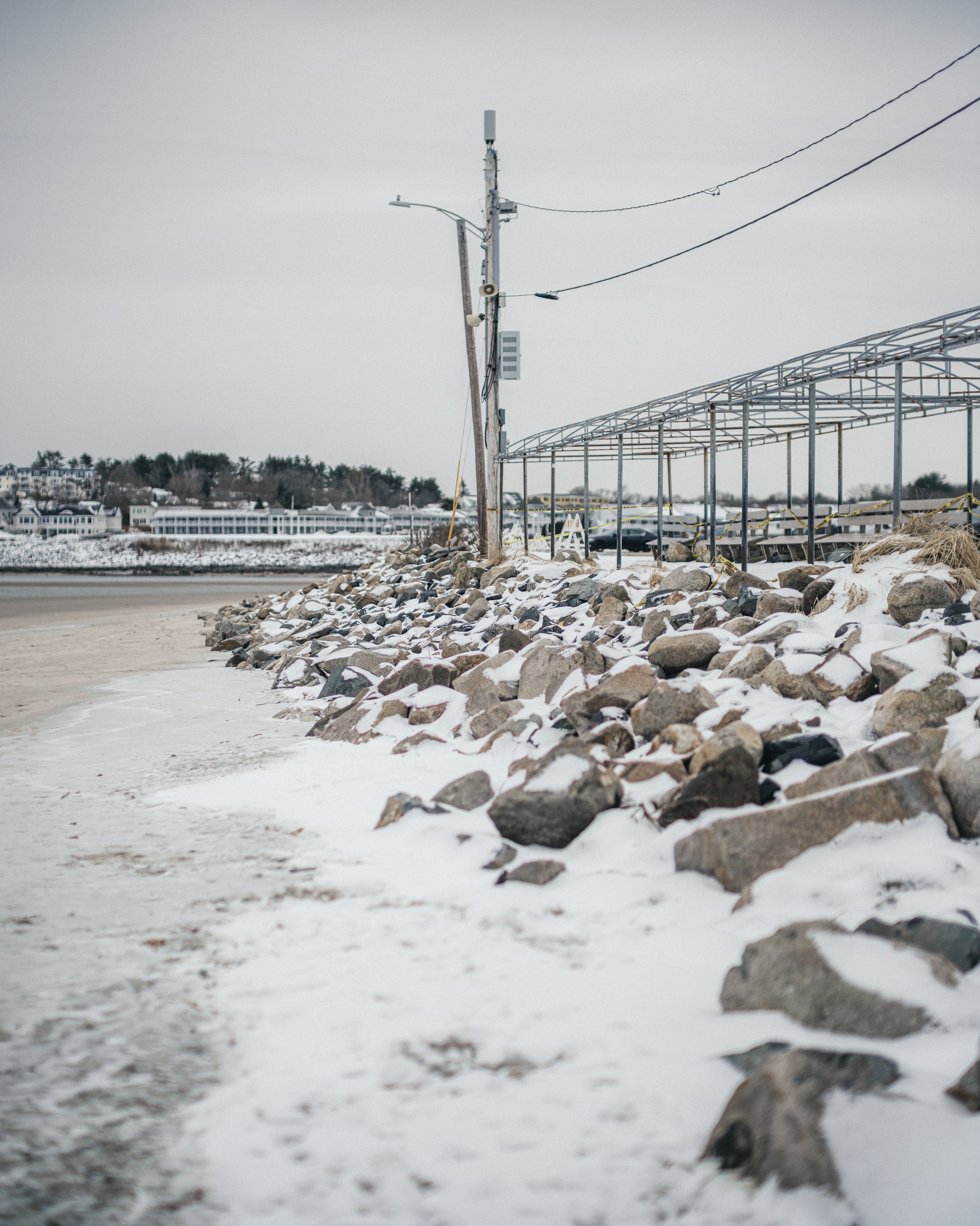
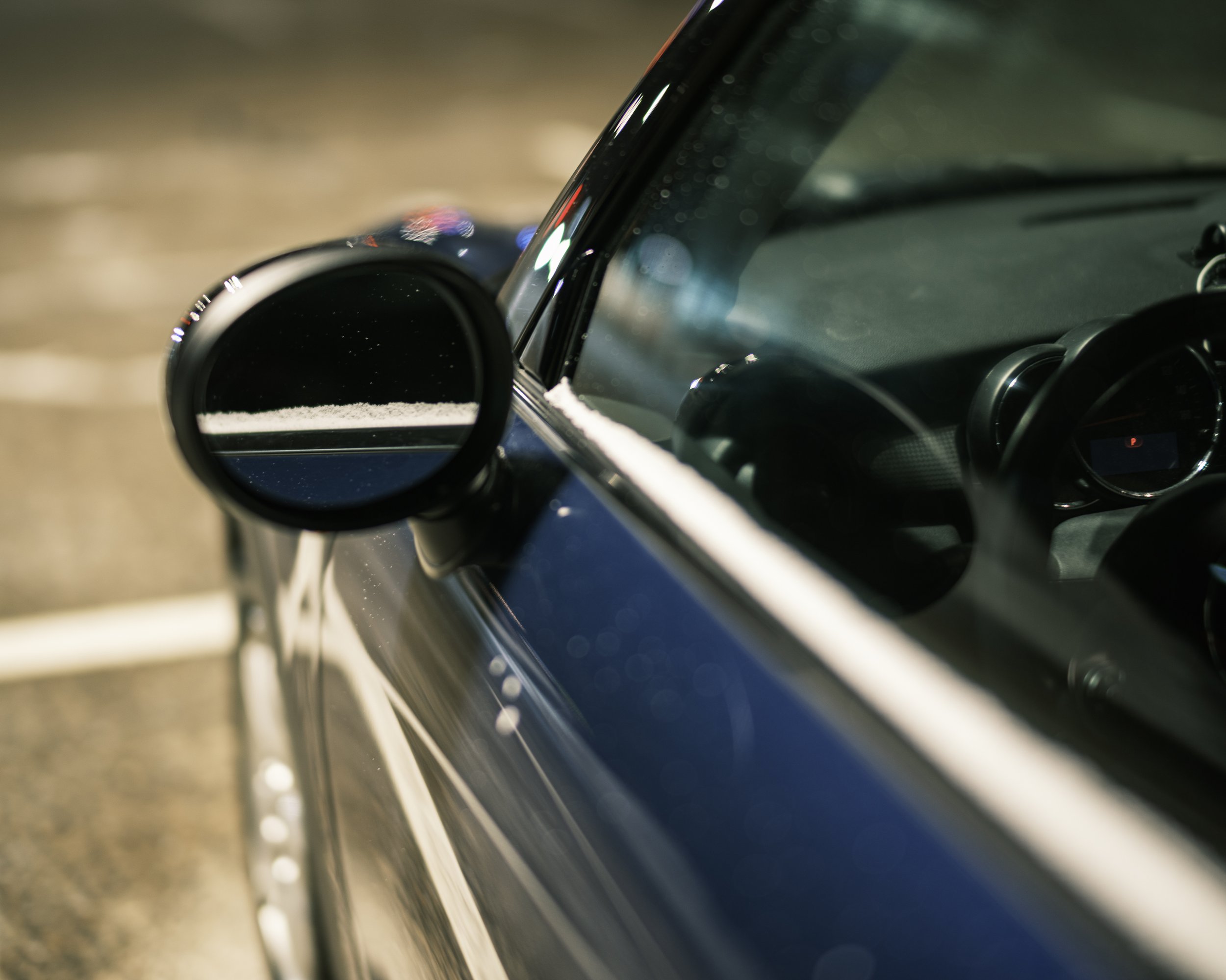
Flood warning affects your immediate area
[turns off notifications]
Two posts in one day?! Please don’t call the best practice police.
My CARROT weather app seems to send more and more flood warnings lately and finally one of them actually affected me. We had a big rain storm last night, on top of the 12 inches of snow we had 2 days ago. The rain stopped this morning, but the temperature is high, so snow continues to melt. Suffice to say, there’s some flooding.
Our road is currently un-passable by small cars/children. Based on wading into the water, there appears to be about 6 inches on one side, 8 or 10 inches on the other. I decided to make lemonade and took some photos while I was investigating the damage.
Let me tell you, that boot shot was not easy to get with that heavy Mitakon + GFX combo. Fortunately I didn’t drop anything in the water.
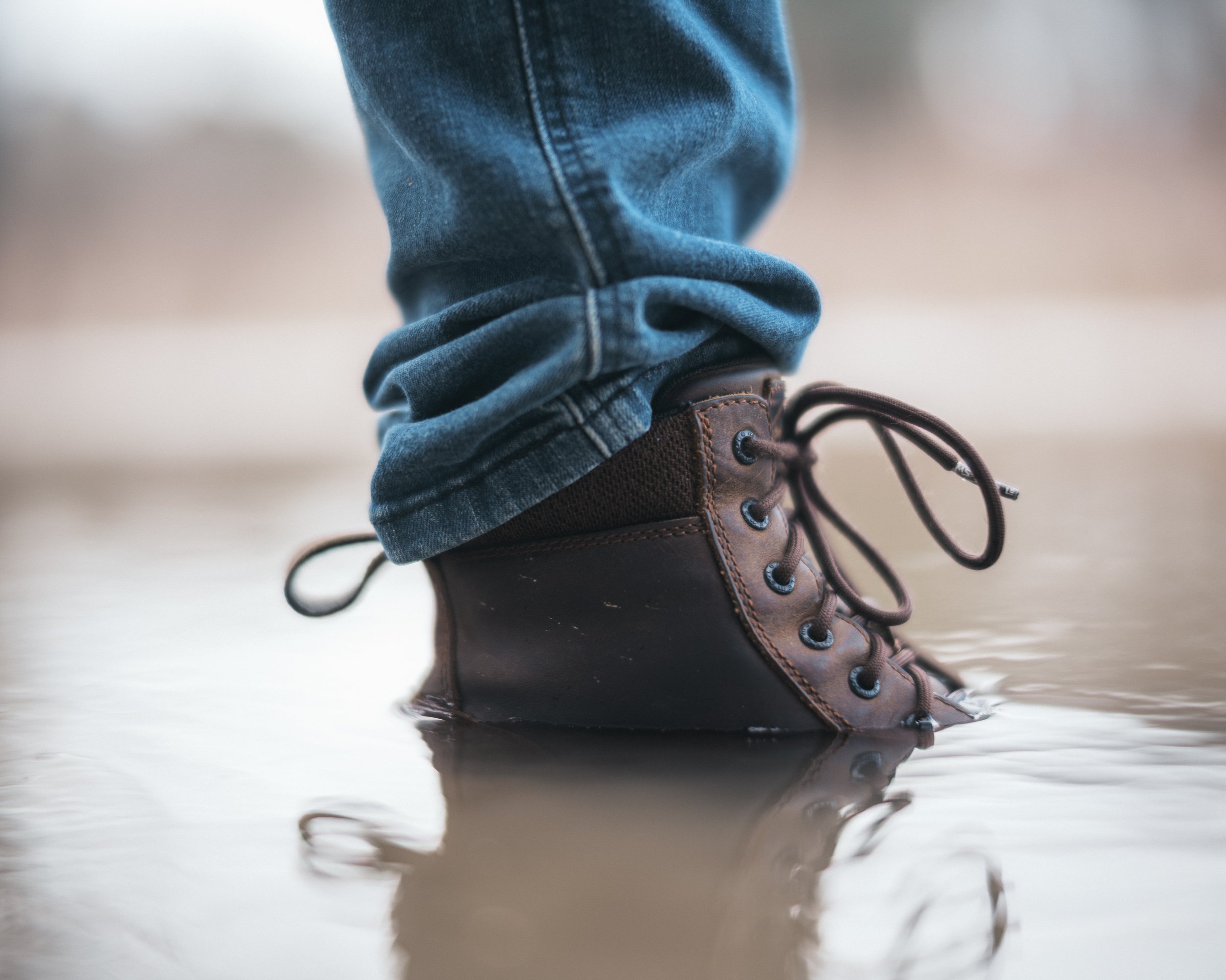
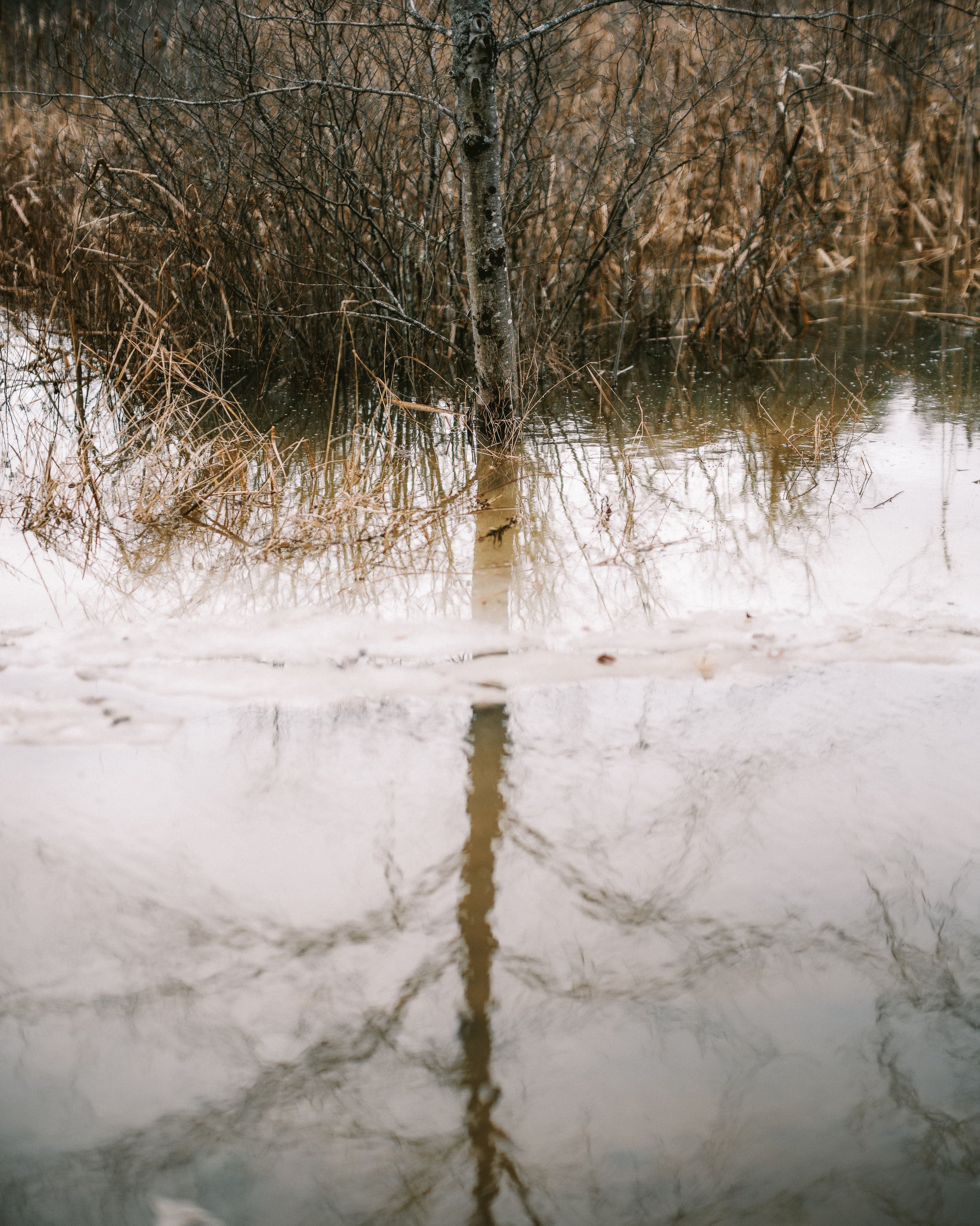
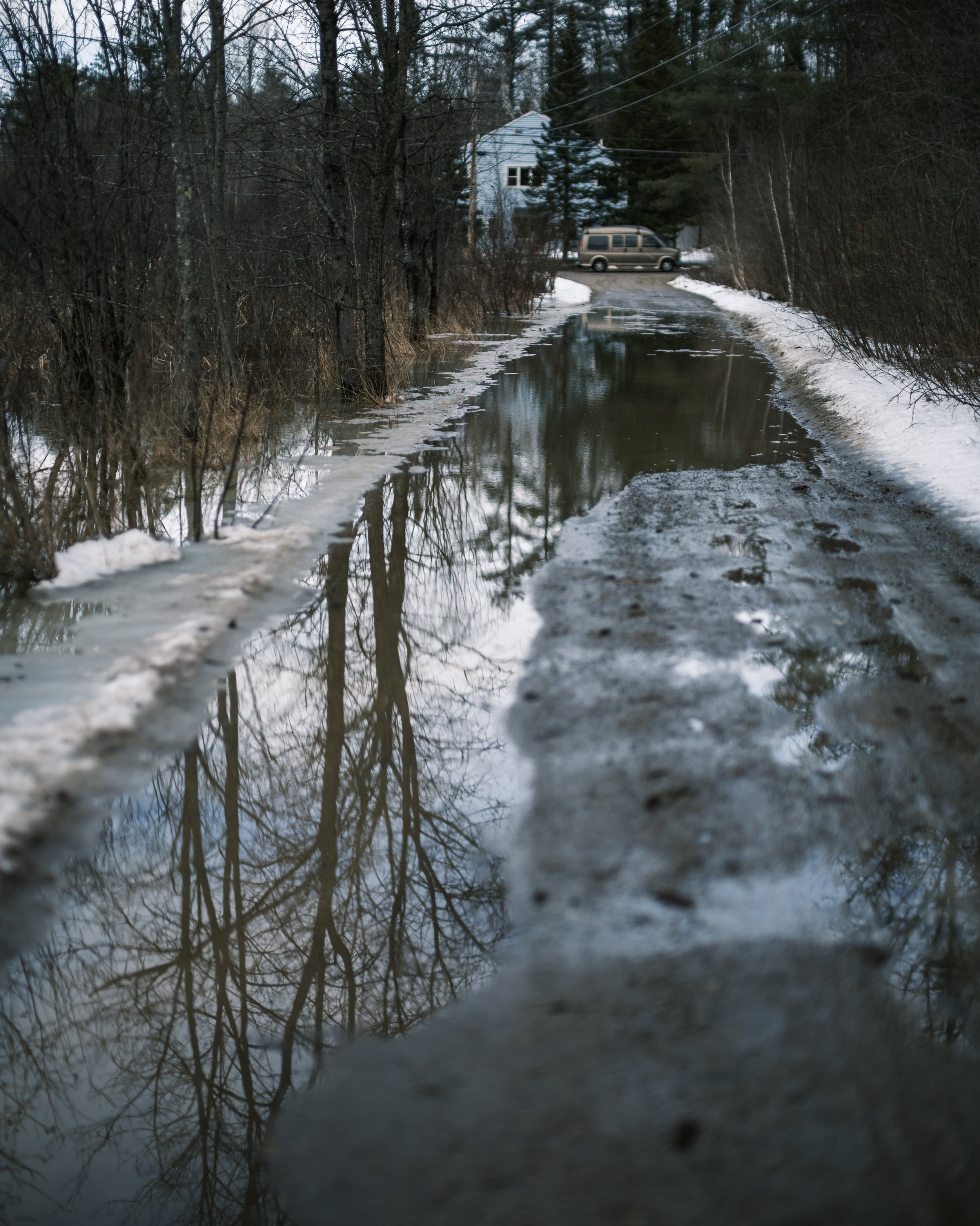
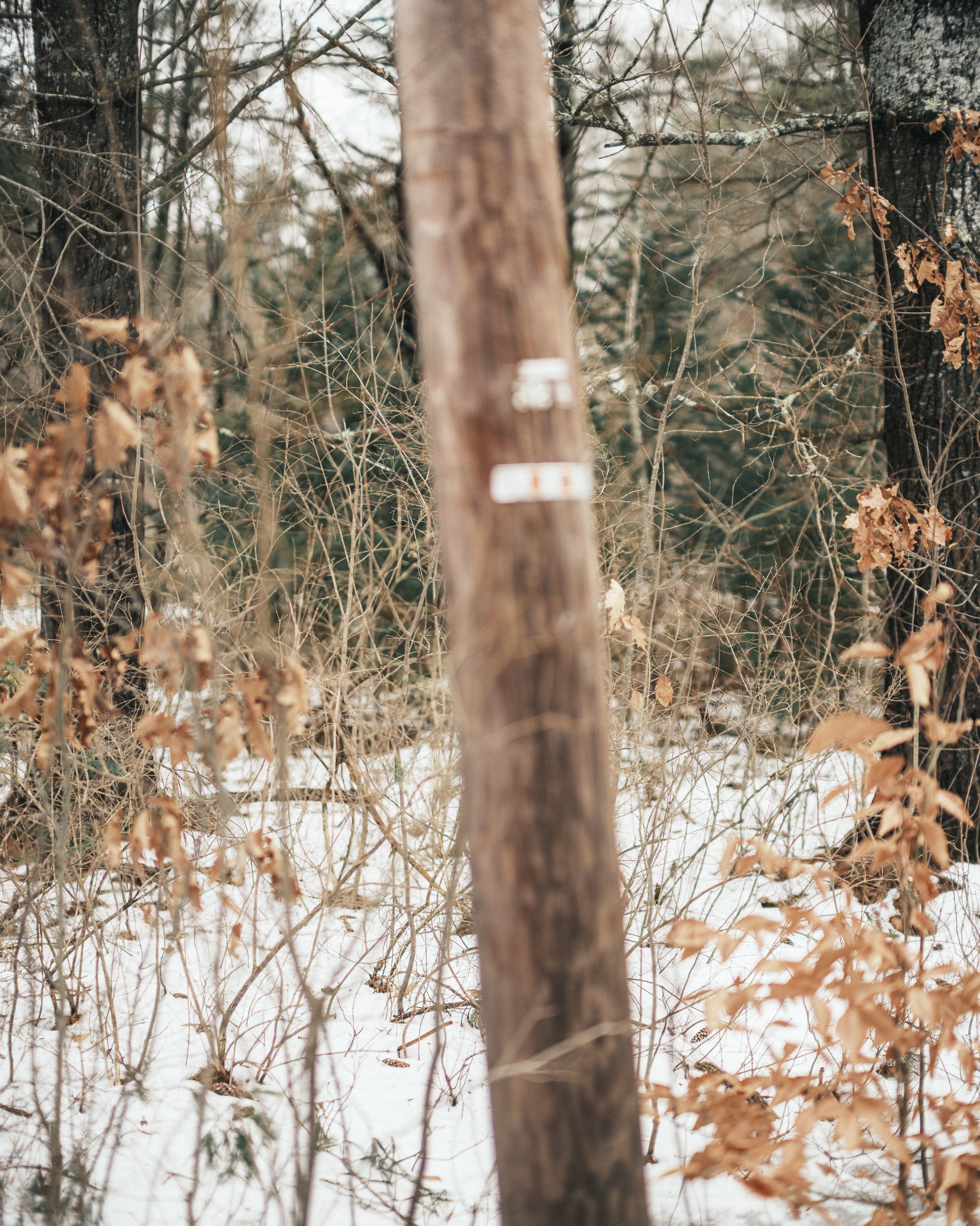
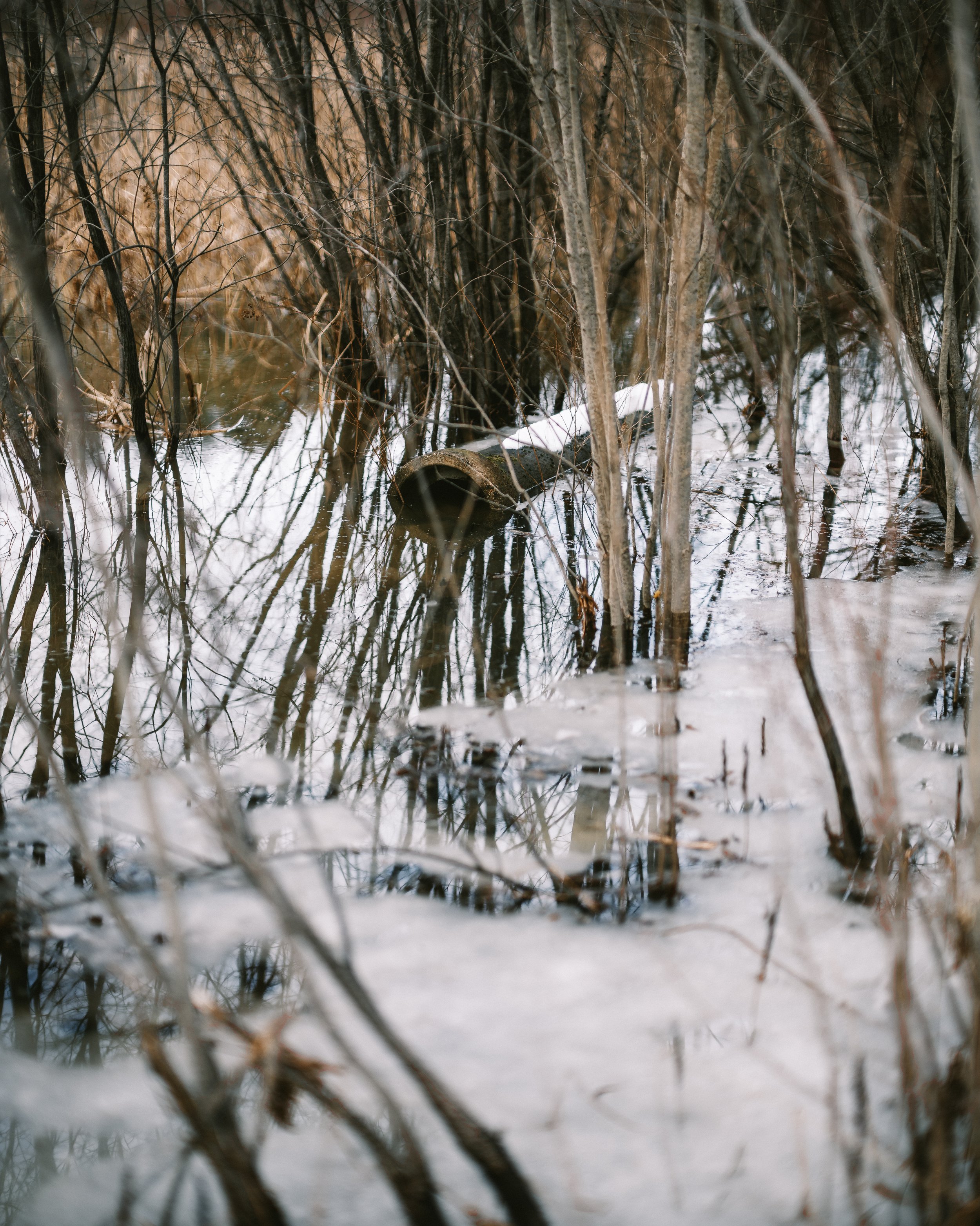
I love big sensors
Insane crop still better than a phone.
Just a quick note about how convenient big sensors can be. I was able to crop to this:
From this:
And it’s completely usable for online sharing.
Also, turkeys are majestic af. Though based on how far away I was when they took flight, they’re a little chicken.
This year’s photo project
The reality of what you’ll find.
It’s been said in various forms by well-known photographers: all photographs are lies. I was reminded of the truth of this when I visited the popular Nubble Lighthouse in York, Maine recently.
Almost every photograph taken at a well known landmark seeks to frame the obvious subject without other distractions. Other tourists, power lines, trash cans, parking lots—most of us try to eliminate the “ugly” bits that don’t match the tourism board’s brochure crop.
A tourist-heavy (almost all out-of-state plates) destination like Nubble also highlights another photographic lie. Many people pull their car into the lot, leave it running, and jump out for no more than 3 minutes to get a selfie with the lighthouse in the background. Then they drive away, which, frankly, good riddance. This is akin to the influencers who wear their bright orange or blue jacket to get a photo of themselves by a mountain lake, then drive to the next scenic location to rape it for content. The lie is that they spend time in nature, that they care about this stuff.
After observing this behavior (which is a common occurrence in Vacationland and other “destinations”) for a while, I realized the real story at these places isn’t the obvious subject. It’s the reality of what’s happening in front of it.
Once I started seeing this reality, I tried to capture a bit of it. Later, when I was home and discussing the phenomenon with Jennifer, we thought of other photos that would’ve helped tell the story. As we talked, I realized that this is the series I want to tackle in the new year: the reality of what you’ll find at ’gram-worthy travel destinations. It isn’t always pretty, but in some ways it’s more interesting. Maybe the truth is always more interesting than a lie.
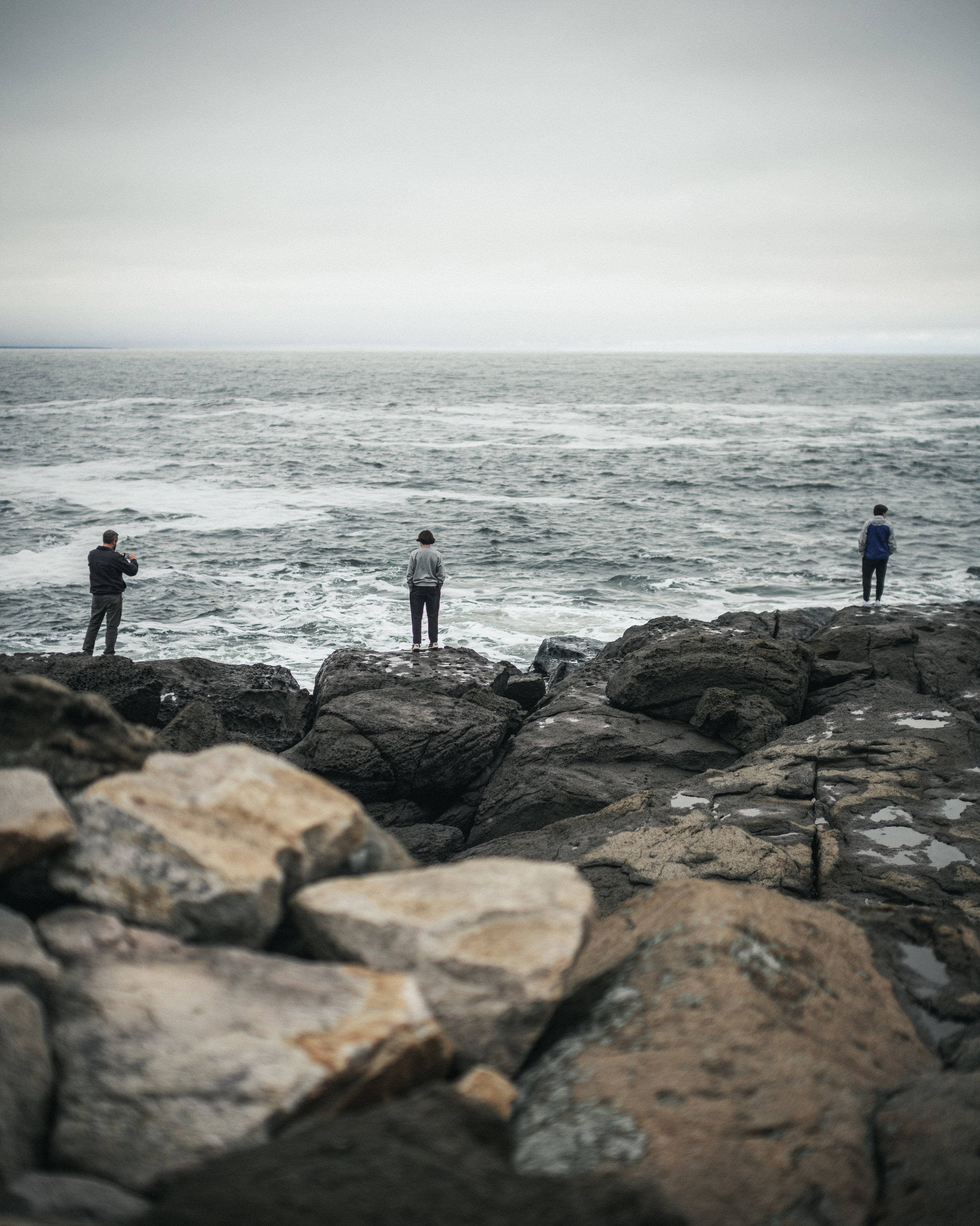
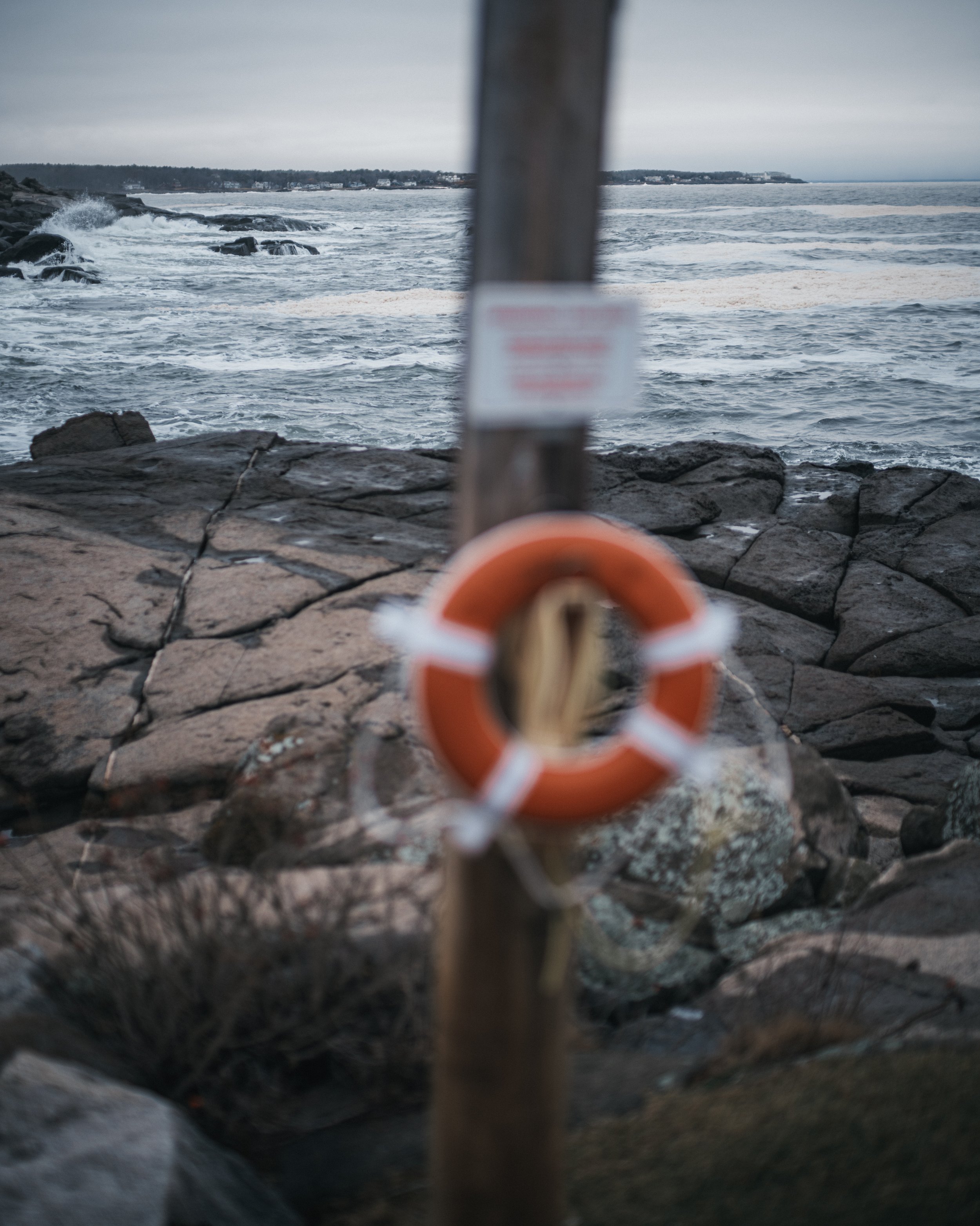
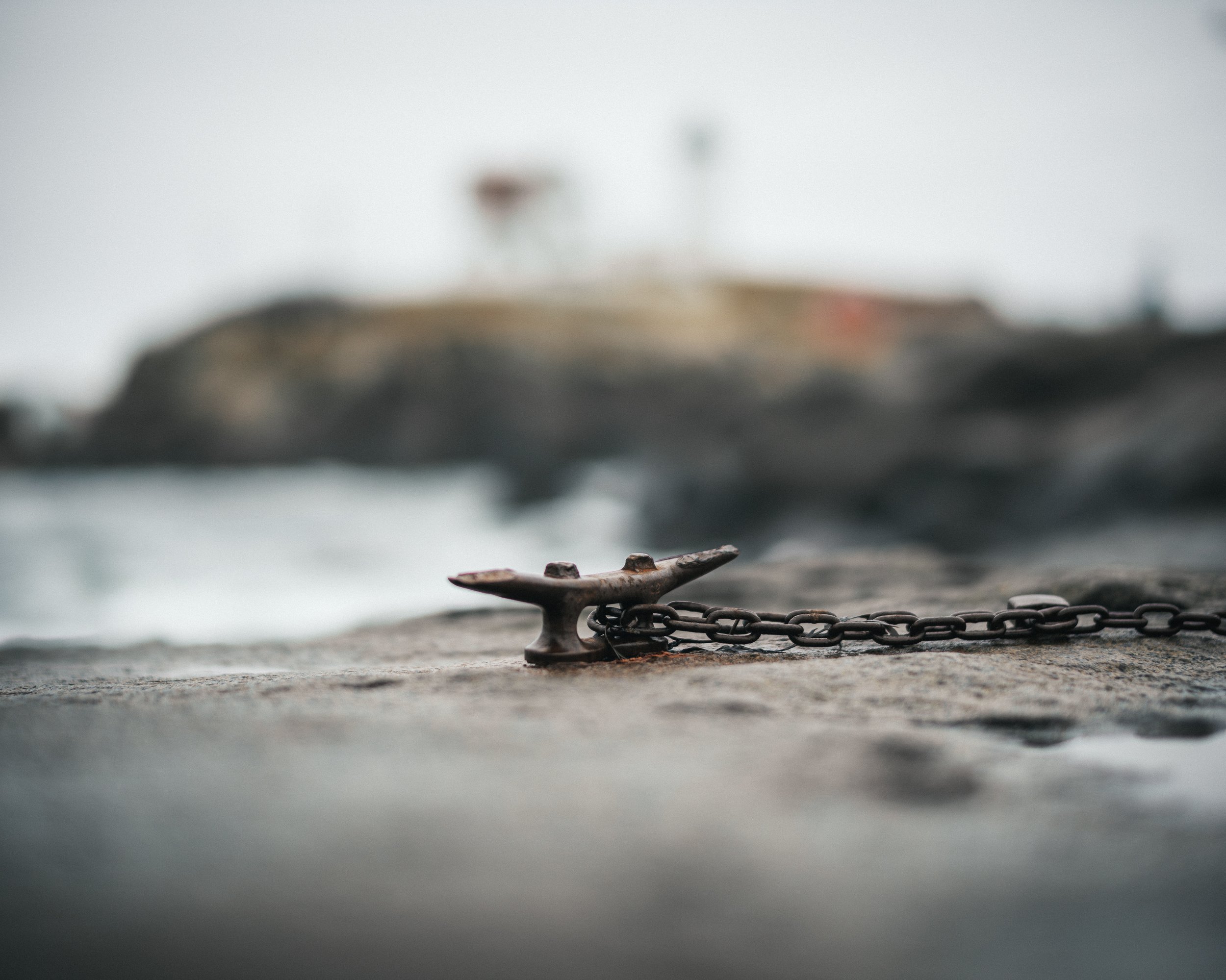
The challenge will be to show it all. While the quick-pic-and-leave people are annoying, there are others who really soak in what they’re experiencing, enjoying the crash of the waves and the wonderful air. I want to show a well-rounded subset of what is happening at these places, from a neutral perspective. That will be difficult.
We live in Maine and frequently visit locations like this. I’ll start there. We’re also planning a road trip to see some of America’s natural wonders in the West, most of which I’ve never been to despite living in Wyoming for a decade. That should make this a good year for such a project.
(Another related goal is to add a portfolio section to this website that collects series and themes so visitors can view my favorite work without digging through the blog. Stay tuned.)
I hope this idea resonates with you. I’d love to know your thoughts and hope you’re able to follow along.
A second first snow
That first snow was so nice, we did it twice.
It’s no secret that I don’t like snow. I endure Maine’s (really, not that bad) winters because the other 3 seasons are more or less perfect. But we got our first snow of the season—again (the first first one melted), and the way it was sticking to the grass before piling on and flattening it was interesting. Here are some closeups for you snowaphiles.






A comfortable rhythm
I know what I like to shoot and how I like to shoot it.
Though I still love to experiment with different lenses and cameras, I’ve also arrived at the point in my photographic journey where I know the sorts of things I really enjoy shooting because the results are predictable. Some of it is cliché, like old cars. Some is odd, like dumpsters. And some is just random items I see that make me wonder about how they got there.
These are always shot with my GFX 50s ii and Mitakon 65mm f1.4. The lens is always wide open. The photo is usually a little under exposed, and the RAW processed with Fujifilm’s Classic Negative color profile. The crop is always 4:5, usually portrait orientation. The subject is usually centered, and usually clearly separated from the background.
This is the formula that I love coming back to. Here are a few examples that fit into that bucket.
Ramblings about which (Fujifilm) camera to buy
An oldie but a goodie.
Fujifilm XF10 and X-T1
I recently picked up a used Fujifilm X-T1 in the beautiful graphite silver finish for a fantastic price. I’m impressed with how well this camera holds up after all these years. The images are beautiful and the autofocus is faster than I would’ve guessed (based on the fact that YouTube “experts” don’t think even the most modern Fujfilm cameras are fast), but the quality of the build and materials is what impressed me most. Fujifilm does not make them like this anymore, which makes me sad and a little angry.
That camera got me thinking about how many Fujifilm cameras I’ve owned over the years, so I made a list, roughly in order. These are cameras that I owned and used longer than the return period.
X-T10
X100T
X-T2
X100F
X-T5
XF10 (still own)
GFX 50s ii (still own)
And here are the cameras I’ve tried and returned (and one still inside the return period). Usually I return them because they didn’t fill a need well enough to justify the cost, or I decided on a different option.
XF10 (the first time)
GFX 50s ii (the first time)
GFX 50r
X-S10
X-S20
X-H2
X-T1 (just bought, plan on keeping)
If we count the cameras I’ve owned twice, uh, twice, that’s 14 Fujfilm cameras I’ve held in my hands, put lenses on, and walked around with. And they’re all good cameras. I’ve never tried Sony or Canon, and it’s been years since I’ve used Nikon. But the models from those manufacturers that they put on display at Walmart (yes) or Best Buy make the newer, cheaper-feeling Fujifilm models feel downright premium. I like my cameras with some… class. (Aware that Fujifilm has a history with cheap cameras, too. But let me know in the comments, anyway, so I can get some comment action going on this website.)
I tried one old compact Leica (the X1). It was enough to convince me that yes, there’s a bit of a look to the photos and yes, they’re well made. I don’t know if I’ll ever justify the price for a modern digital Leica, but I am intrigued by the M2 or M6 film models. Leica, for my money, definitely makes the most beautiful cameras. But most of us can only afford to look at the art in the museum, not in our hands. Or at least enjoy buying groceries.
Depending on what you plan on using your camera for, I could recommend any of these Fujifilm cameras. By the time you get up to the price of X-H2/s models, sure, maybe Sony would be a better bet. (I find $2,000+ unconscionable for APS-C sensors.) Fujifilm is certainly chasing that market with those cameras. Gone is the retro cool styling. If you’ve already got X-mount lenses, the X-H series are great cameras. If you make money from your camera or are serious about video, maybe that’s what you need.
Notably missing from my lists above are the rangefinder-style models, the X-Pro series and the X-E series. I’ve always been tempted by the idea of an X100 with interchangeable lenses, but always ended up with the X-T SLR-style cameras instead. My wife recently ordered an X-Pro2, though, so maybe I’ll get to sneak a peek at that. Based on my experience with the same sensors, processors, and features, though, I don’t see how you could go wrong with those models (update your firmware!).
The two models I no longer own that caused me some regret are either of the X100’s and the 50r. The latter, especially, really grew on me while I had it, but since the 50s ii had in-body stabilization, eliminated rolling electronic shutter with still subjects, had a much better grip, and included a free 35-70mm lens, it made more sense.
The model that constantly surprises me and can really always be with you is the XF10. Find one, buy it, use it. The results are the most outsized of any camera I’ve used. Using the same equivalent focal length, it’s a Leica Q without the awkward pocket bulge and second mortgage.
I’ve been on the X100V wait list at B&H for a long time (and am perturbed that apparently people can skip the list by calling up and ordering on the phone). But with this new/old X-T1 and a small lens (TBD), I have honestly lost interest in that beautiful hype monster.
There’s a lot of life left in those older cameras. If I were just starting out today, I’d seriously consider one of the older Fujifilm X-mount models that the YouTubers (and thereby, eBayers, followed by MPBers) haven’t (yet) pumped up. The X-T1 is an excellent camera, even by today’s standards. Why pay more?
Another glorious afternoon at Reid
I am always happy to walk here.
If you’ve followed this blog for any time at all, you’ll know one of my favorite places to walk and take photos year round is Reid State Park in Georgetown, Maine. All of Maine’s State Parks are lovely, but Reid is particularly photogenic regardless of where you are in the park. Here’s another batch from this weekend.
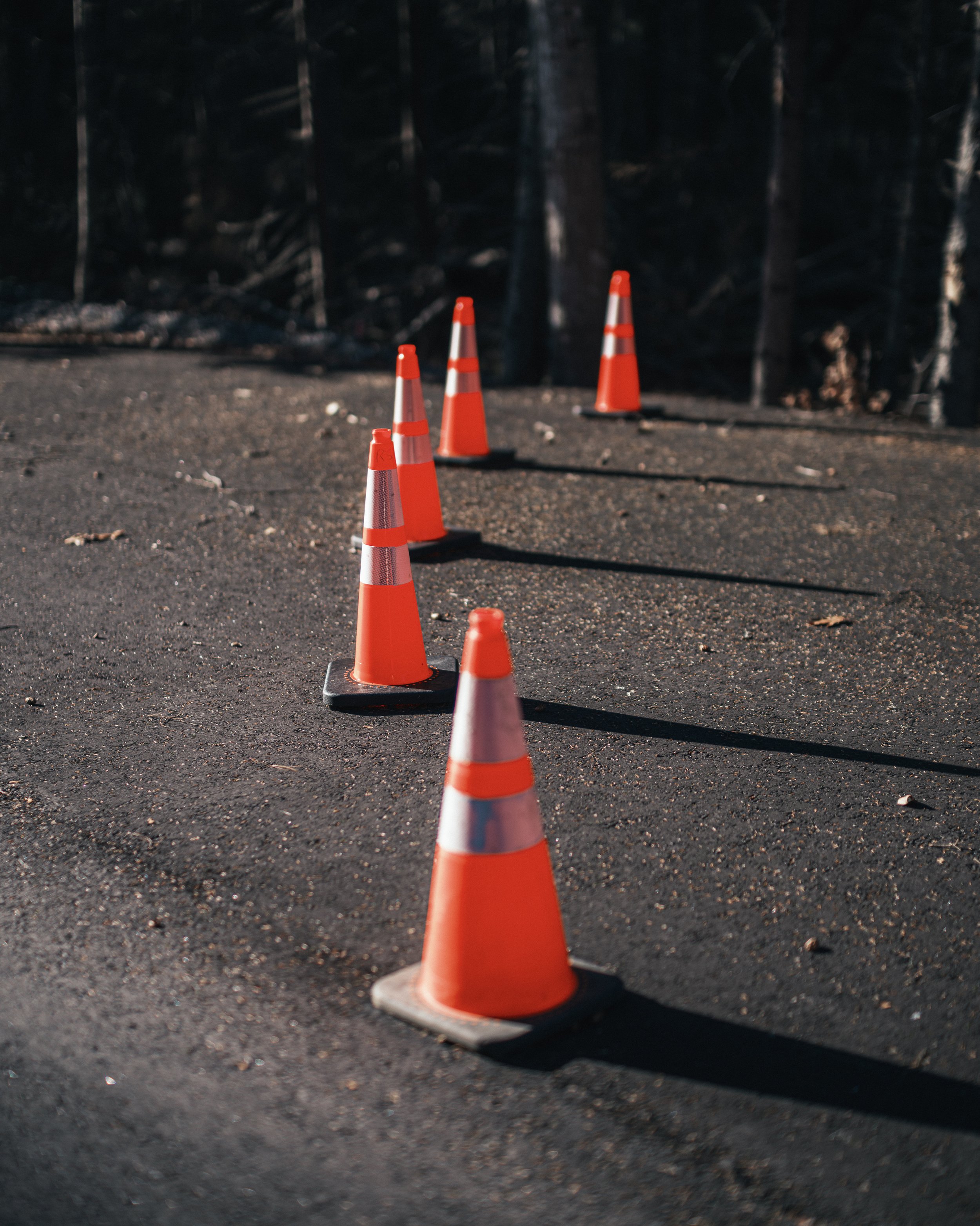

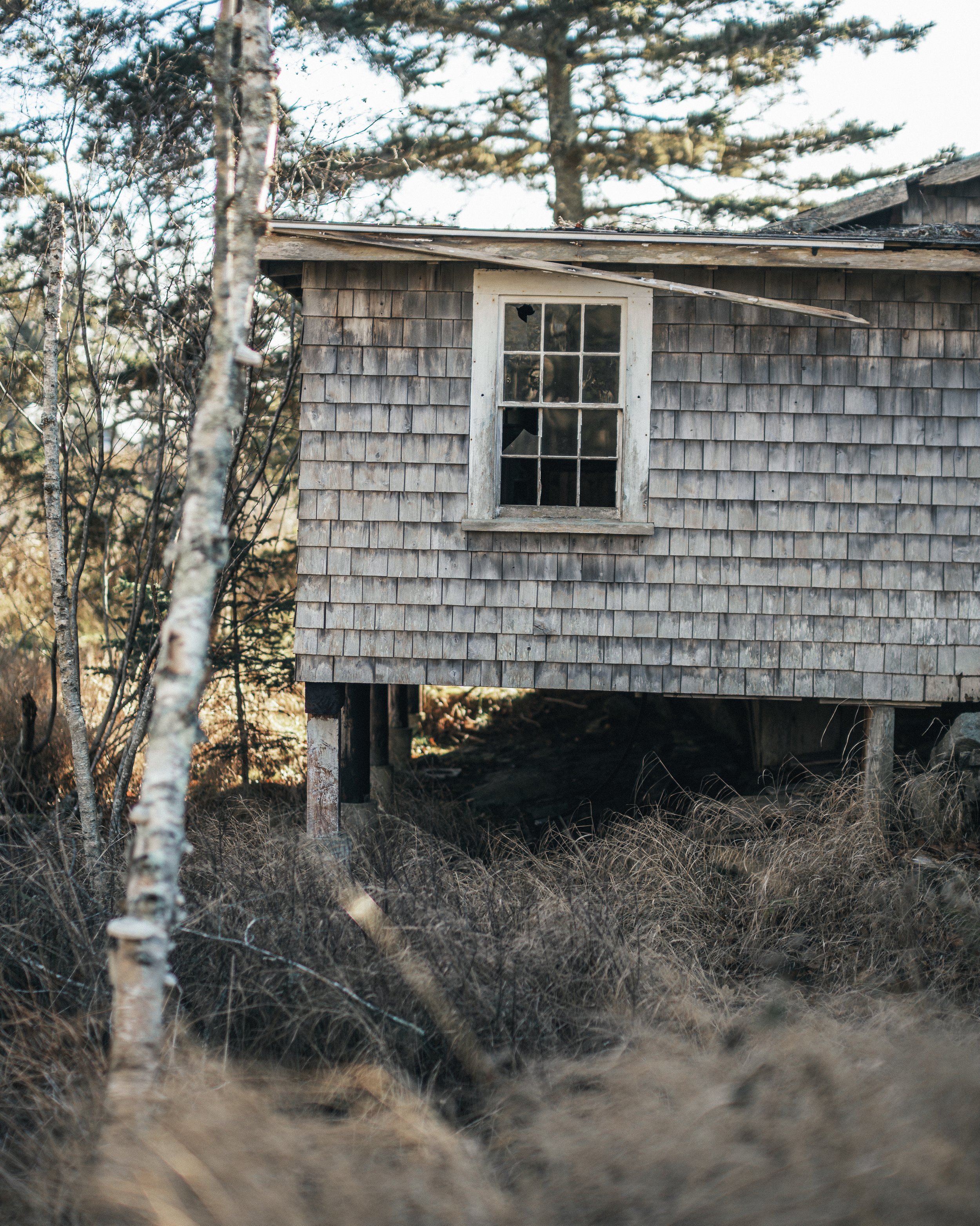
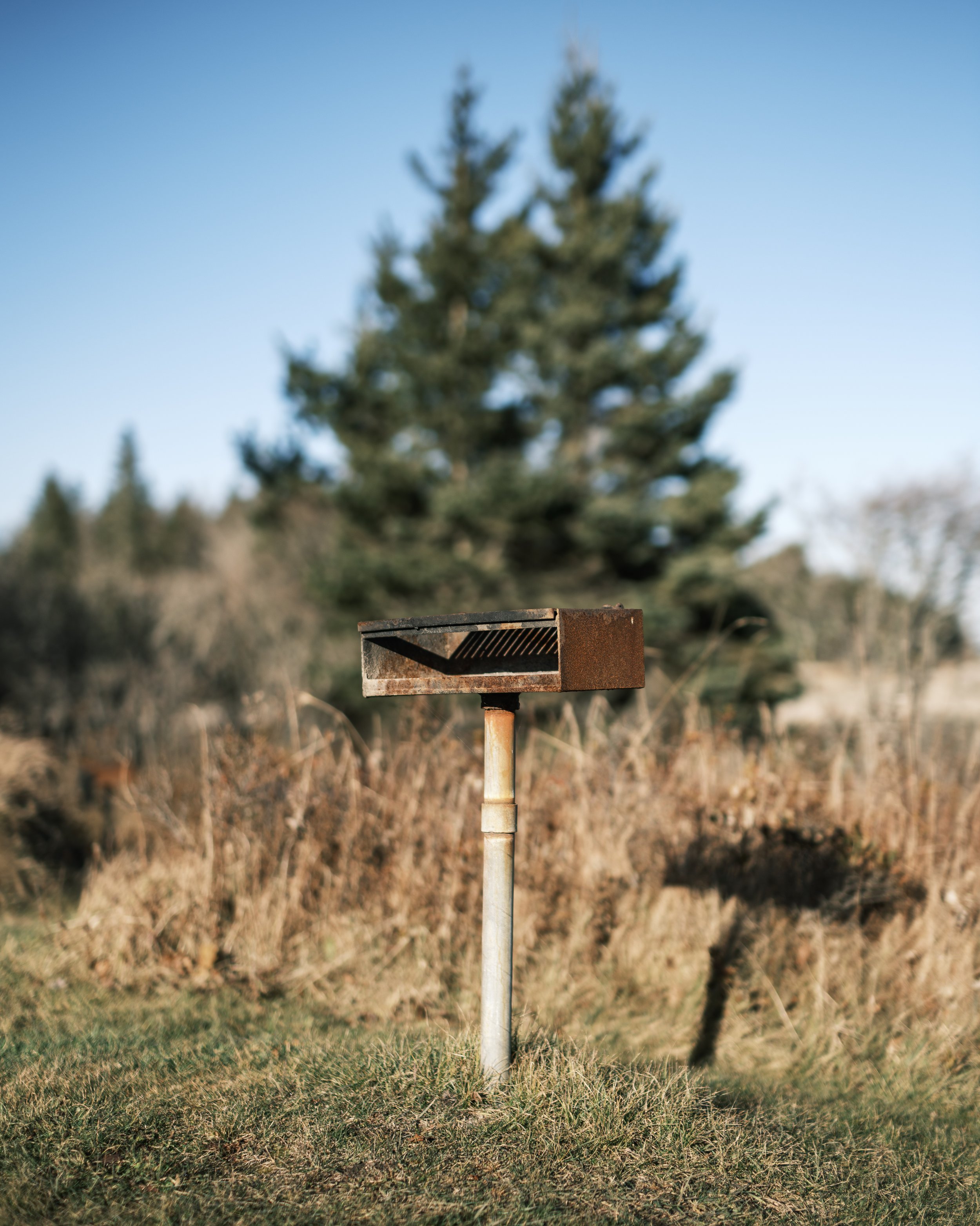
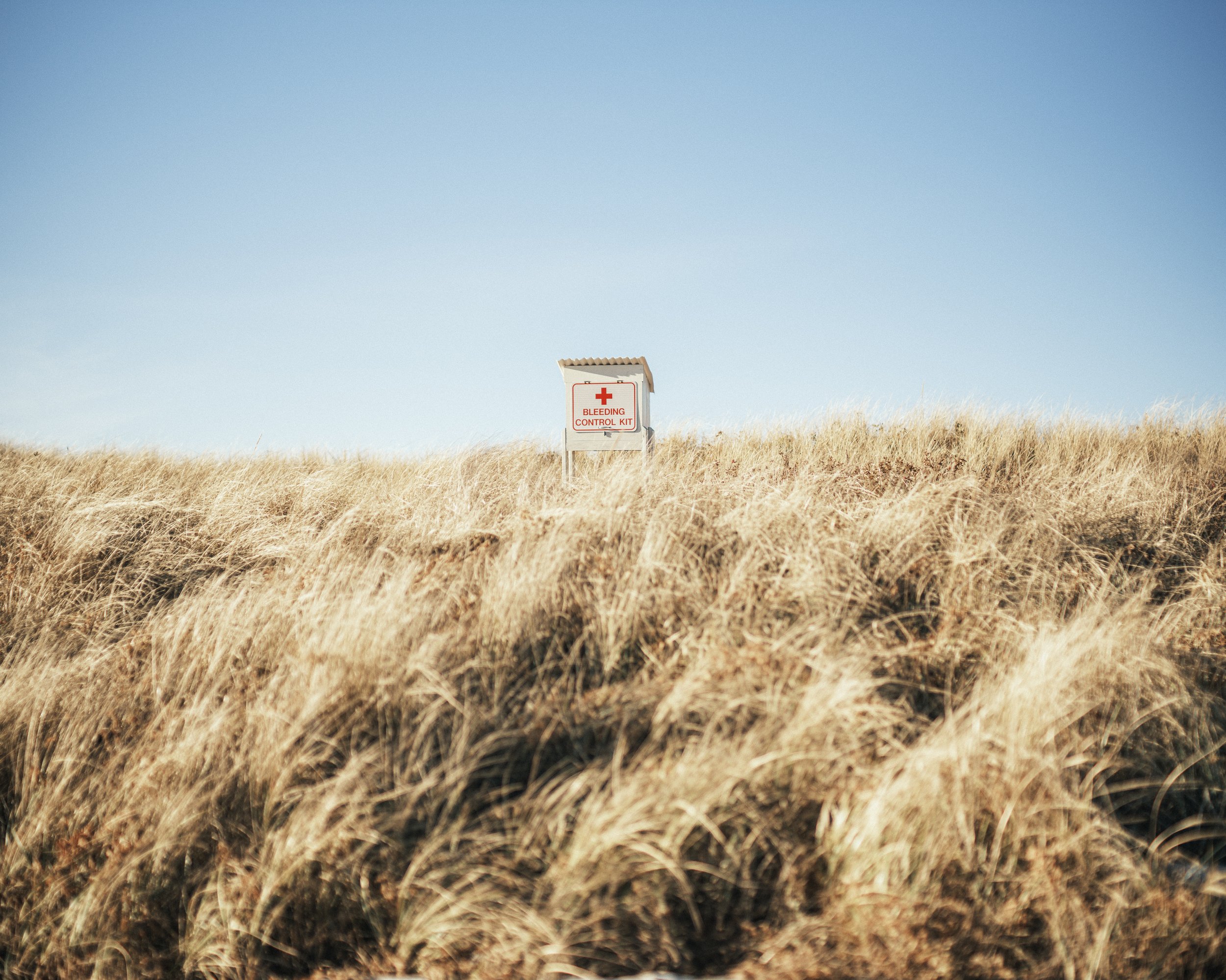
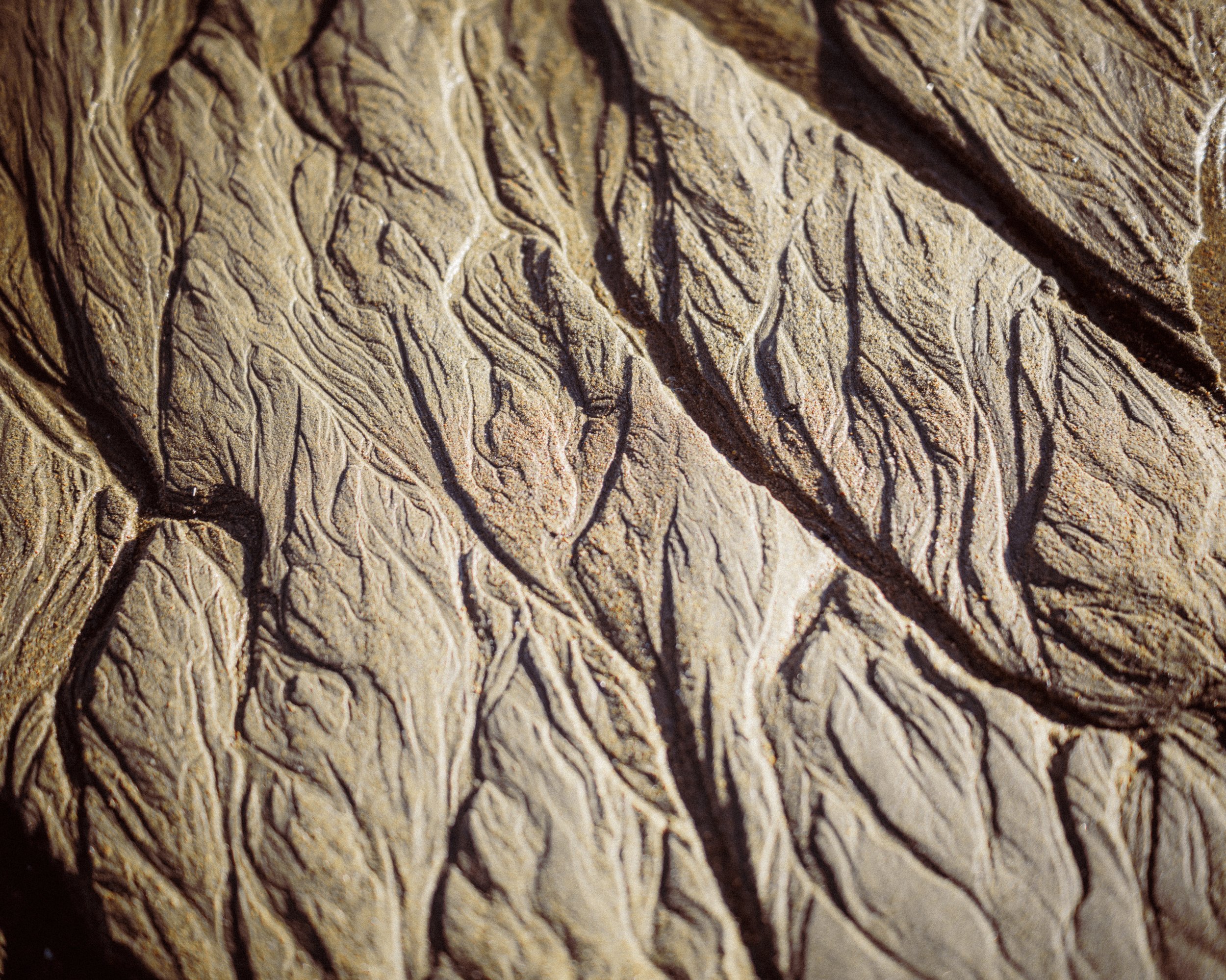

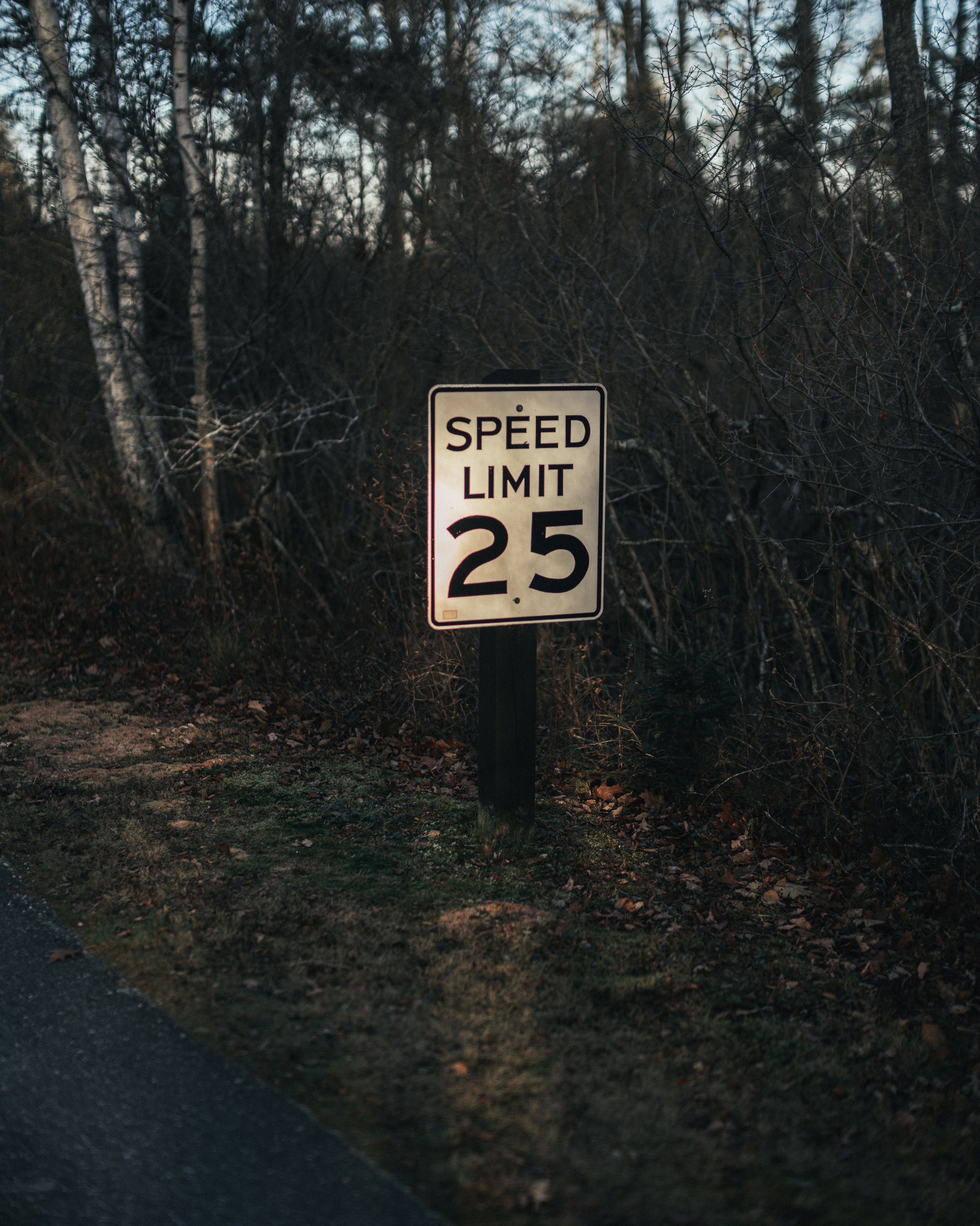
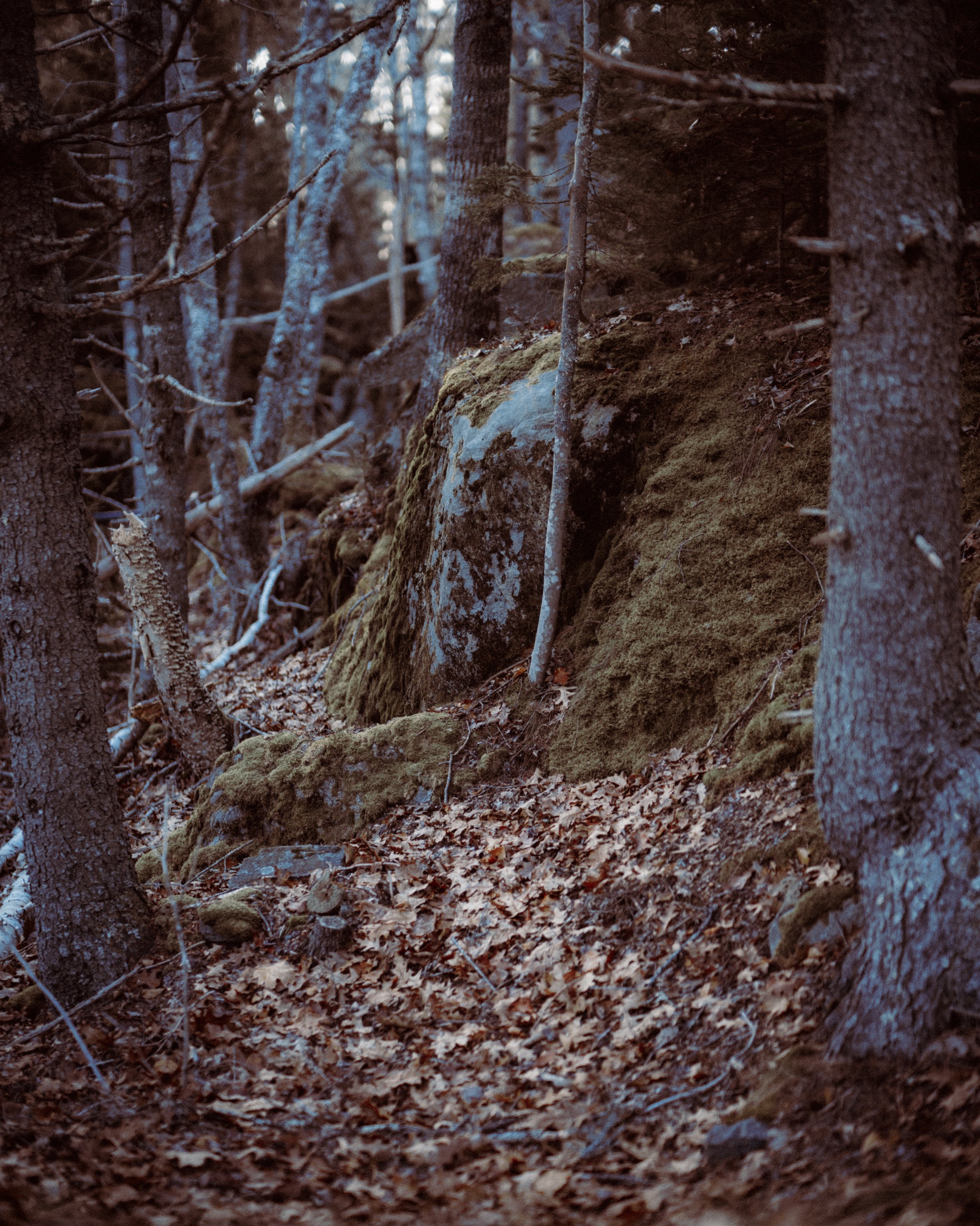
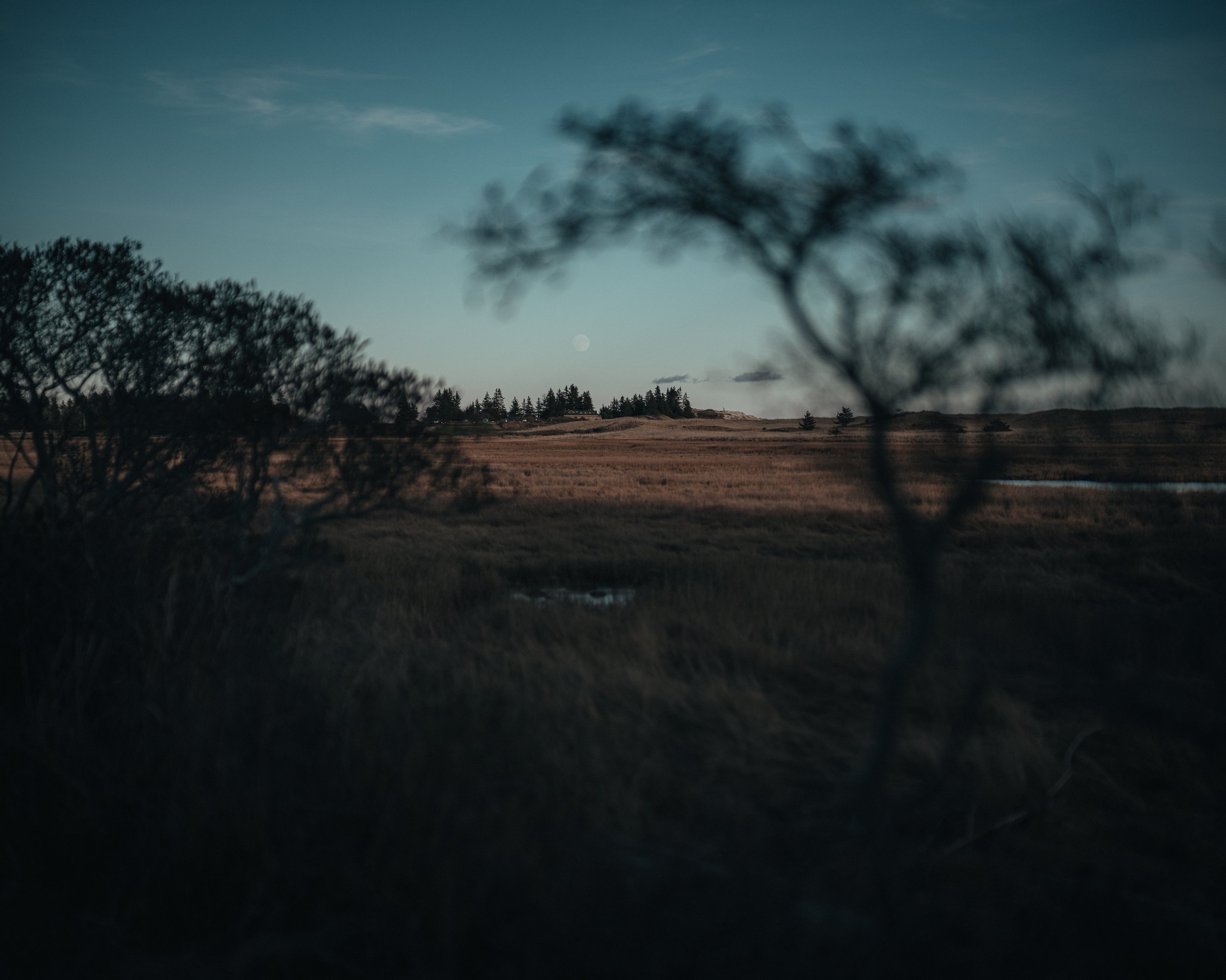

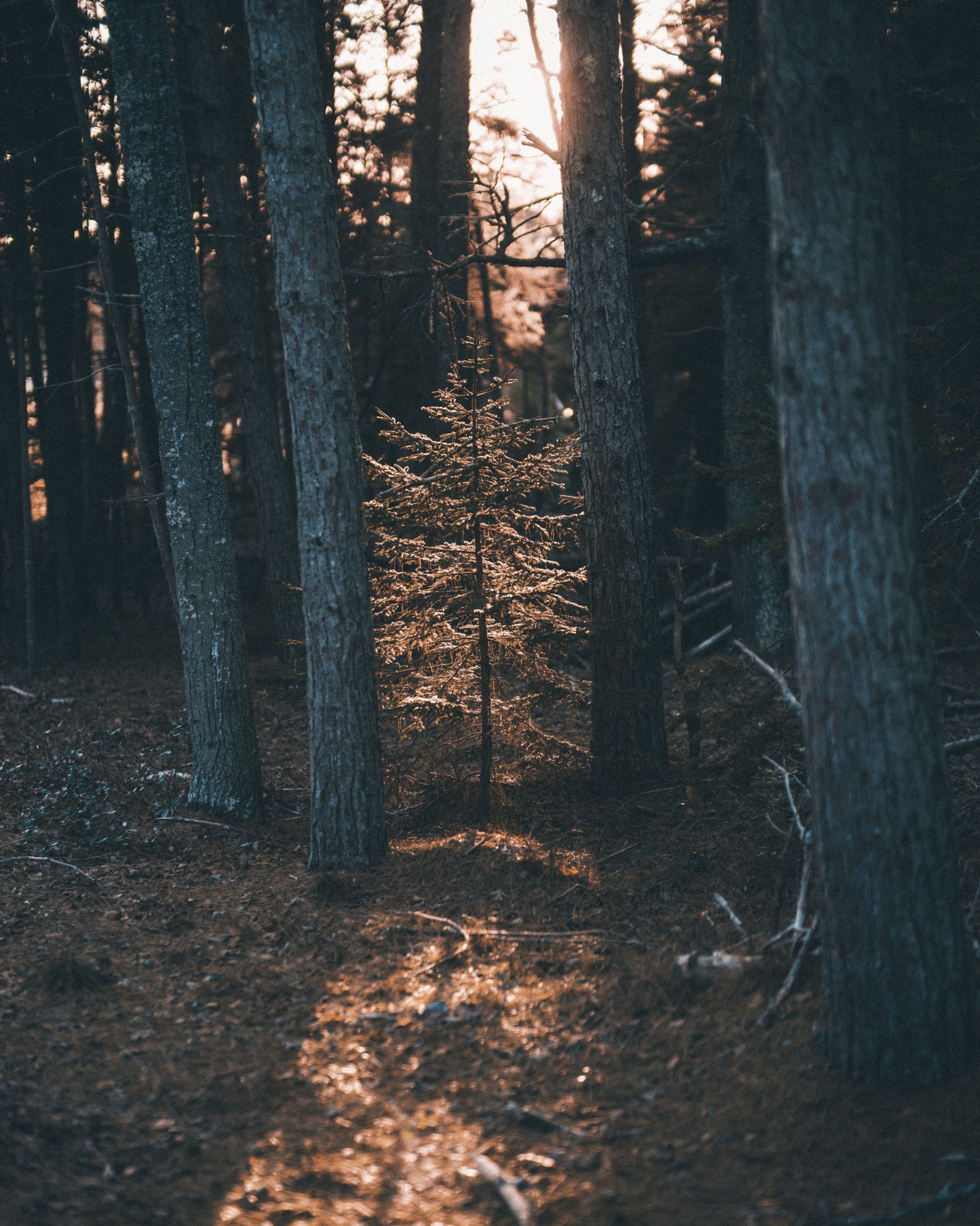
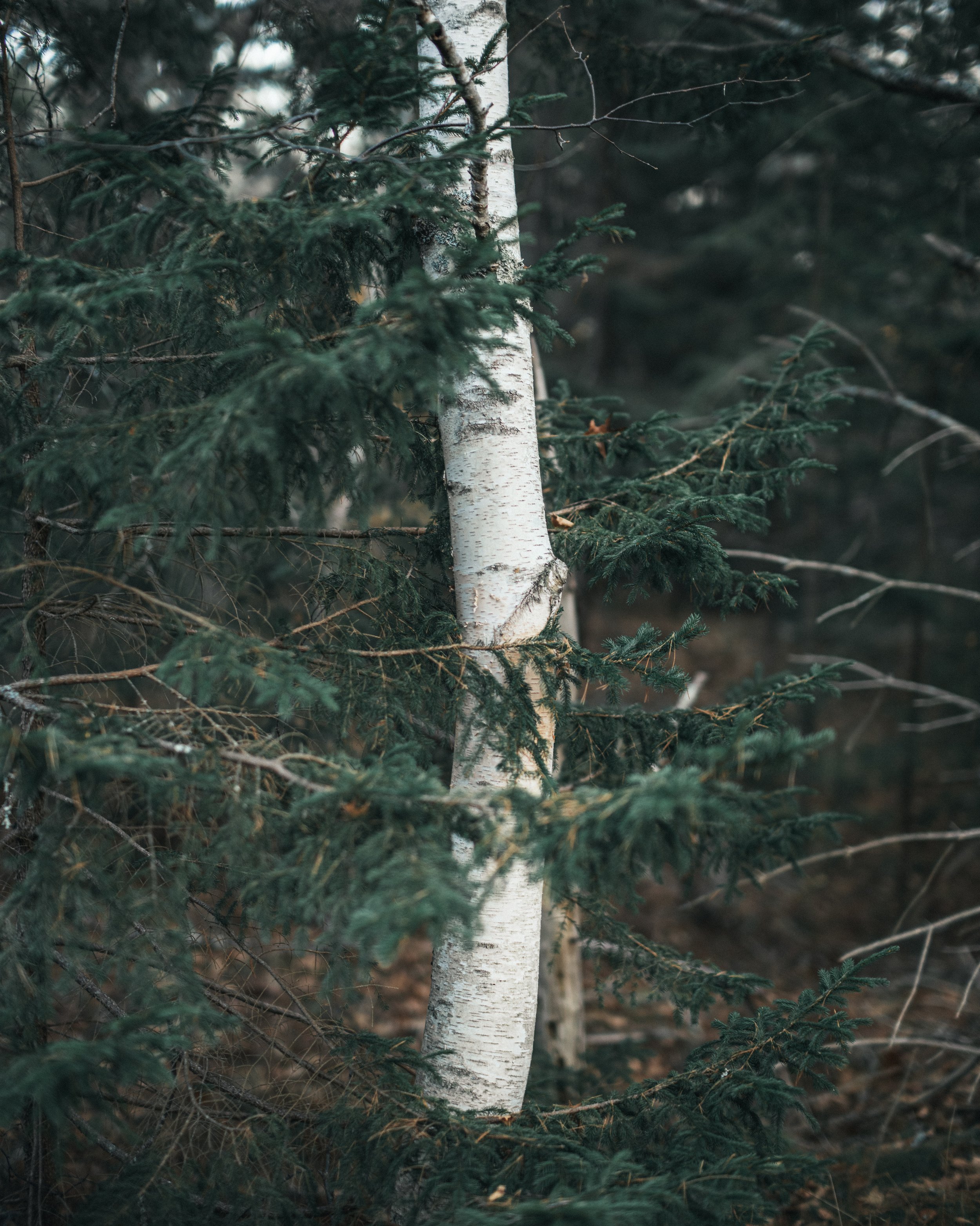
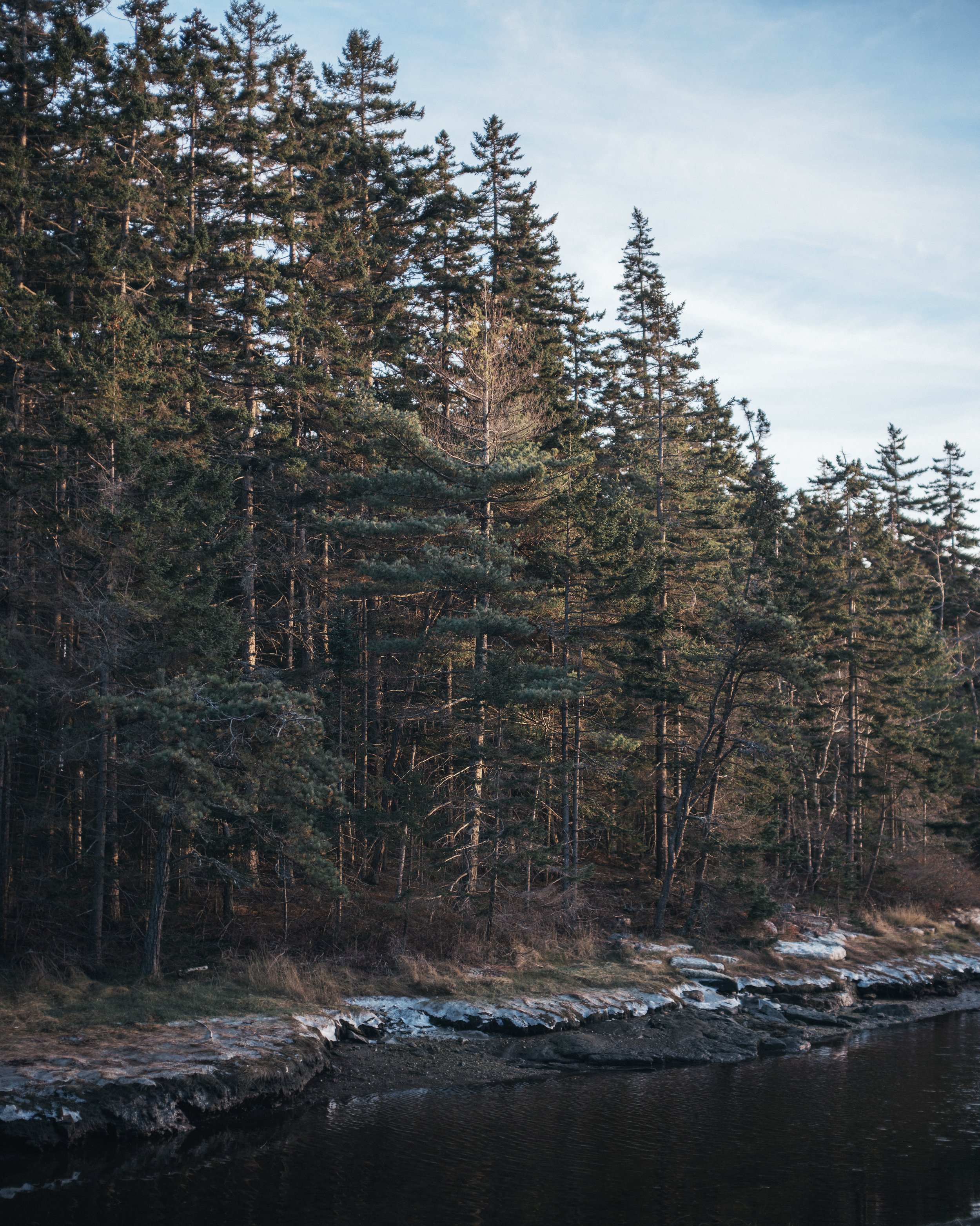
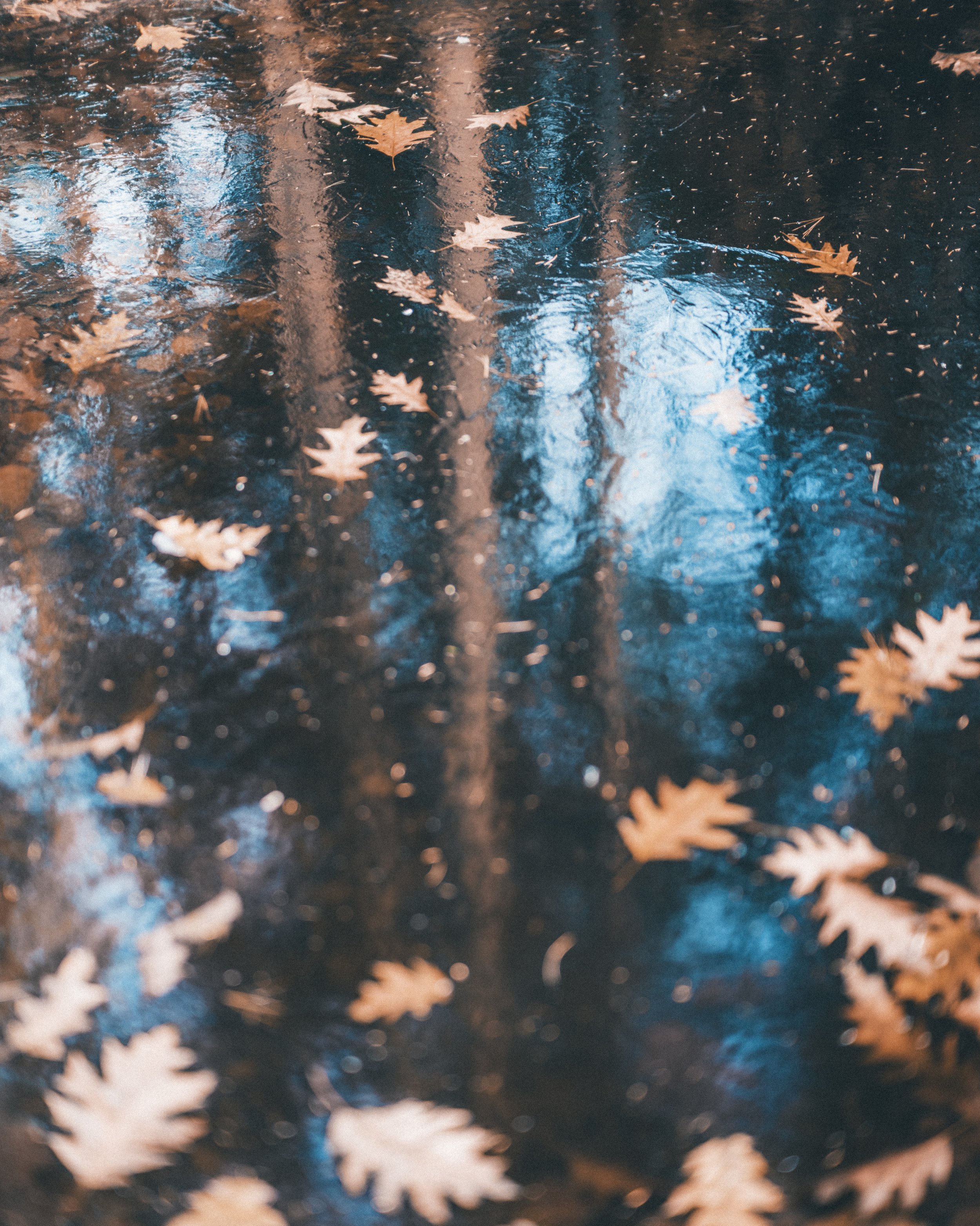
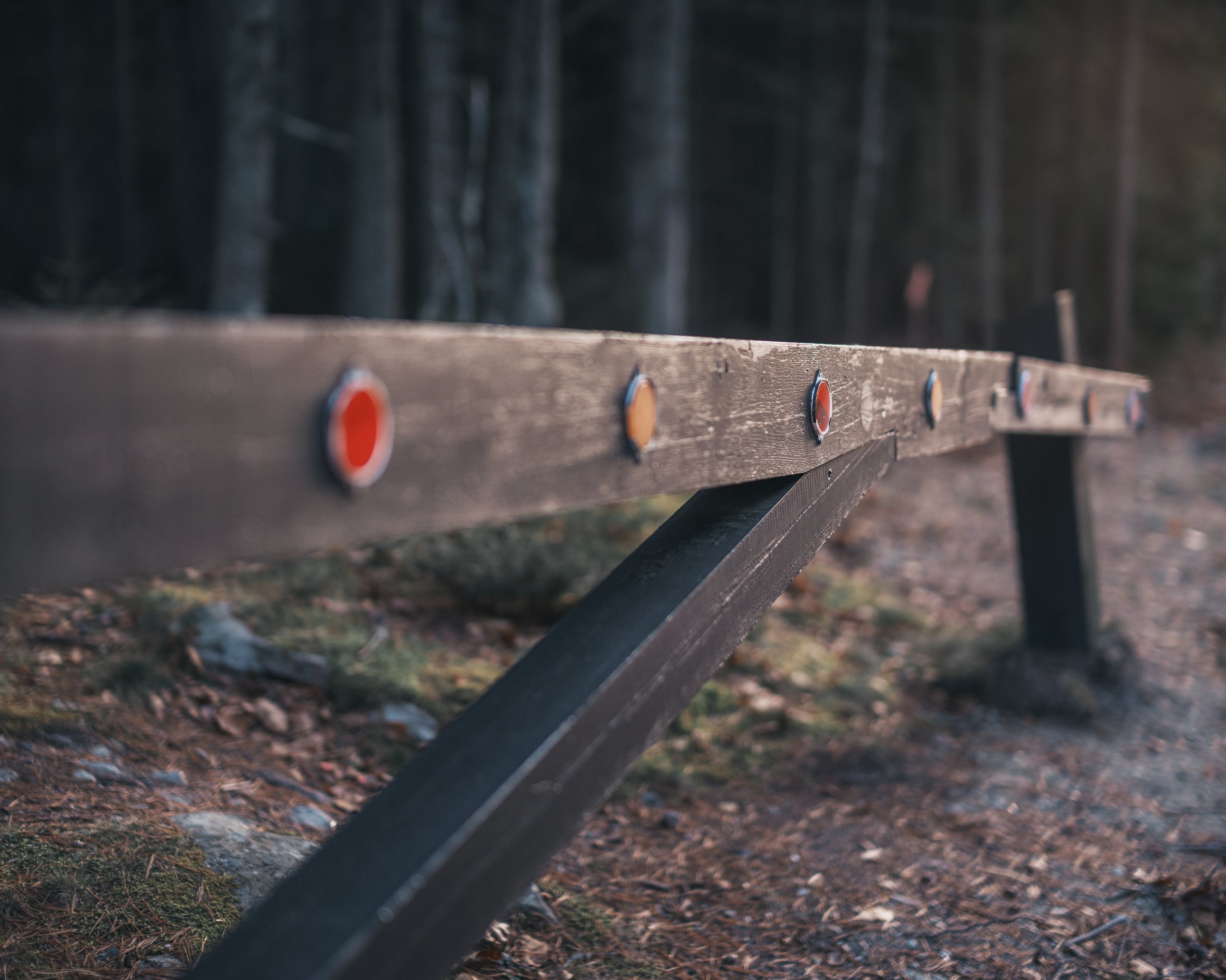
While you’re waiting, take some photos
Capturing a bit of lingering autumn while waiting on my kid.
Taking someone to an appointment and waiting in the car? Don’t play Solitaire on your phone for the billionth time. Walk around and take some photos. Here are mine from today’s wait.
Alcatraz
I finally escaped the mainland.
I’ve been meaning to visit Alcatraz when I’m in the San Francisco Bay Area and fortunately before my recent work trip I finally remembered to book a ticket. As expected, Alcatraz was in many ways an old, decrepit prison. Actually, in all the ways. But the history is interesting and the views from the middle of the bay are fantastic.
When I arrived at SFO, I hurried from the airport to my hotel, checked in, and walked to the Alcatraz ferry to catch the last tour of the day. I took along my Fujifilm GFX 50S ii with Mitakon 65mm f1.4 and an adapted Yashica 50mm f1.9.
The latter is difficult to love, but if you’re drawn to photos that look nostalgic, that’s your lens. It’s easy to tell which of these photos were taken with the Yashica because of the heavy vignetting. That lens was only intended to cover 35mm film.
Regardless, I got a few shots I’m happy with from both lenses and quite enjoyed the afternoon ignoring the audio tour, exploring on my own, and nearly stealing the audio tour player as it beeped at me while 300 people in the return ferry line stared.
I find myself needing to balance how much of my life is dedicated to taking photos, so I made a point of only shooting one day and putting my camera away during the rest of the trip. That meant that, for this trip, Alcatraz and the tourist-y nearby Fisherman’s Wharf area is all I managed to shoot this time.
Using newer Fujifilm film simulations with older Fujifilm cameras
I love my older camera but Classic Neg is my jam. What to do?
After my post about GAS, I’ve been making a conscious effort to use the perfectly great gear I already own. This weekend, that meant shooting my Fujifilm XF10 exclusively while out exploring rural Maine. In my opinion, this is one of the top 2 or 3 cameras Fujifilm has ever made. The results are amazing, it fits in a pocket or fanny pack, and it is much, much less expensive than the comparable but much less portable Leica Q series.
I only have 2 problems with this camera: the lack of viewfinder; and the lack of more recent film simulations, particularly Classic Negative. The former is easy enough to work around in most conditions and is table stakes for a camera that [actually] fits in your pocket. The latter is painful, especially since I’ve started dialing in a look with a handful of Lightroom presets that are all based on Classic Neg. When your camera doesn’t support the profile, the preset is shown in italics and doesn’t properly apply (I think it falls back to Adobe Standard profile, but someone can correct me in the comments).
A long time ago I came across a random blog post (that I can’t seem to find now) that showed how to edit the camera profile to remove the camera model restriction. I’d forgotten how to do it since I’ve been shooting cameras recently that had the Classic Neg profile natively available. So I dug into the application bundle and figured it out.
Quit Lightroom Classic.
In a text editor, open the profile file from a camera that does support the profile you want to use. This will be an
.xmpfile. On Mac, it’s located at/Applications/Adobe Lightroom Classic/Adobe Lightroom Classic.app/Contents/Resources/Settings/Adobe/Profiles/Camera/Fujifilm/Fujifilm X-T5/Fujifilm X-T5 Camera CLASSIC Neg.xmp. (Just theFujifilmfolder will show you other cameras). There are 2 ways to get there:In a Finder window, go to the Lightroom Classic
.appin yourApplicationsfolder, right/2-finger click, choose ‘Show Package Contents,’ and continue navigating through the directories until you get to the.xmpfile.In a Finder window, type
⌘-shift-Gand paste the path above.
Find the line that says
crs:CameraModelRestriction="Fujifilm X-T5"and remove the part inside the quotes. Do not remove the whole line, just empty the string in the quotes. It will look like this:crs:CameraModelRestriction="".Save a copy of the file in a new location.
Back in the finder, drag your edited version of the file into the original directory. You will be asked if you want to replace the file (you do), and you will be asked to enter your system password to allow the replacement to happen.
Open Lightroom Classic, go to Develop, and choose a file from your older camera. You should now see “Camera CLASSIC Neg” in the profile menu and presets that use that profile should show normally.
Repeat with the file for other newer profiles you want available (Acros, anyone?).
Unfortunately, major Lightroom Classic updates (like the recent v12 to v13) will reverse your edit since the files get replaced. That’s okay, just bookmark this post and do it again.
I’m not sure how much you can push this. I’m assuming that you still need to have a camera with a Fujifilm APS-C sensor to apply profiles intended for other APS-C sensors. So, even if it were available in Lightroom yet, I don’t think I could apply the new GFX 100 ii’s Reala Ace profile to photos from APS-C sensors. But of course, you know I’ll try.
Here are some XF10 photos from the weekend that I’ve used the Classic Neg simulation to edit. A couple are re-edits from the originals I posted on Glass.
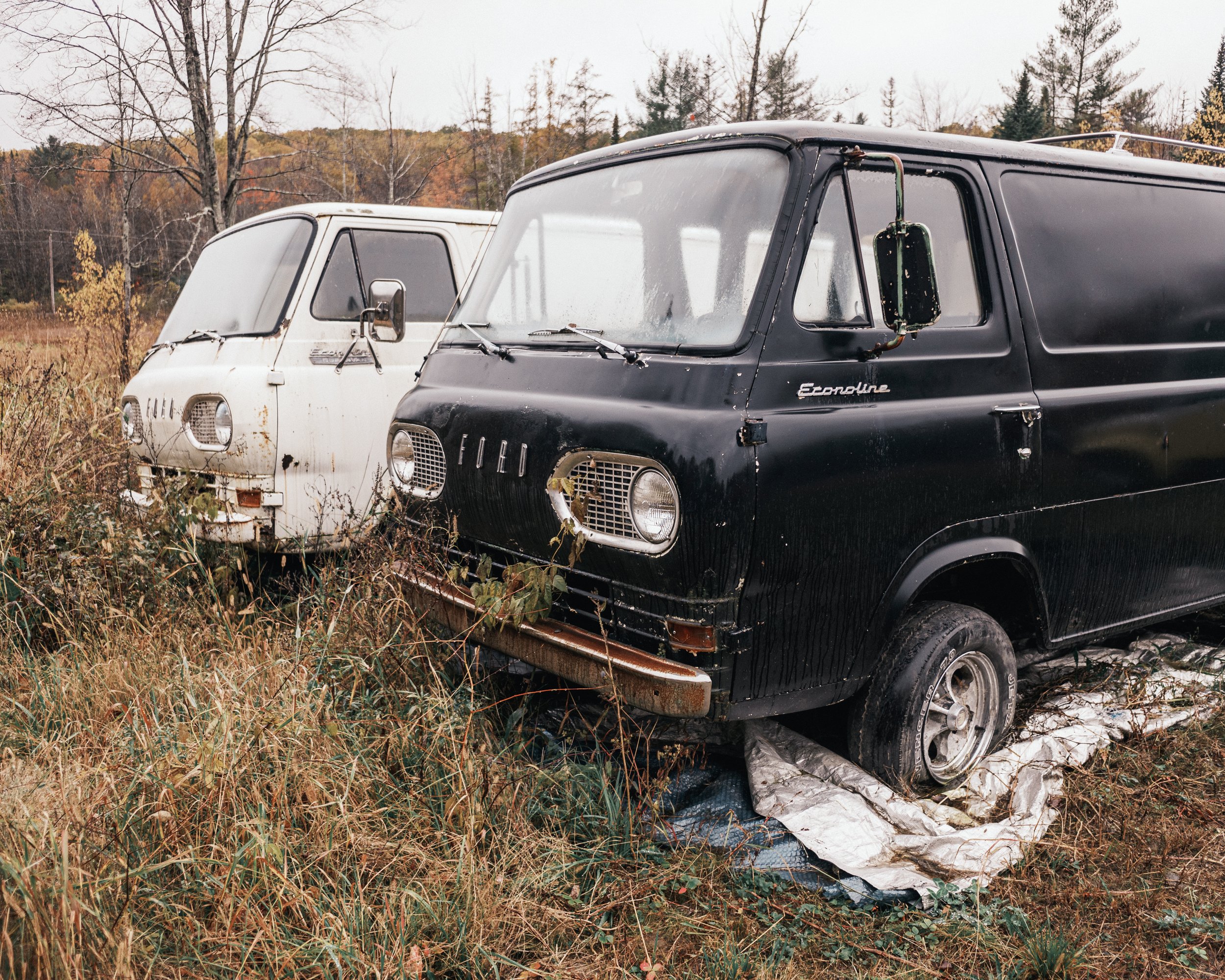
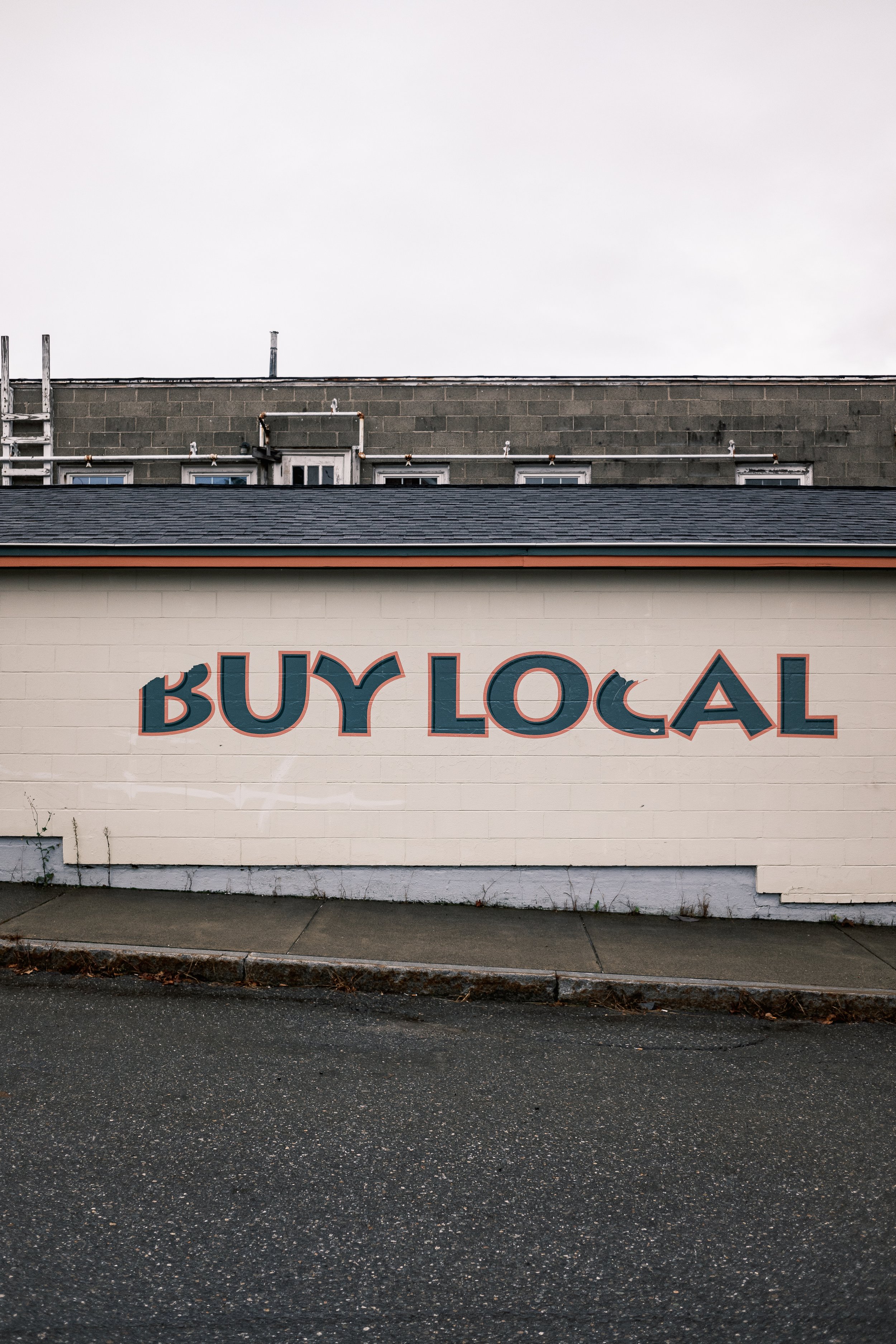
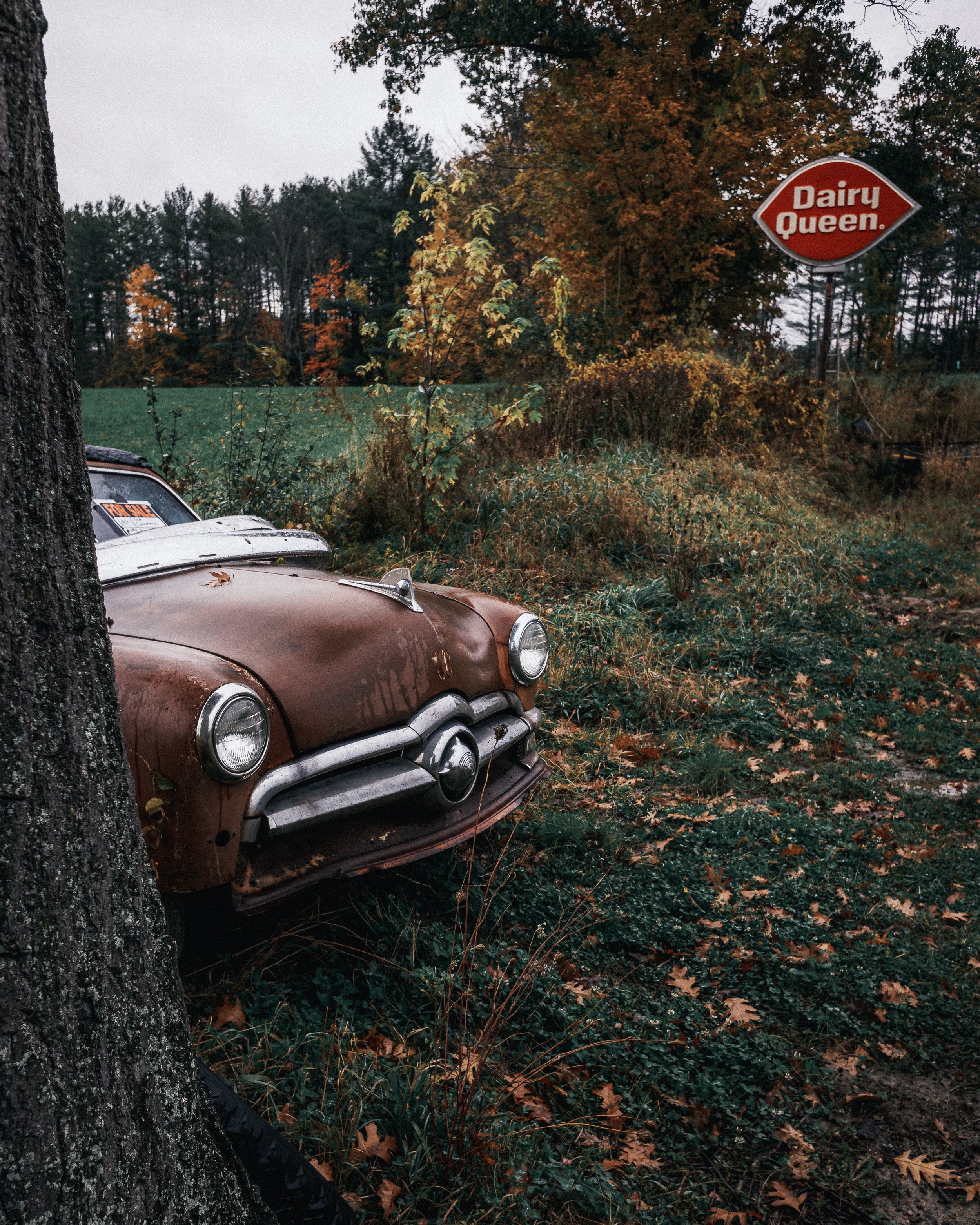
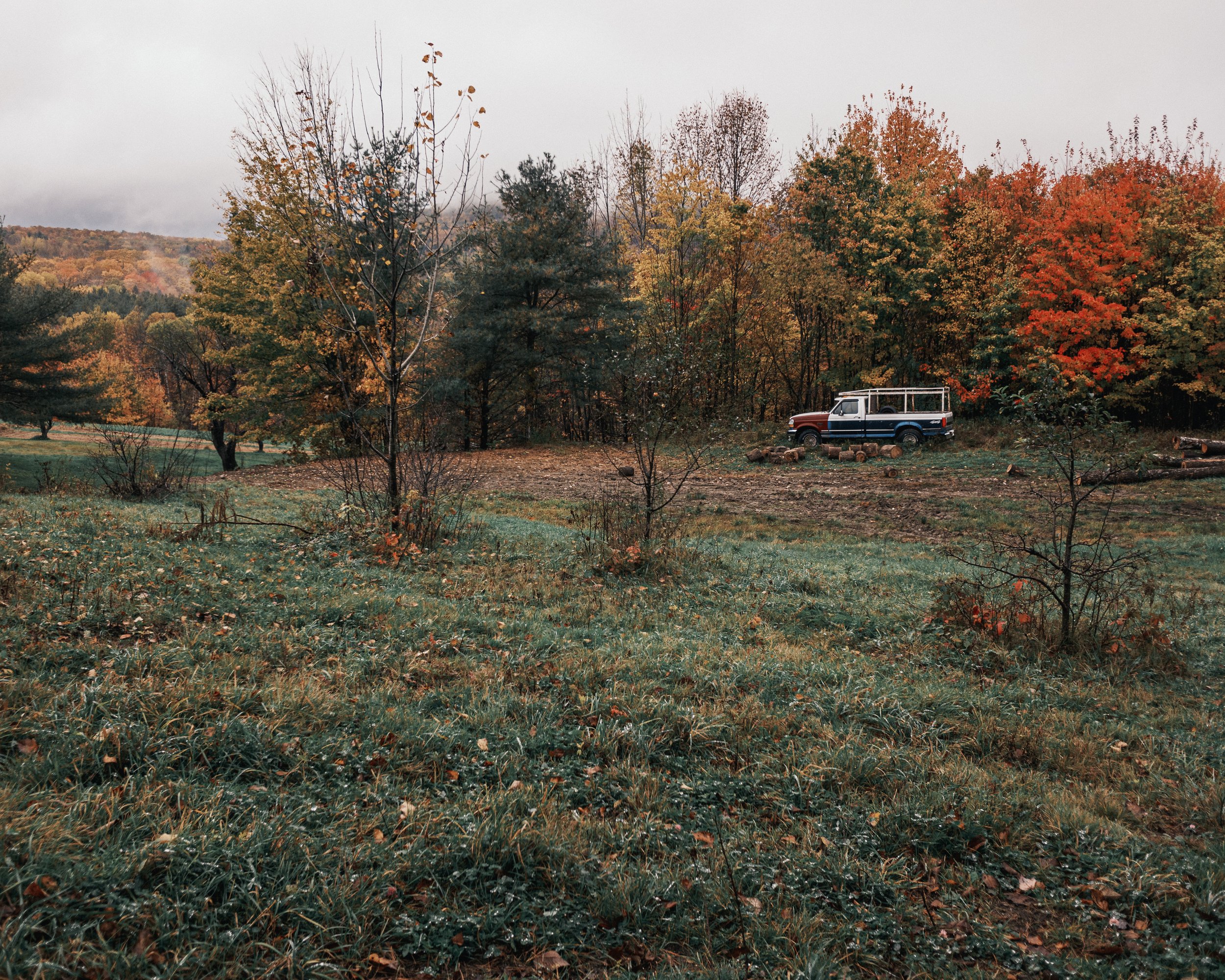
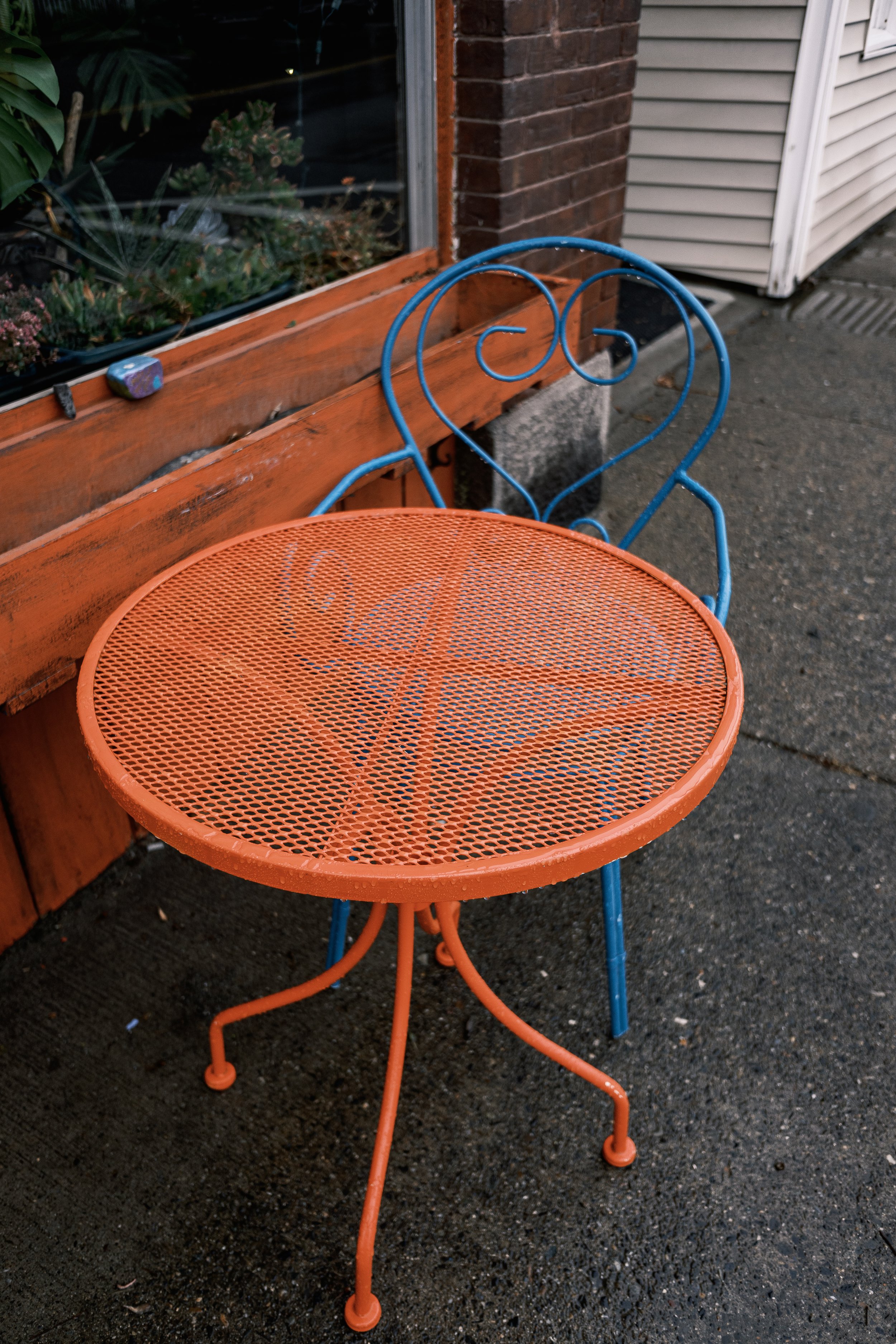
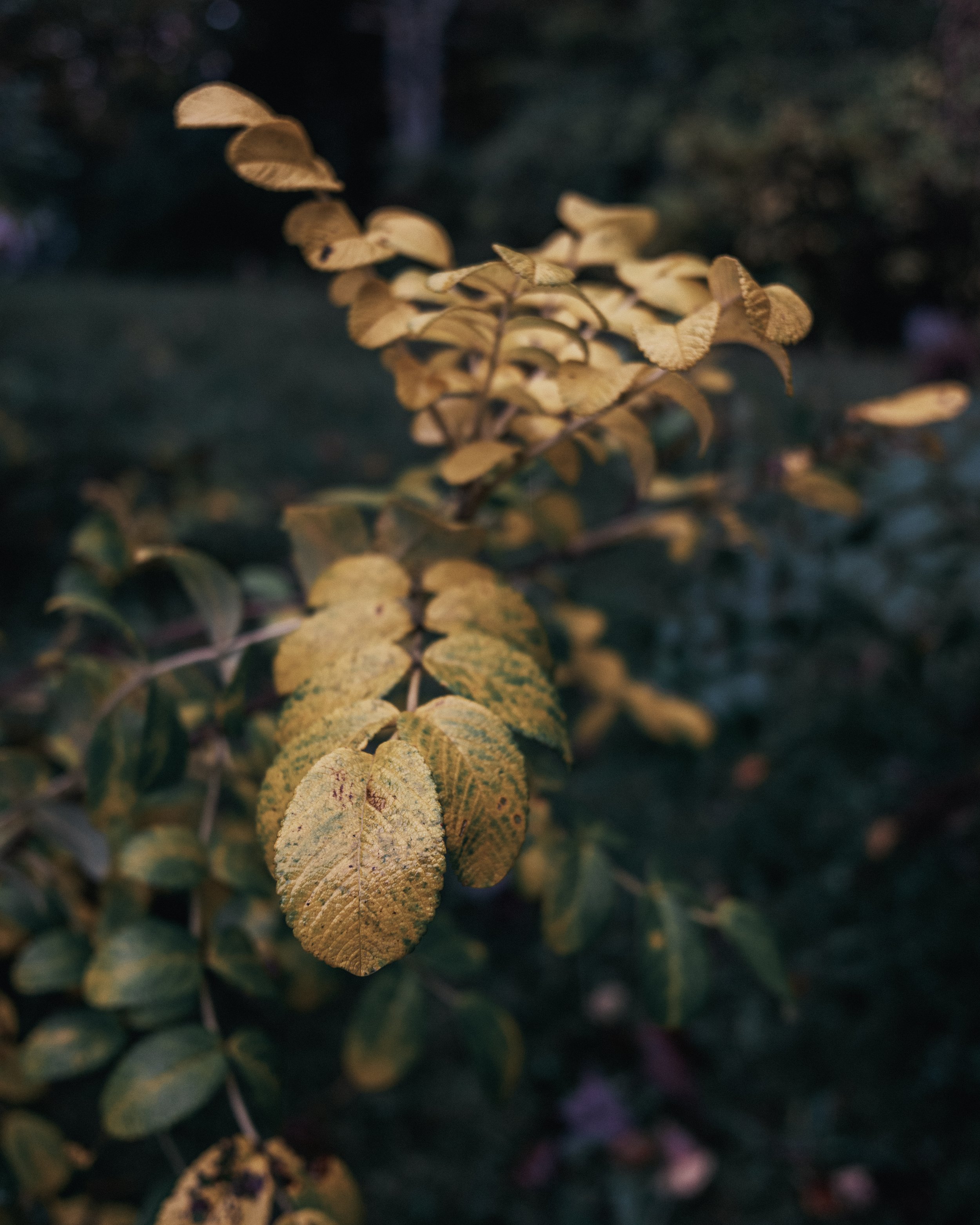
Dealing with a bad case of GAS
No fart jokes will be made here. This is serious stuff. Okay, one fart joke will be made.
Anyone who is into any hobby is familiar with Gear Acquisition Syndrome. Like screen addiction, it’s easy to tell when you have this disease and difficult to cure it. Photographers talk about GAS often, but it’s not unique to them. Any time a large enough group of people express interest in an activity, the gears of capitalism get greased and amazing must-have stuff is marketed incessantly toward those people. Sometimes the marketing isn’t obvious. Sometimes it’s just noticing the lens being used in a video about composition, or the camera used in a beautiful photo on Glass. Our brains make a connection between the quality of the work and the equipment being used. Add some disposable income—or a willingness to take on debt—and we make purchases we never would’ve dreamed of making when we first decided a smartphone’s camera wasn’t quite good enough.
Like most addictions, the first step to a cure is admitting the problem. So here it is: I suffer from a chronic case of GAS.
Well, that was easy. Problem solved!
But really, what am I going to do about it? Here are some immediate ideas I’ve been contemplating:
Return all gear that is returnable. At this point, that includes my favorite camera, the Fujifilm GFX 50R, and a couple lenses for it.
Pros: best case financially. Leaves me with a good X-mount system and low financial obligation.
Cons: will lose the camera that is helping me define a look I’m very happy with. I feel like crying when I think of it.
Partial solution: really only one of the lenses is must-have, return the other (and some other random stuff).
Leave everything as it is now but buy nothing else.
Pros: get to continue using the camera and lens combo I really love.
Cons: doesn’t do much to help the immediate financial situation.
Alternate solution: leave everything as it is, buy nothing else, but figure out a way to make a little extra gear money on the side.
Sell some gear that’s no longer returnable. For instance, I find myself using my X-T5 and its lenses less now that I have the GFX. Maybe I don’t need them?
Pros: would leave me with my favorite kit and help pay it off.
Cons: I have a full range of X-mount zoom lenses that I have used often for landscapes, wildlife, etc. Dealing with eBay is a headache, dealing with MPB or similar gives you very little for your gear. I feel like I would regret this, would want to rebuy at least some of it, and rebuying things you already had is worse financially than the initial acquisition.
Quit photography.
Pros: the stress I feel about acquiring gear, returning it, getting more, and watching its cost add up will cease. I can still take photos on my phone. Even the cost of this website could go away. No more trying to edit a big batch when I really just want to relax and listen to music.
Cons: I love photography. Shooting photos calms me. To think of not having a camera in my hands is more stressful than the GAS-related issues. Other hobbies have the same GAS issues, and I’d definitely need some other hobby, so this is just moving problems around.
One of these—or a mixture—might be the answer to my current state of affairs. But what about next time I love someone else’s photo and realize I could be shooting with the same lens + camera combo? Or I watch a video and love the strap the guy is using? What then? I need a plan moving forward.
Since I’ve always struggled with this issue and don’t really know how to proceed, I decided to pause here and go looking for help. Surely others have addressed the problem—without trying to sell me a book or app or something—right?
[googles stuff]
Here are the best points I’ve compiled from around the internet. I’ve condensed these into my own list, but here are the search results if you’d like to read more. (Don’t miss this piece on the science behind GAS).
Go out and shoot. When you’re shooting with the gear you already own, you’re focused on nothing but taking photos. We tend to want what we don’t have when we’re browsing the web, watching YouTube, scrolling sales.
Revisit information about your current gear. Read reviews or watch videos that were created when your current gear was new. If you’re like me, that might’ve been within the year. Remind yourself that what you have already is really pretty good and gives you all the leeway you need to create epic masterpieces.
Let someone else control the credit card. One small change that could help my GAS problem moving forward is to let my wife change my B&H password. No more buying one more thing because it’s interest free anyway…
Avoid known GAS-triggering sources. If a photography forum makes you want stuff instead of improving your work, it’s a net negative for your bank account and mental health. Block YouTube channels that feature nothing but new gear reviews. If you have a legitimate need for another camera someday, you can always find the information. But make it intentional, active not passive.
Stick to one camera and one lens. This is actually a fun constraint to impose in general. It makes you seem really cool to other photographers, and saves you a metric butt ton of money. Plus, the positive effects of self-imposed constraints on creative endeavors are well documented. In my current predicament, my immediate thought would be the combo I should probably be returning…
Don’t chase bokeh or sharpness or other non-compositional image characteristics in gear. This one gets me. I even published a post recently comparing very similar lens + camera combinations and decided on the more expensive option largely because the bokeh and focus falloff was a little better. I still think that money and GAS aside, that’s the look I love and therefore the GFX version is better. But convincing ourselves of things in that way can be a never ending road of chasing the next slightly-better-in-one-regard version of something we already own.
Gear can’t bring happiness. If money has any association with happiness at all, it’s in financial security. Not enough is a problem. Too much is usually a problem. Spending what you have on things you don’t need so that you add even a small amount of financial stress for yourself or your family is a recipe for unhappiness. Money in the bank lets you breathe a little easier. Money wrapped up in (depreciating) gear brings stress.
Showing off is for children. If I’m honest, some gear purchases have been made so that I appear knowledgeable or just plain cool to other photographers (usually on Glass). I’ve asked for and received gear recommendations from others. And many of those recommendations I’ve bought and tried out, if for no other reason than to be able to show the person that suggested the product that I’d used it and be able to have an opinion about it. This is silly, I’m an adult. (Side note: even the best social media platforms make it hard to not fall into this trap. We’re social, we want our peers to think highly of us.)
I think that about covers it. I haven’t decided on my own next step, but I hope that laying this all out helps someone else struggling with pants-ripping GAS.
Update: I’ve decided to keep the GFX 50r and the Mitakon lens and return the rest. I’m also implementing a hard moratorium on additional gear purchases for the foreseeable future. I think this will work for me—a little reward to ease the pain of no additional buying. We’ll see.
New update: Nope, I’m returning everything I can. My goal is to make my photography gear pay for itself. Someday, I’ll add that sweet chonky GFX boi back to my stable. I can’t wait.




